1 120 ASIA’S BEST URBAN OASES 104 VIETNAM BUILDS MOMENTUM 112 CLOCK TICKING ON JOKOWI SODA PROVIDES DESIGN FIZZ 86 INDIA CLEANS UP HOUSE 131 MALAYSIA’S COAST WITH THE MOST 70 NO. 164 PROPERTY-REPORT.COM USD10; SGD13; IDR135,000; MYR41; THB330
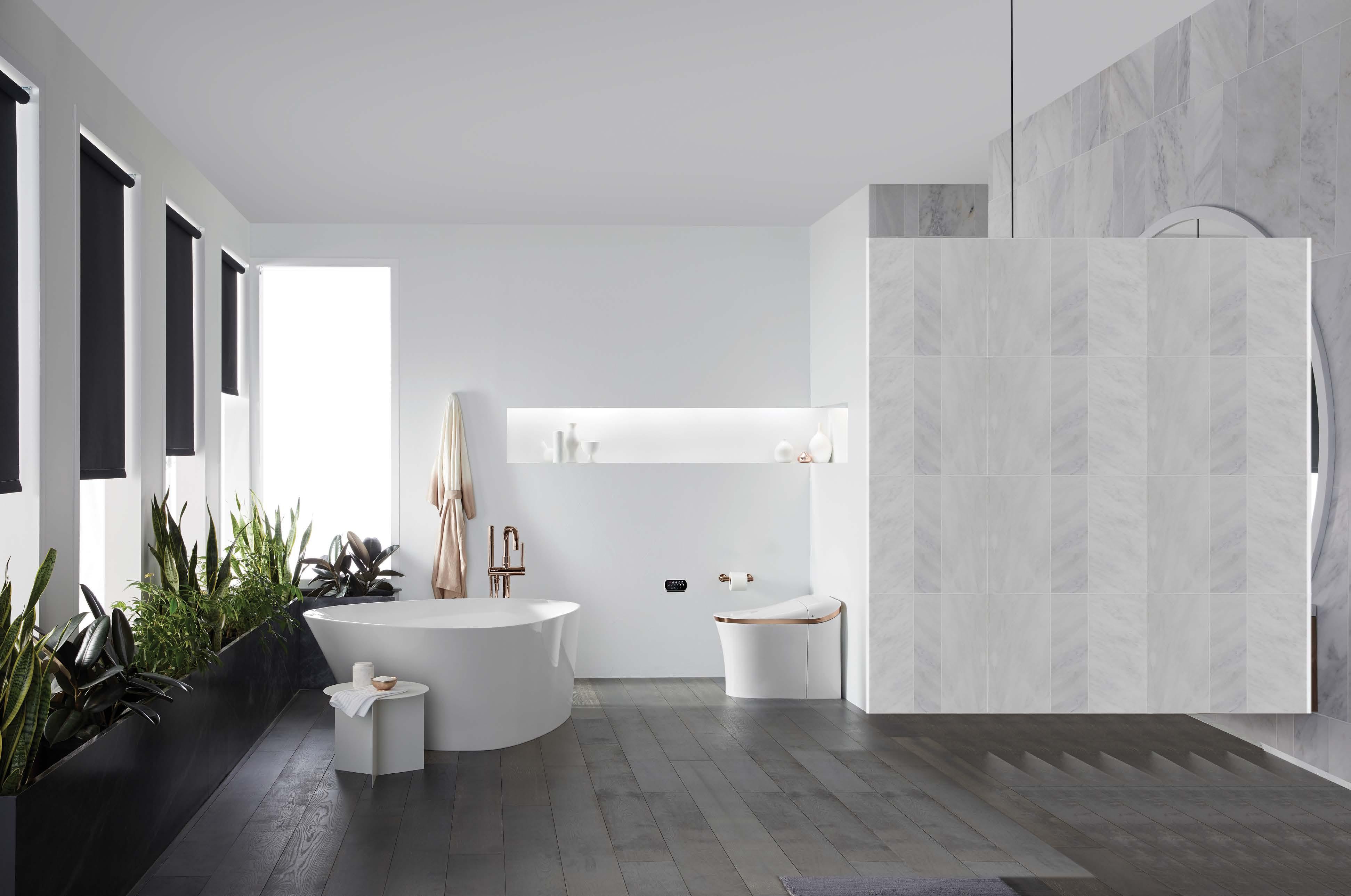













3
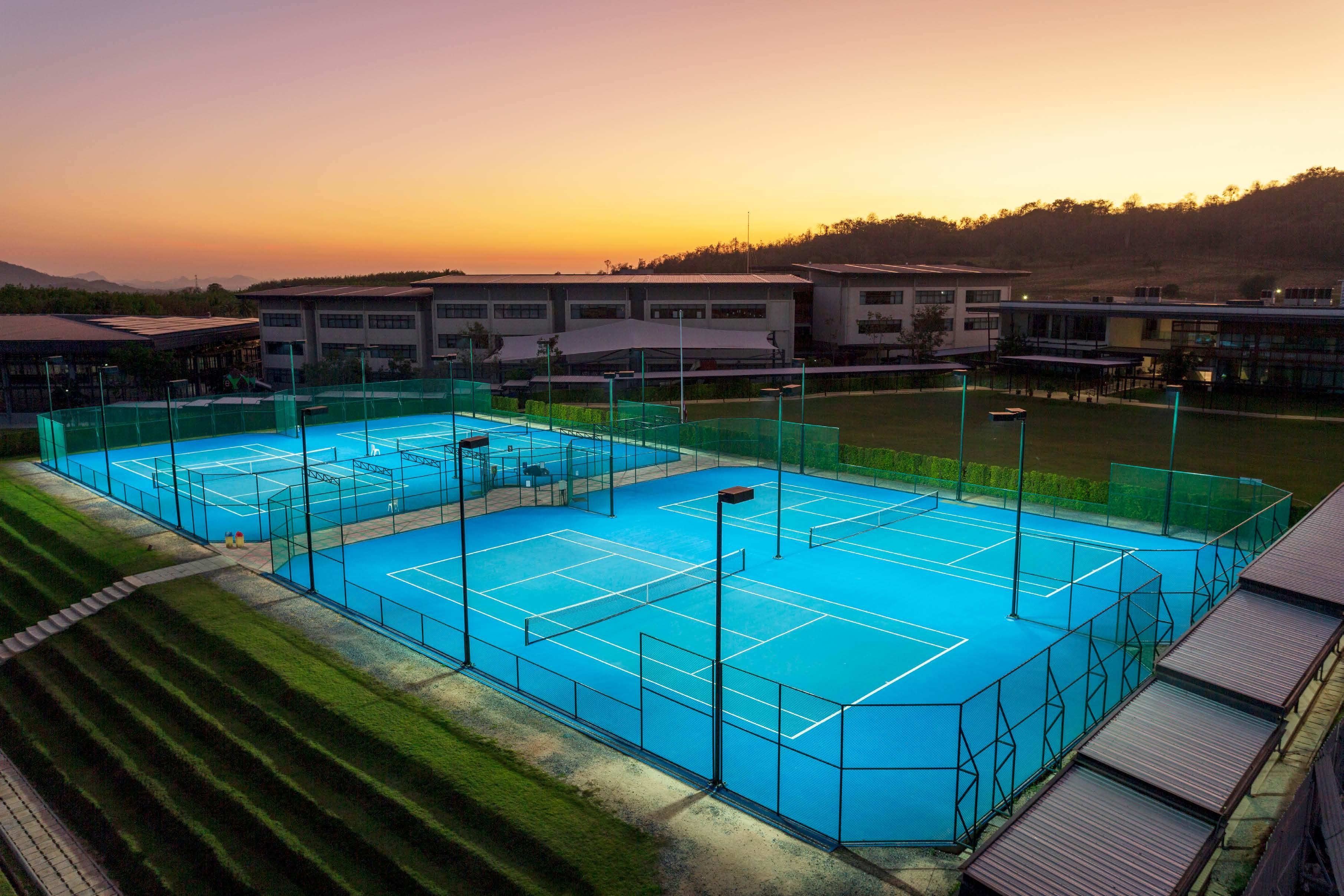
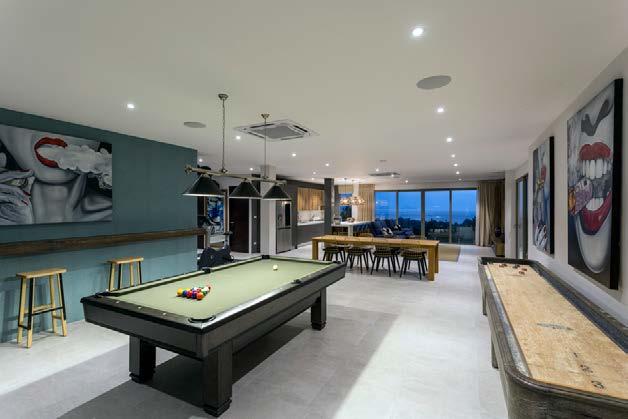
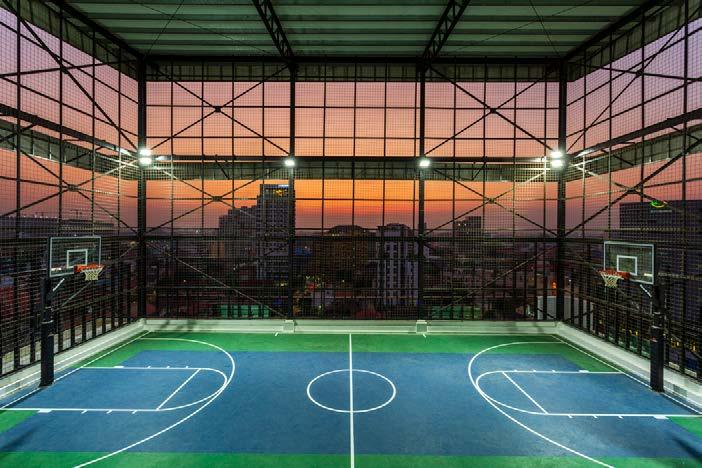
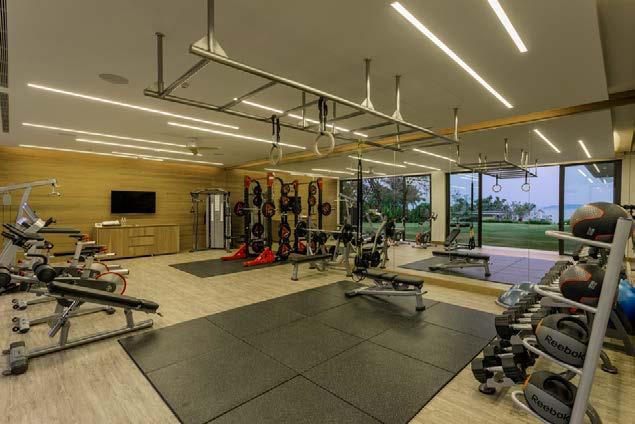
Pullman Residences
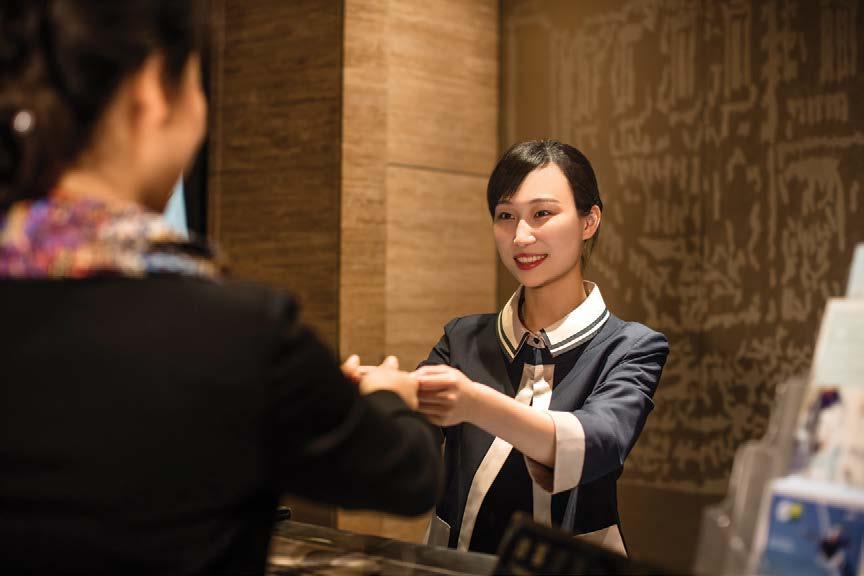


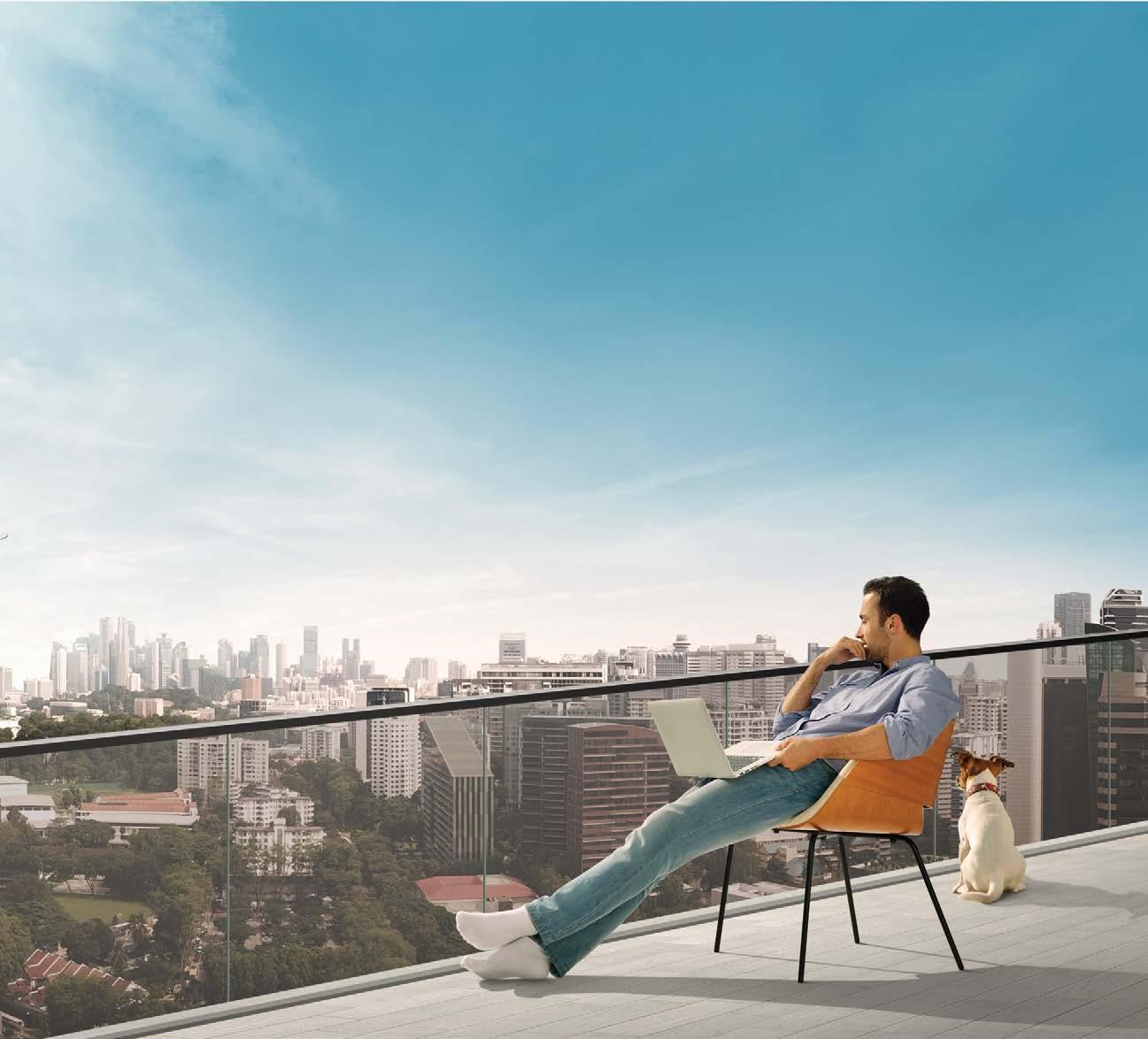
6 7
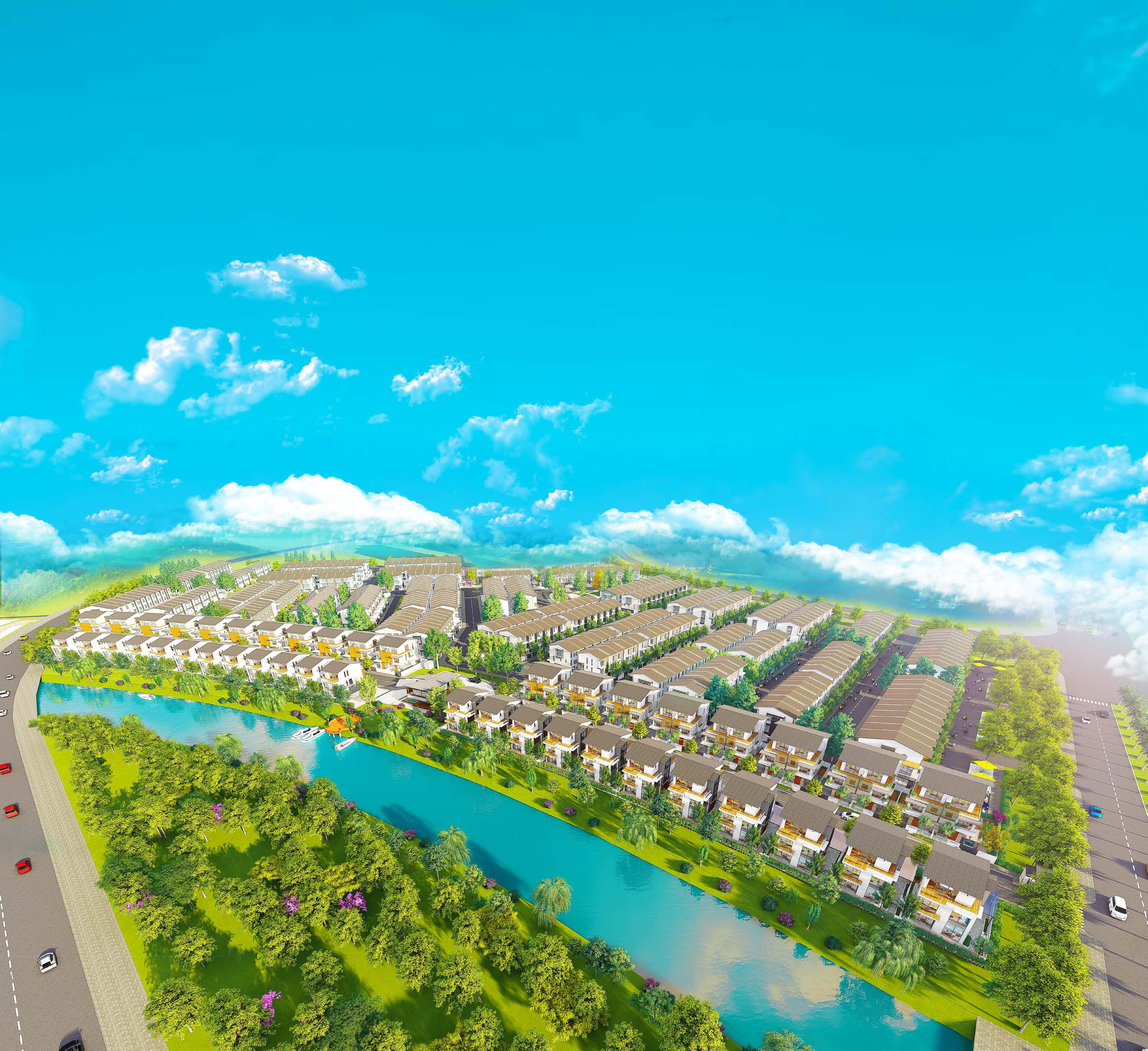

8 9
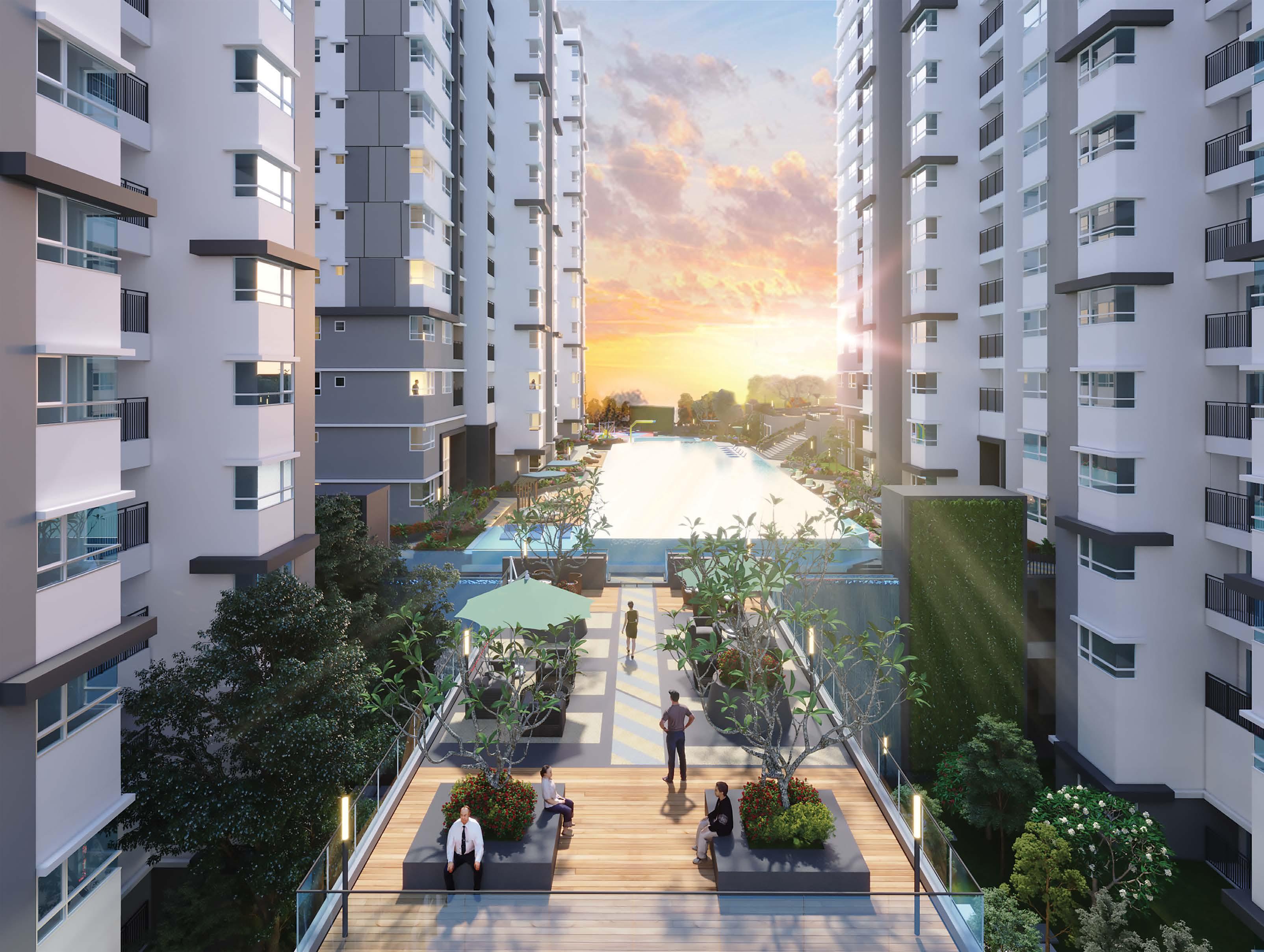

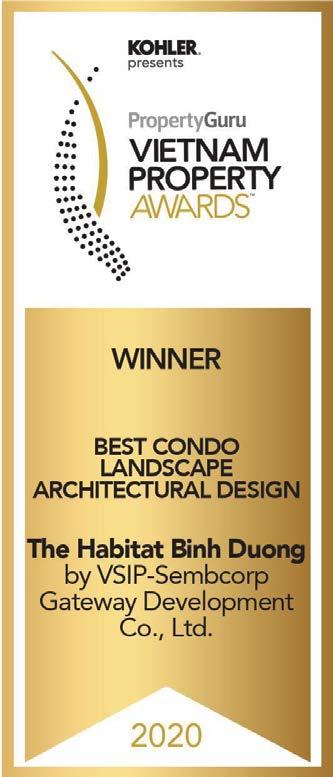

11



12 13
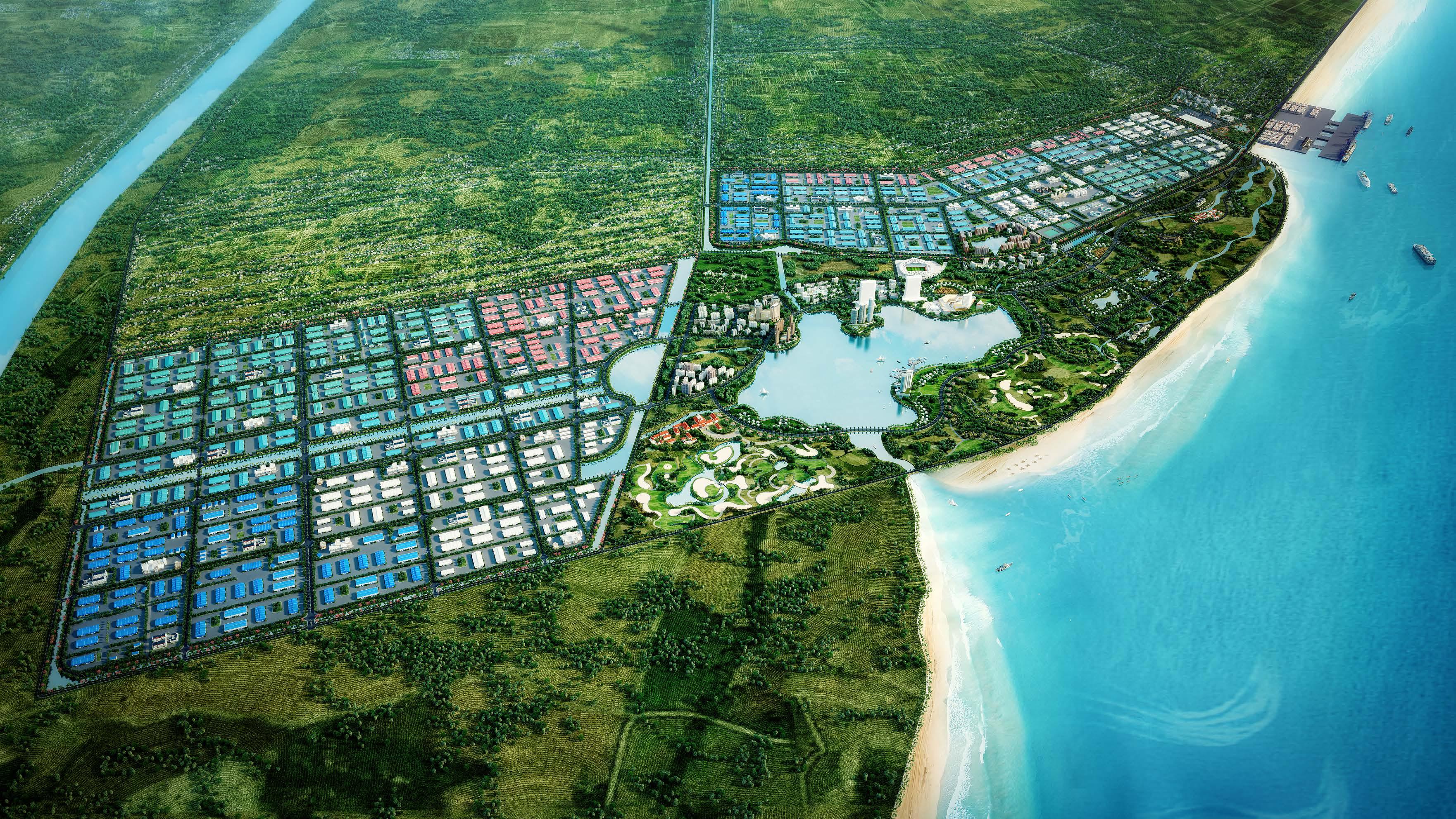
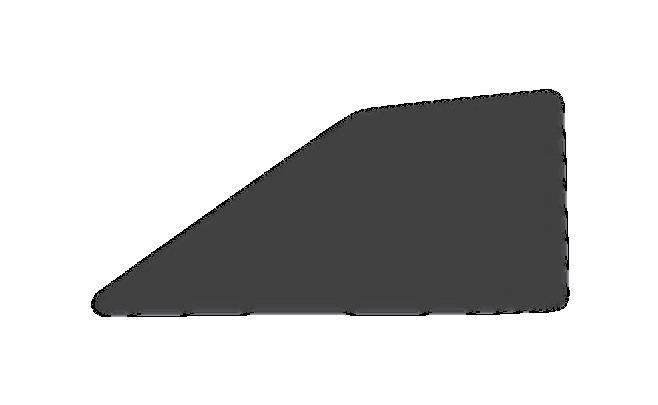
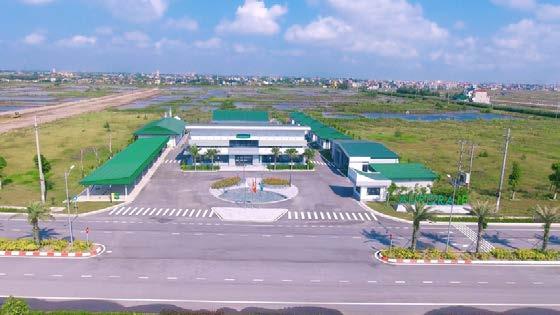

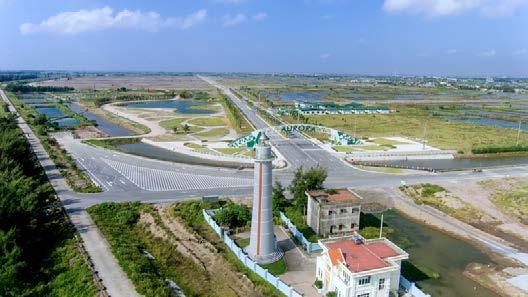

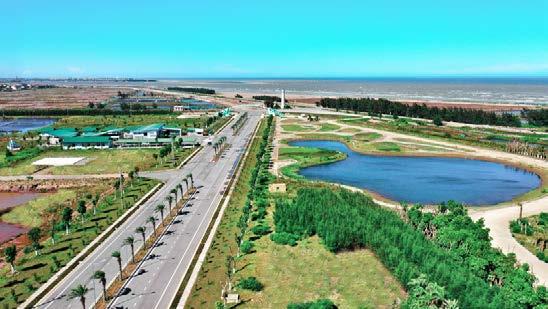

14
Located in Nam Dinh Province – the cradle of Vietnamese textile industry, Aurora IP is envisioned to become the very first green – clean – sustainable industrial park in Vietnam, explicitly serving for the development of the Vietnamese textile industry.
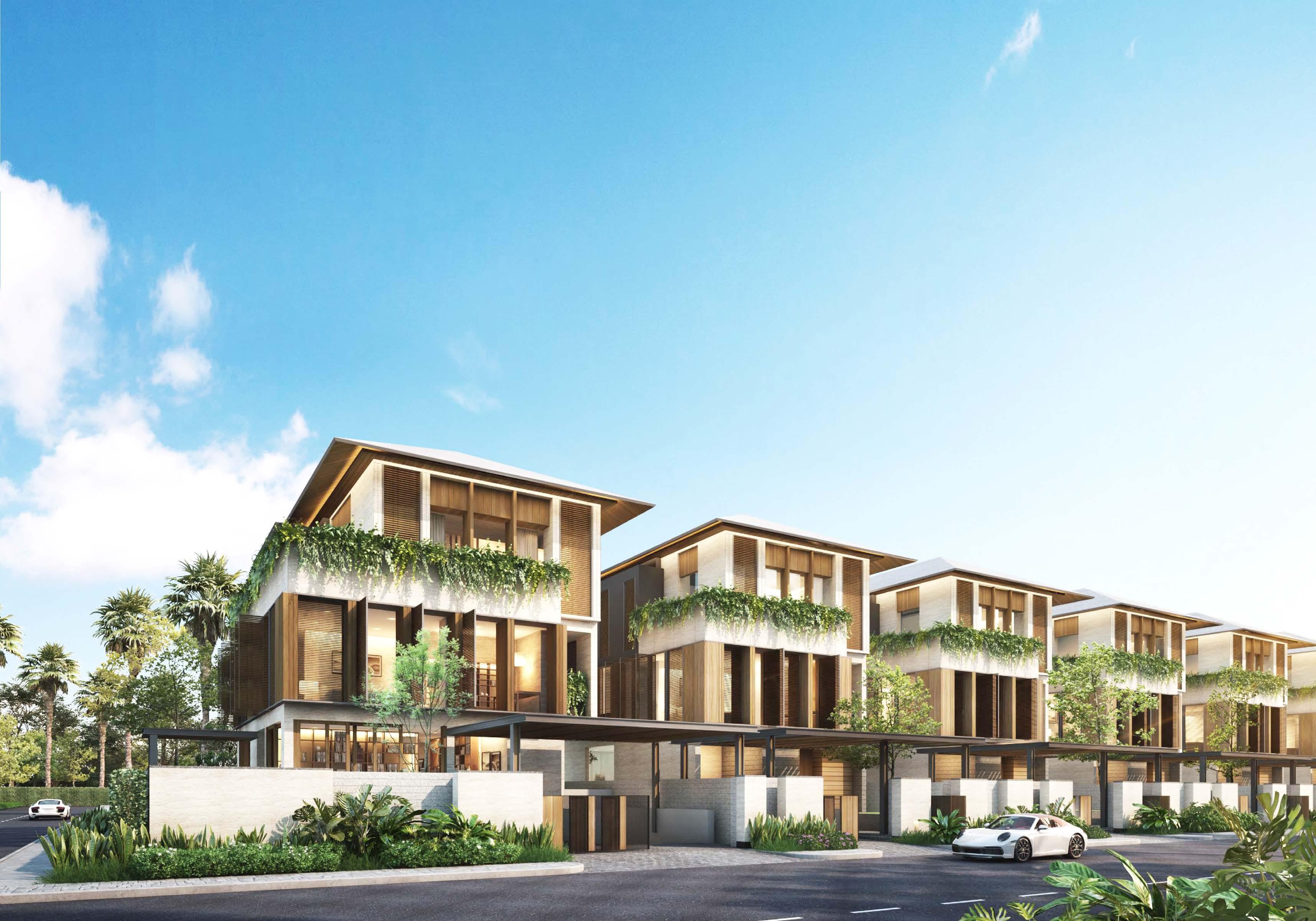

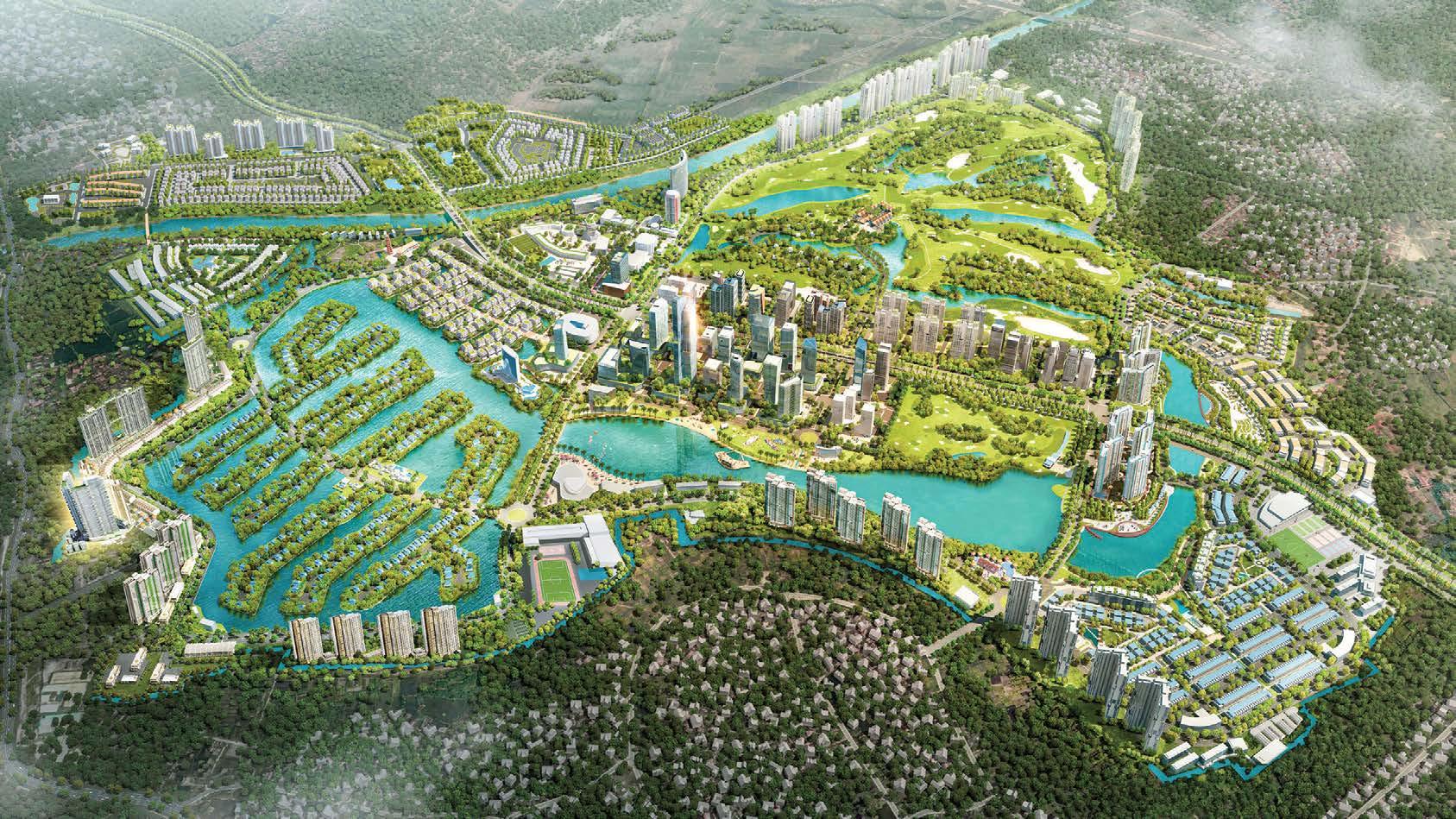

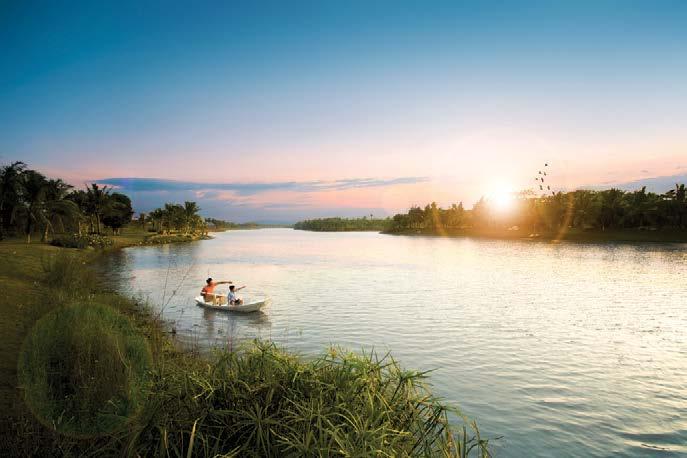
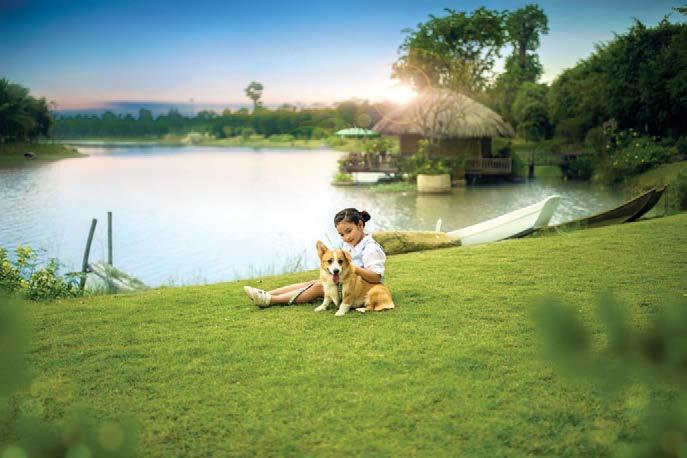







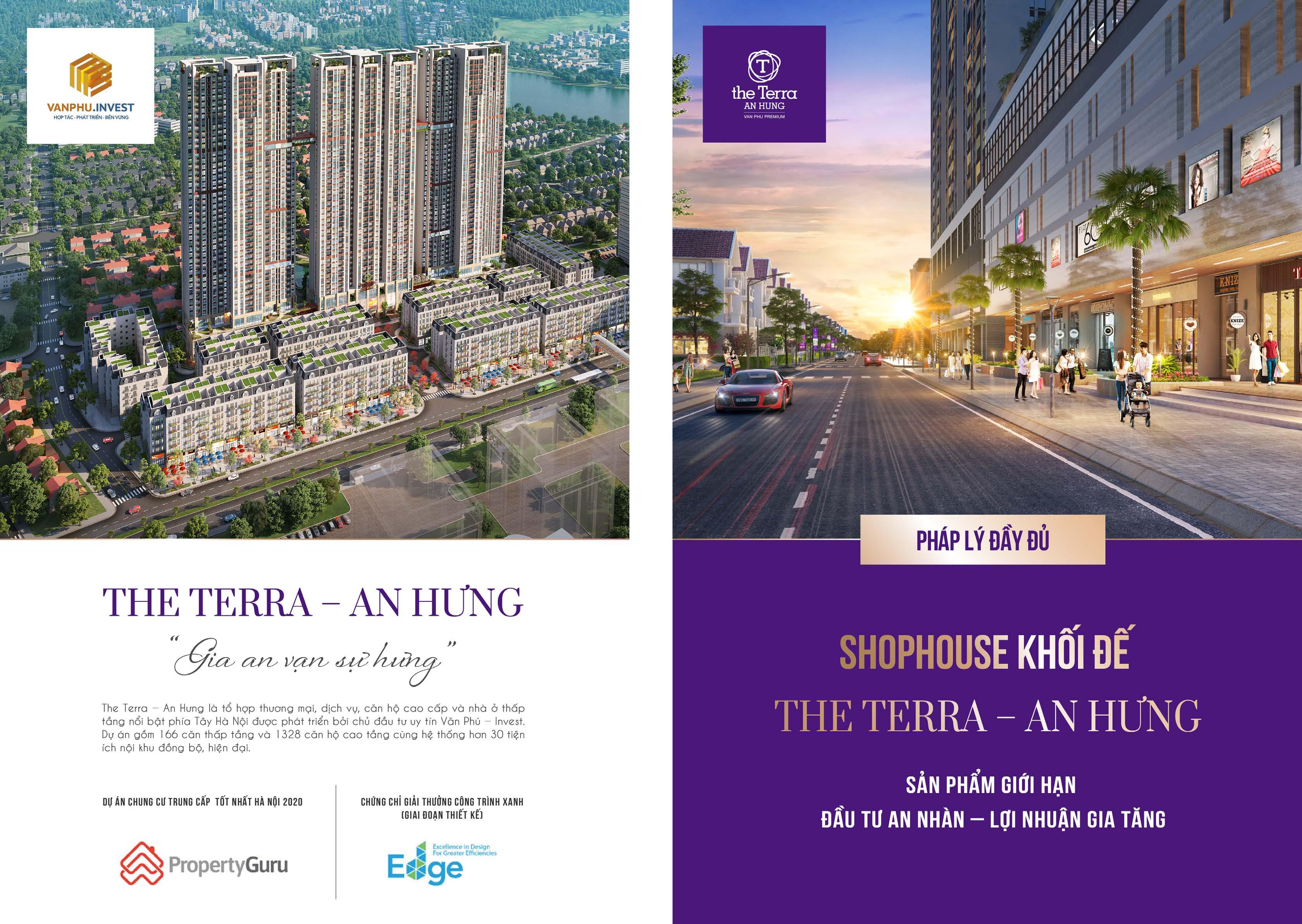






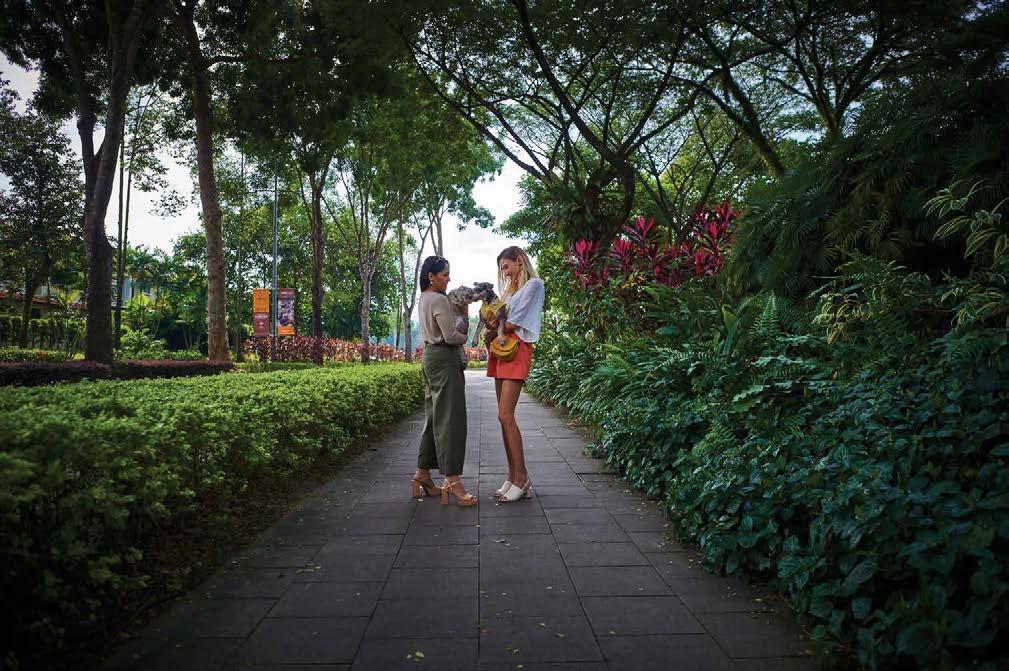



27 A member of: Master Developer: BY PARKCITY HANOI, VIETNAM THE FIRST AND ONLY DETACHED VILLAS NEXT TO CENTRAL PARK & LAKE. A NEW PROJECT +84 93 679 3338 www.parkcityhanoi.com.vn Call Hotline +84 93 679 3338 or Visit Our Show Gallery ParkCity Hanoi, Le Trong Tan road, Ha Dong district, Hanoi, Vietnam (Monday to Sunday 08.30am – 06.00pm) LAUNCHING SOON. REGISTER NOW.

28

30
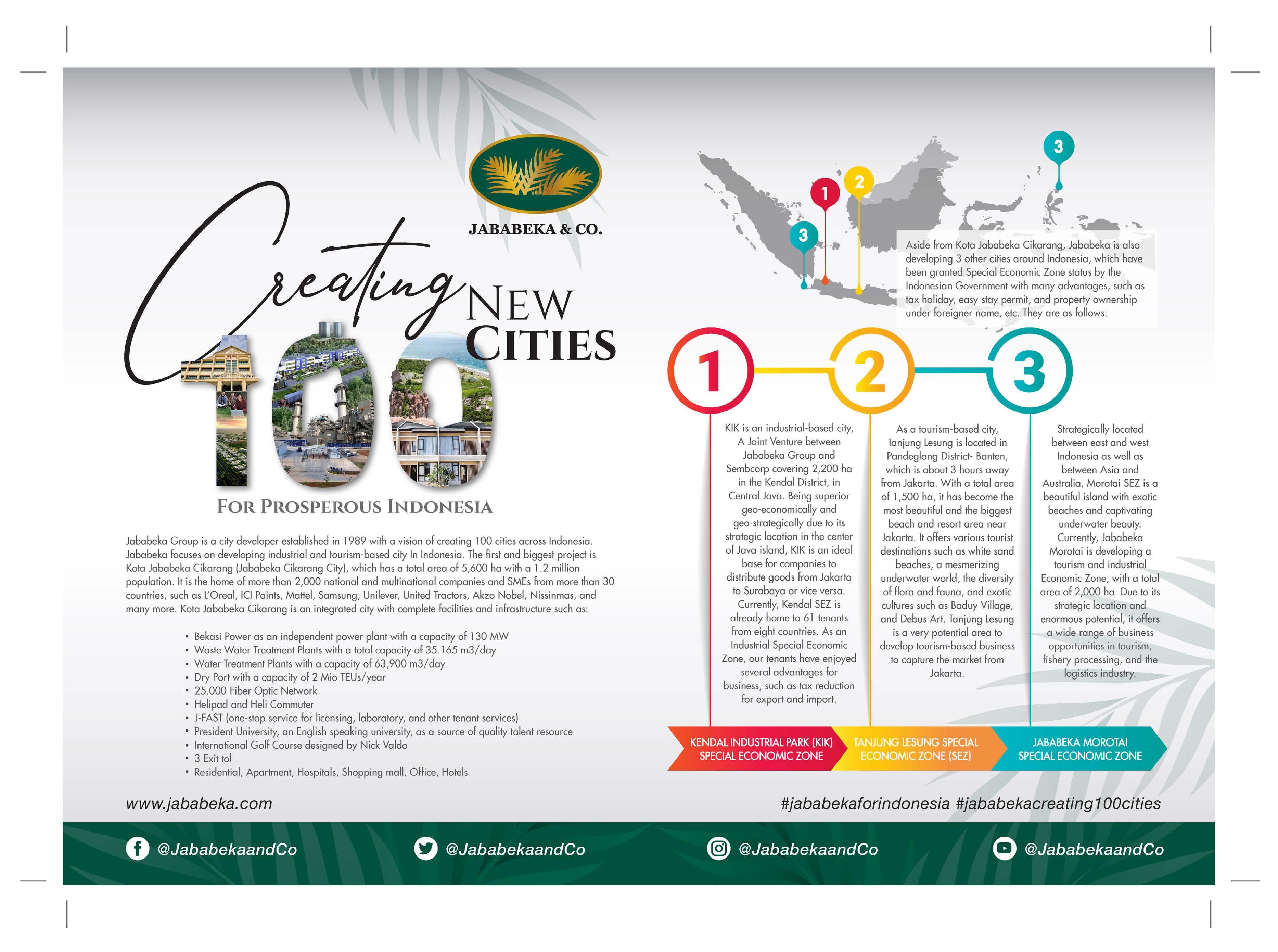

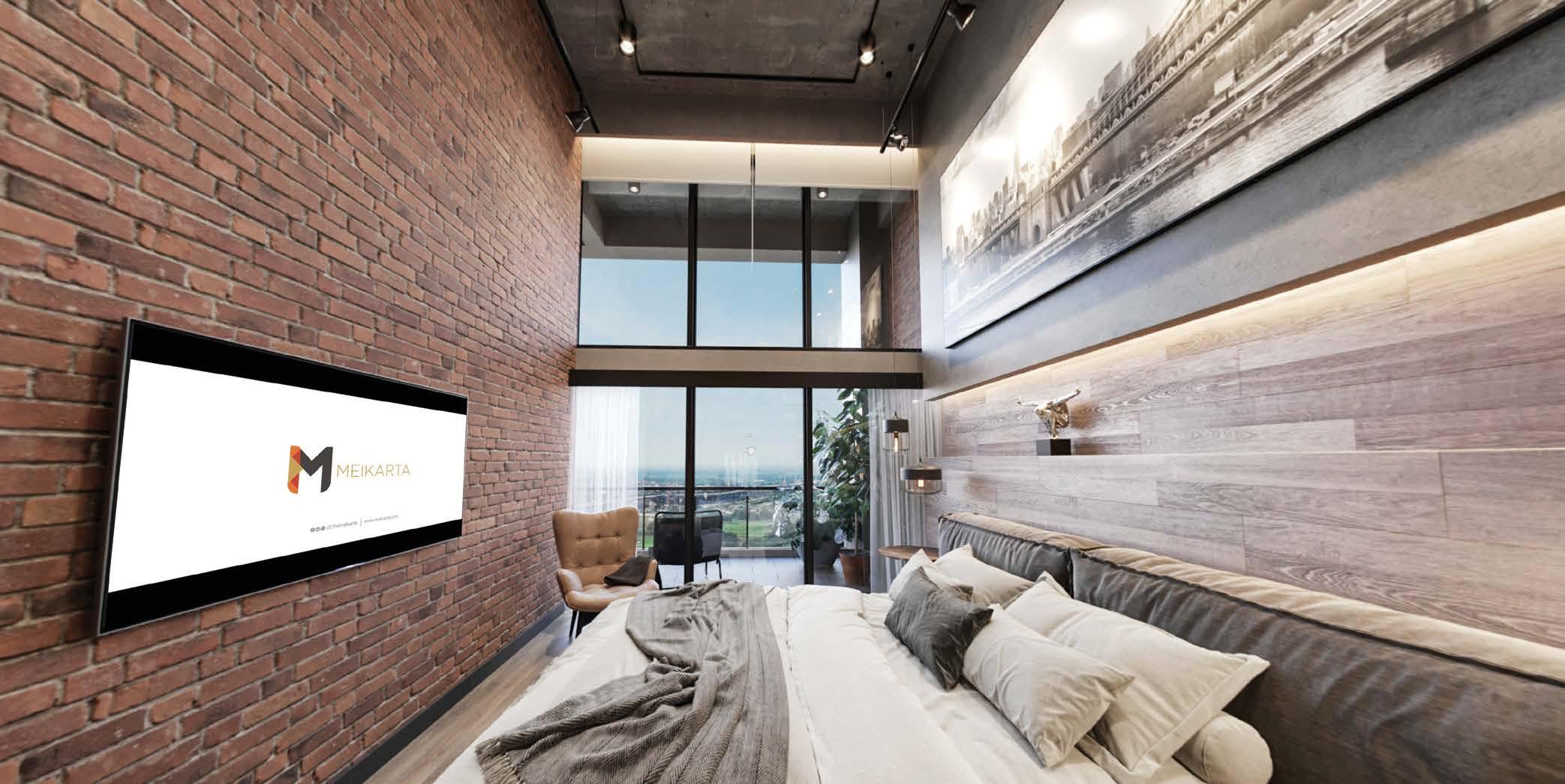

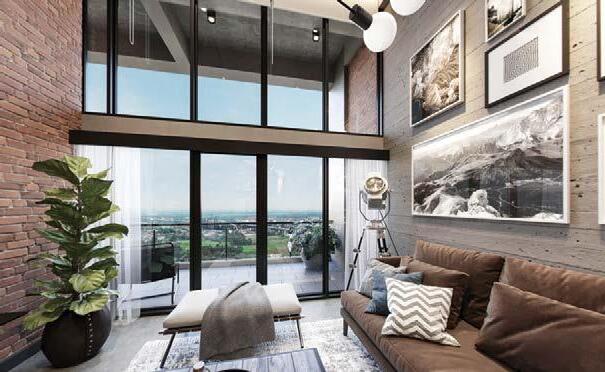









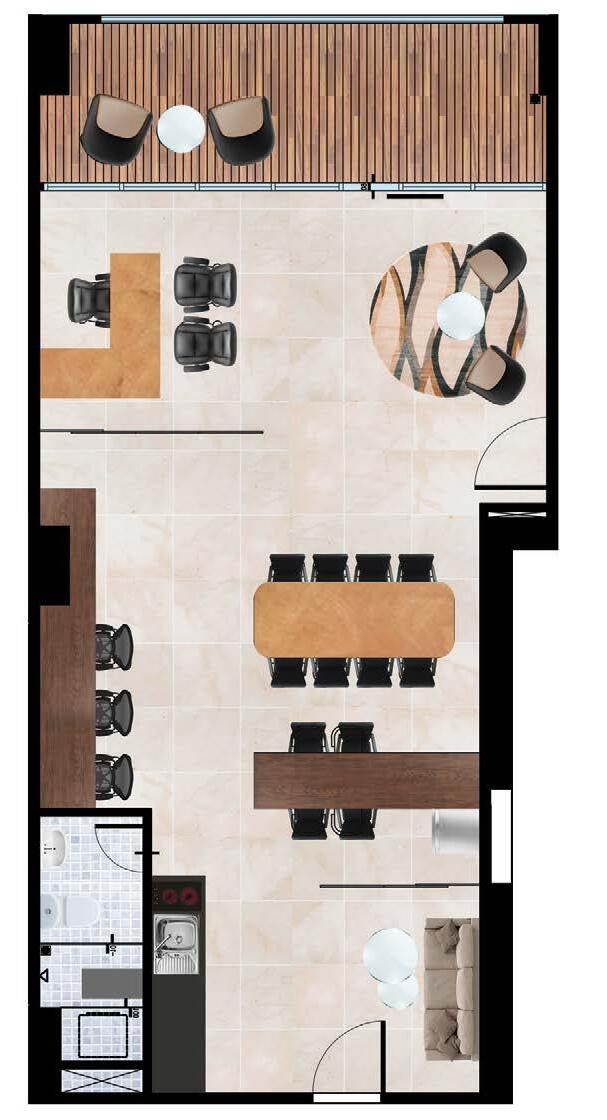
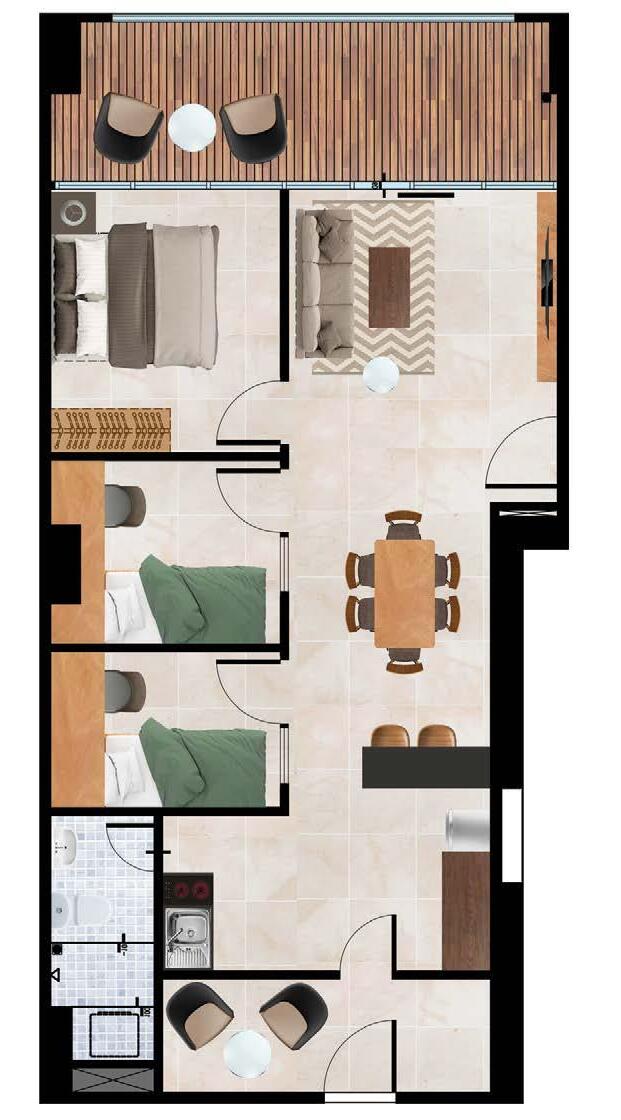
35 PT. Mahkota Sentosa Utama high ceiling sun light enter air flow circulation air flow circulation balcony (*Exclusive for Signature Edition) WINNER WINNER




38
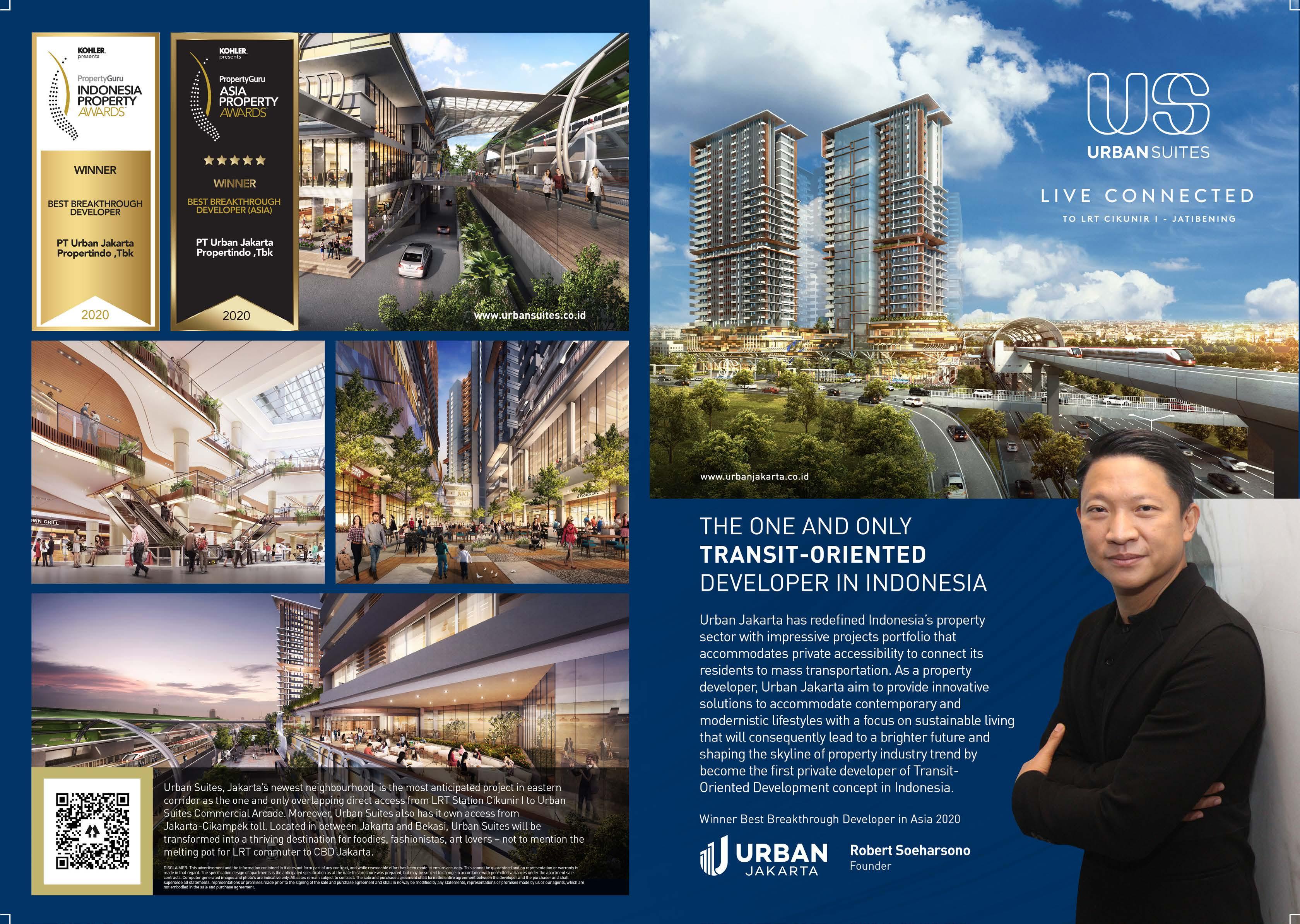
FACILITIES

ABOUT THE DEVELOPER
Operating across the Asia Pacific region, Invest Islands is a land brokerage company based in Lombok, Indonesia, with strategic offices in Hong Kong and Perth, Western Australia.
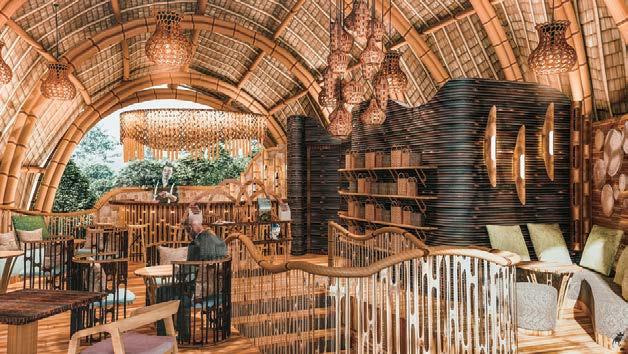


Invest Islands specialises in acquiring premium assets below market value in partnership with local land owners presenting the opportunity to clients to take advantage of the current growth Lombok is now experiencing as well as the safe and legal route into the market tailored to both local and foreign buyers.

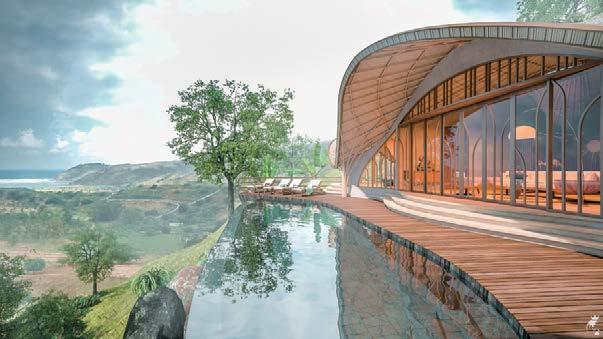



43
MANDALIKA 28,3 km 30 Min 17 km 20 Min 29,9 km 30 Min TOROK AIRPORT INVEST ISLANDS 30 mins BALI 90 mins JAKARTA 3 hours SINGAPORE 5 hours HONG KONG SPA FITNESS CLUB CLUB LOUNGE YOGA & MEDITATION INFINITY POOL BEAUTY SALON
LOCATION www.invest-islands.com info@invest-islands.com +62 877-5832-0896
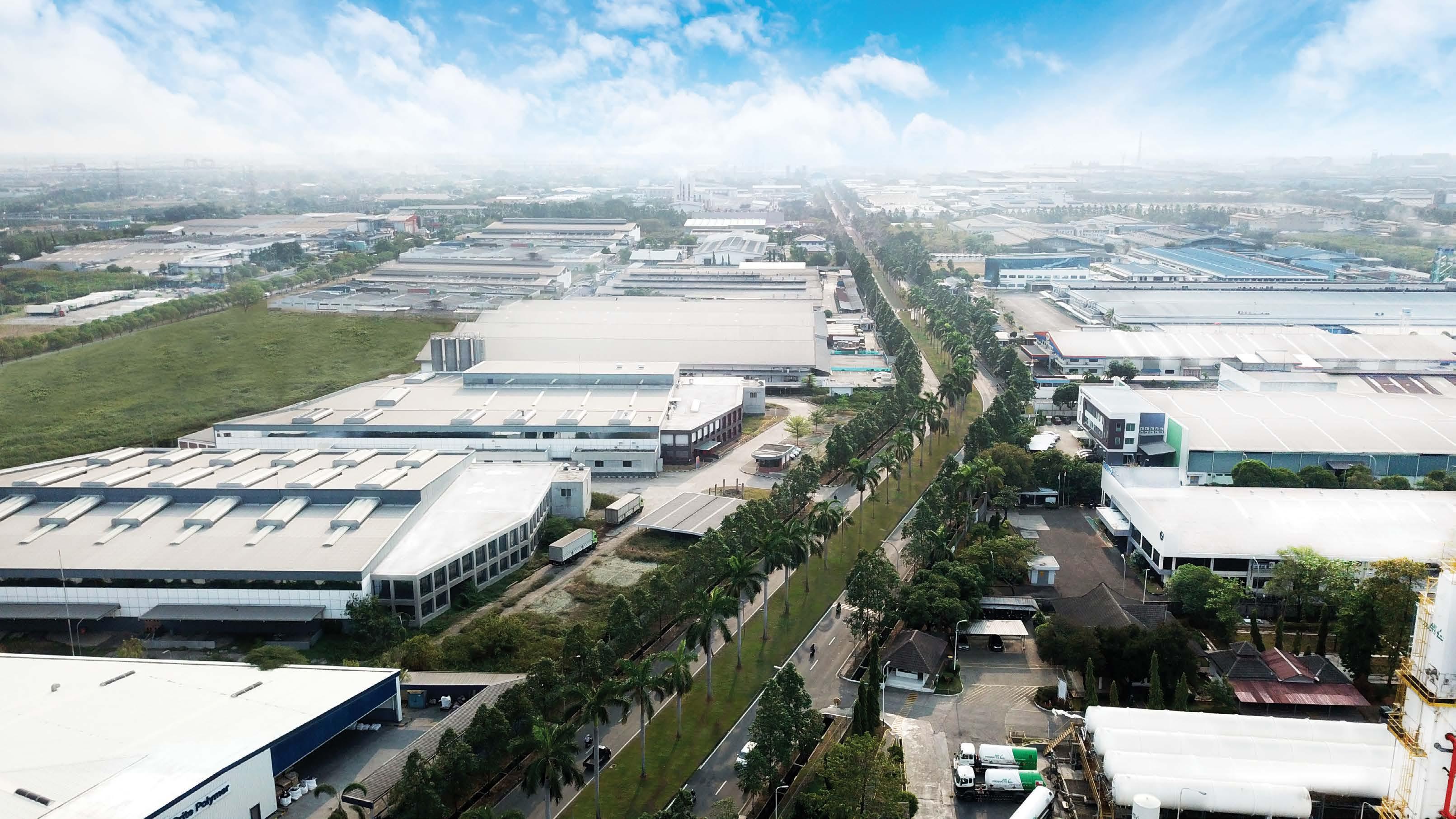

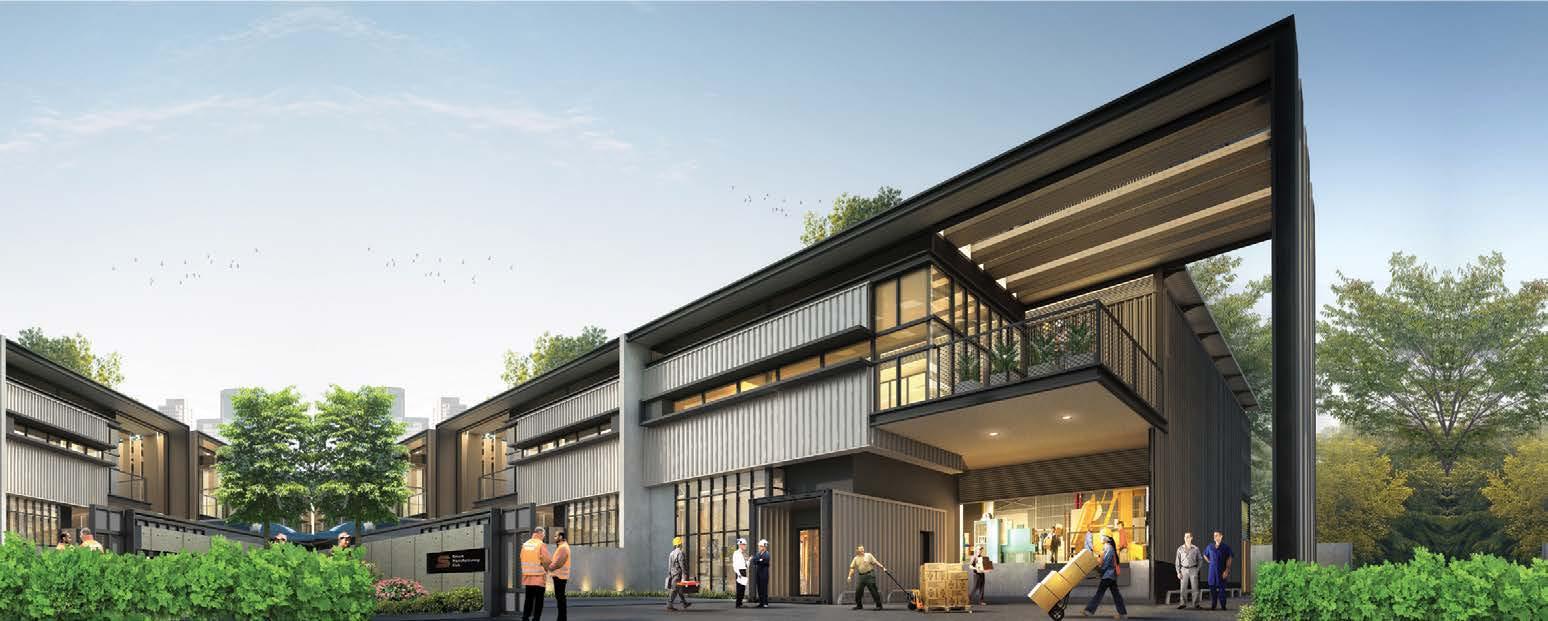










45
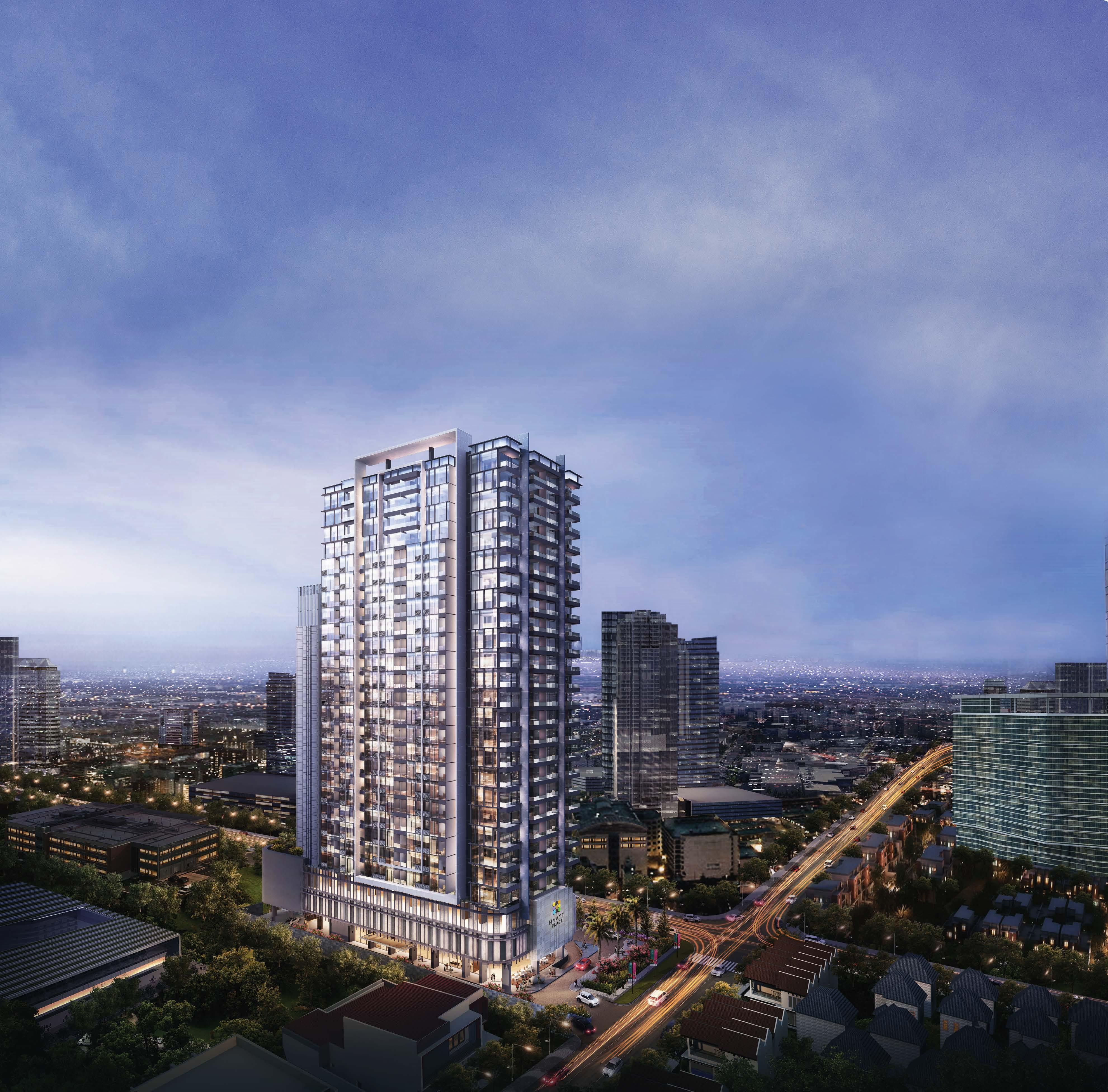


Developed by 30 Floors | 231 Exclusive Suites | Infinity Pool | Kids Club Luxurious Phinisi Lobby | On-Demand Housekeeping A View For The Few This iconic beauty will be the benchmark of urban living in Makassar’s skyscraper landscape. 8989 838 (62-411) Marketing Gallery At Ratulangi Point 4th Floor DR. Ratulangi Street No. 2, Ujung Pandang, Makassar - Indonesia www.31sudirmansuites.com
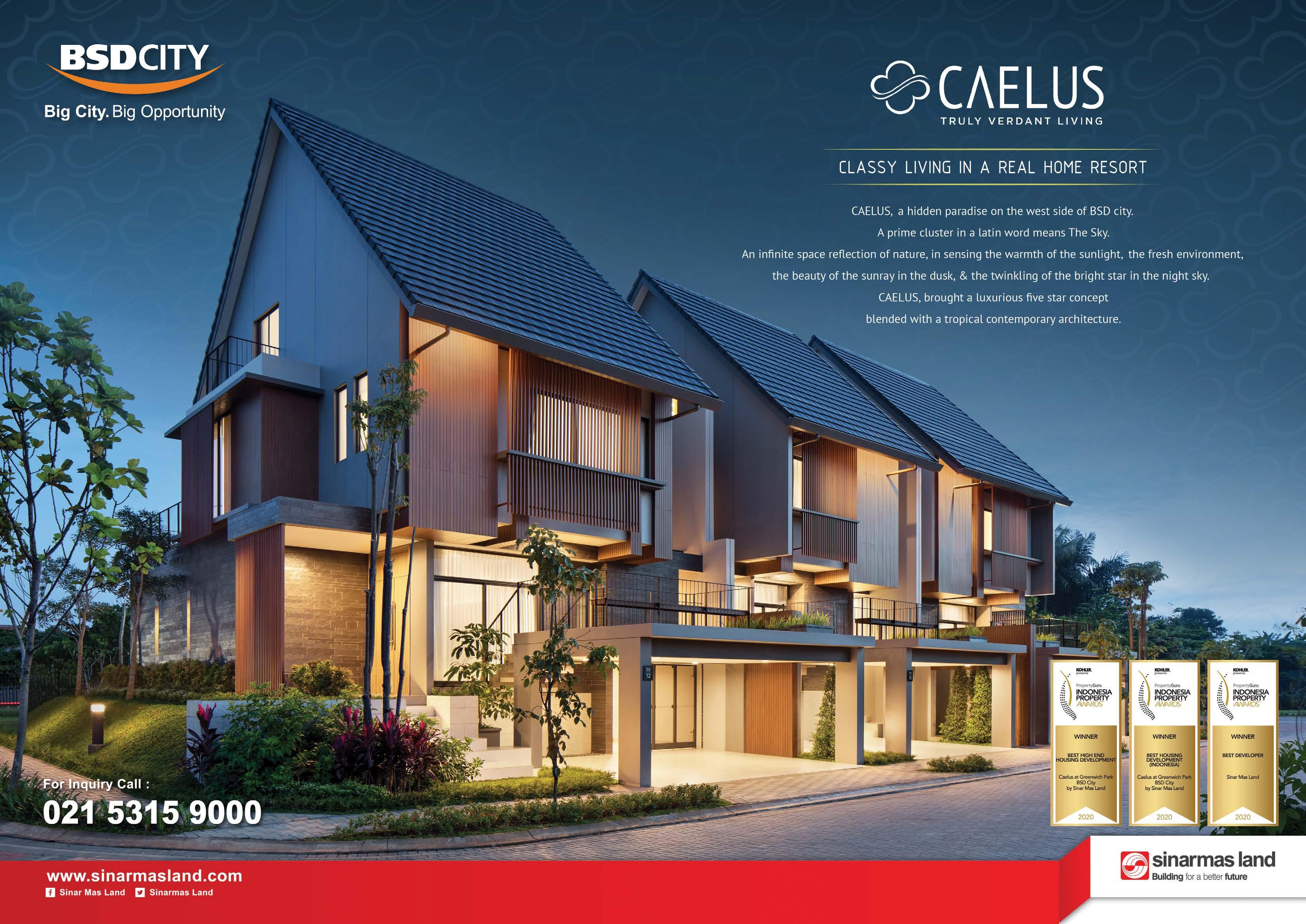
Simplicity, creativity and integrity in design
T: +852 2283 0500
E: general@lead8.com www.lead8.com
Architecture | Interiors | Masterplanning | Branding + Graphics
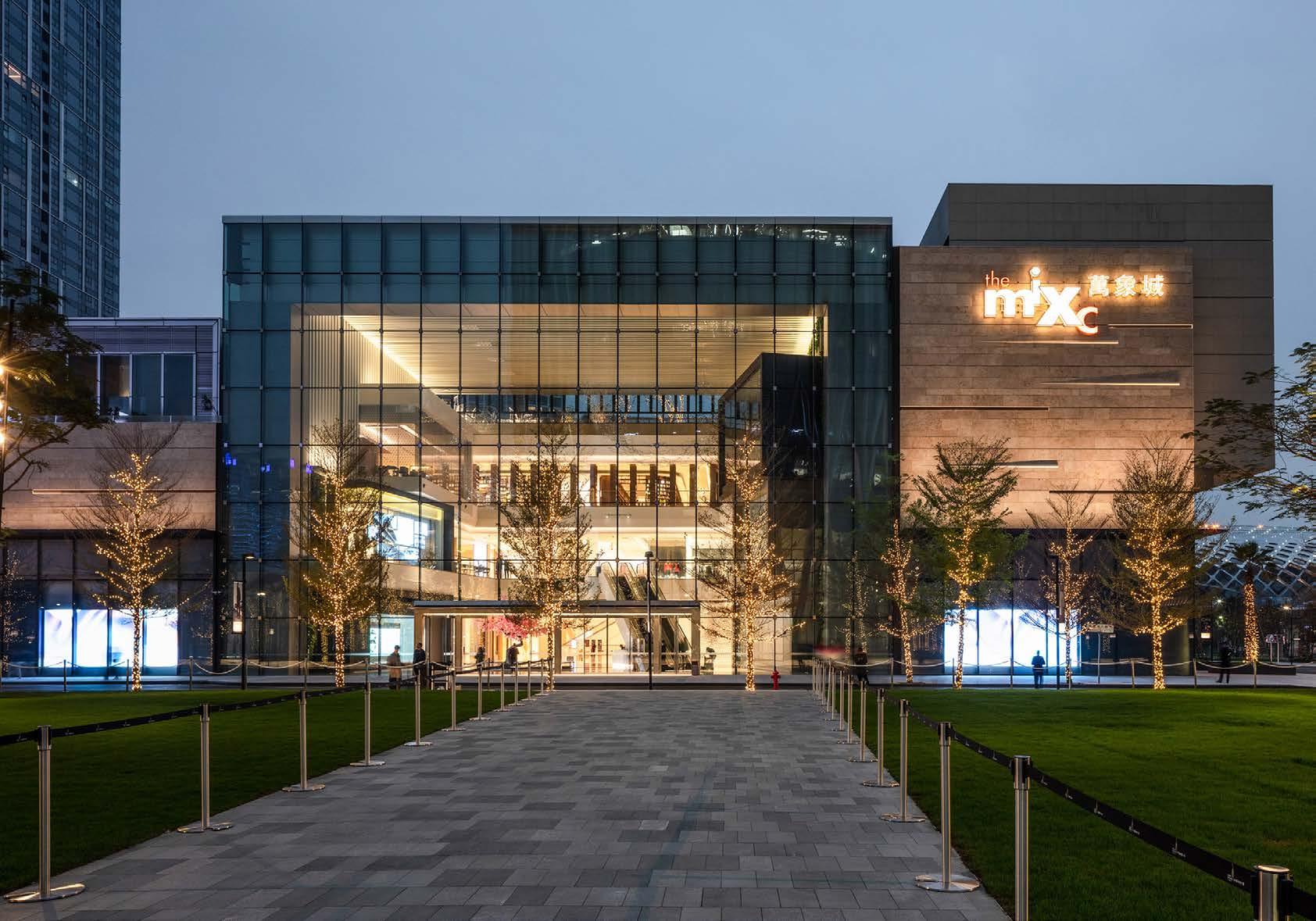

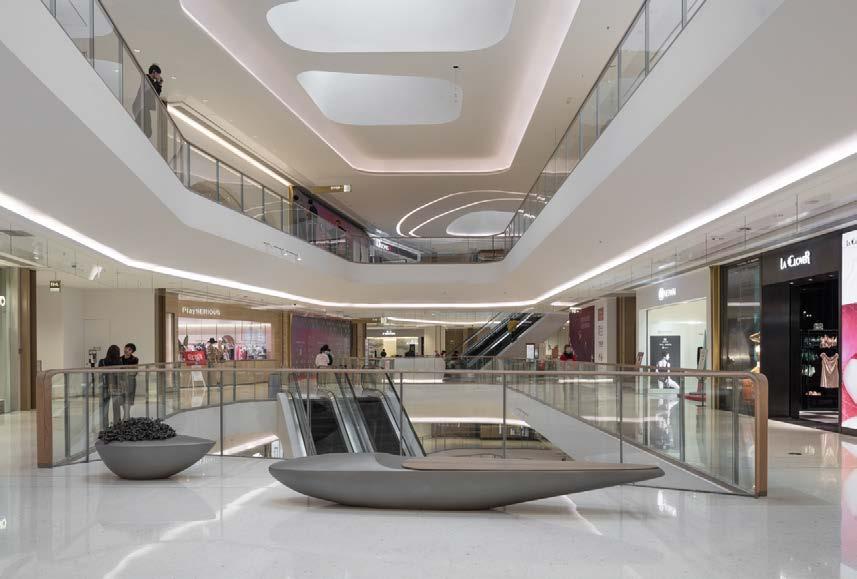


Beijing Daxing International Airport (Commercial Landside Terminal) Beijing, China
 Yorkville - The Ring Chongqing, China
MixC IMAX - Flagship in Shenzhen Bay Shenzhen, China
Timeless City Chengdu, China
Yorkville - The Ring Chongqing, China
MixC IMAX - Flagship in Shenzhen Bay Shenzhen, China
Timeless City Chengdu, China
Timeless City by Lead8 BEST RETAIL ARCHITECTURAL DESIGN (MAINLAND CHINA) HIGHLY COMMENDED MixC Shenzhen Bay by Lead8 BEST RETAIL INTERIOR DESIGN (MAINLAND CHINA) HIGHLY COMMENDED Beijing Daxing International Airport (Commercial Landside Terminal) by Lead8 BEST MIXED USE INTERIOR DESIGN (MAINLAND CHINA) WINNER MixC IMAX Flagship Shenzhen Bay by Lead8 BEST ENTERTAINMENT FACILITY DESIGN (MAINLAND CHINA) WINNER
MixC Shenzhen Bay Shenzhen, China
MixC Shenzhen Bay by Lead8 BEST RETAIL ARCHITECTURAL DESIGN (MAINLAND CHINA) WINNER Yorkville The Ring by Lead8 BEST RETAIL INTERIOR DESIGN (MAINLAND CHINA) WINNER
MixC Shenzhen Bay Shenzhen, China
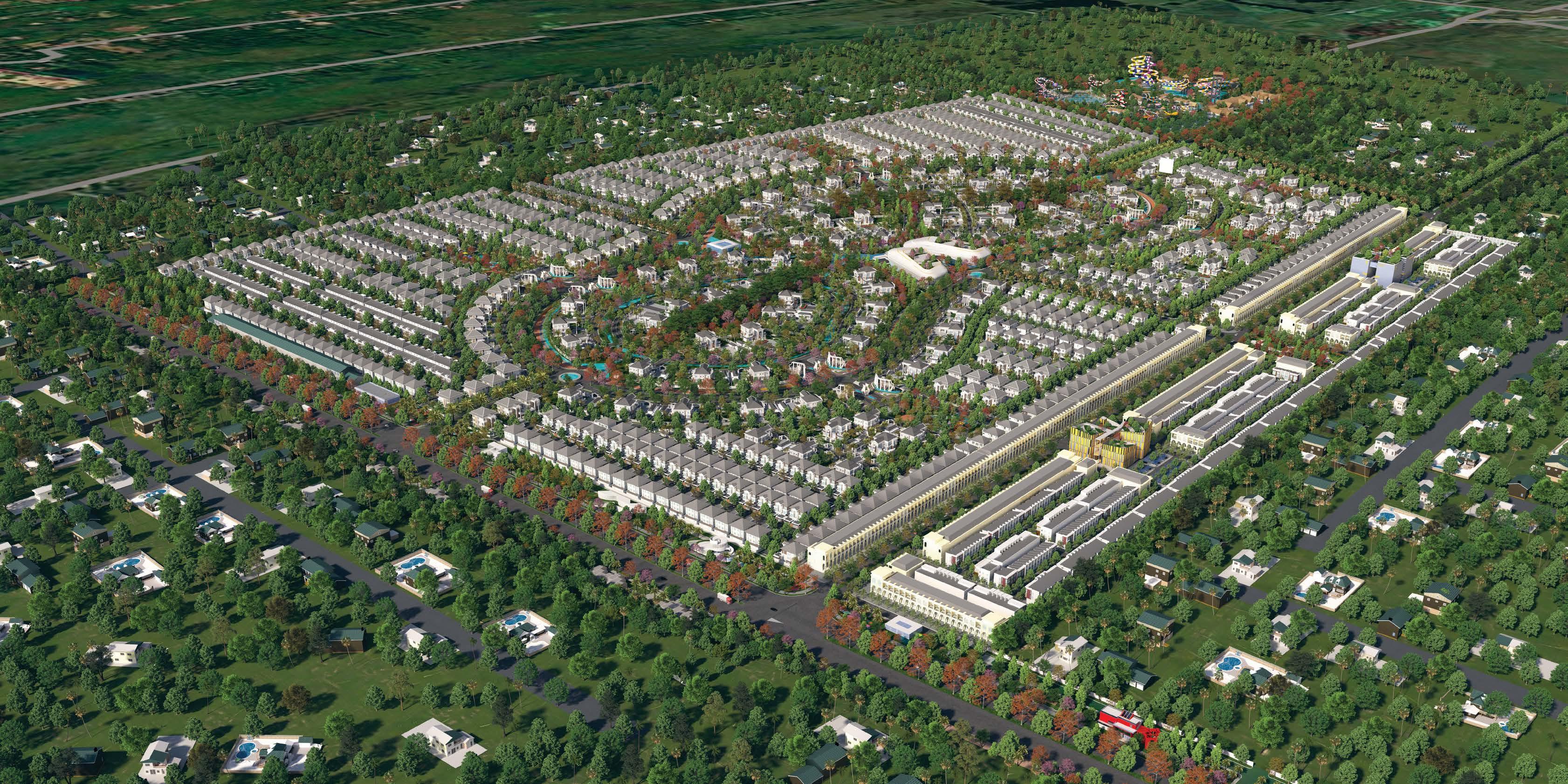
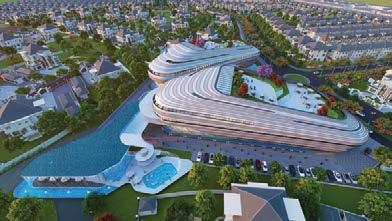



52 53

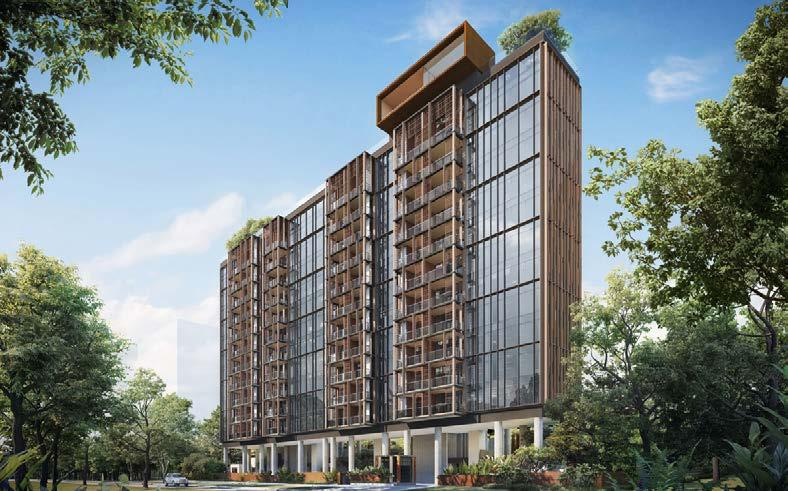

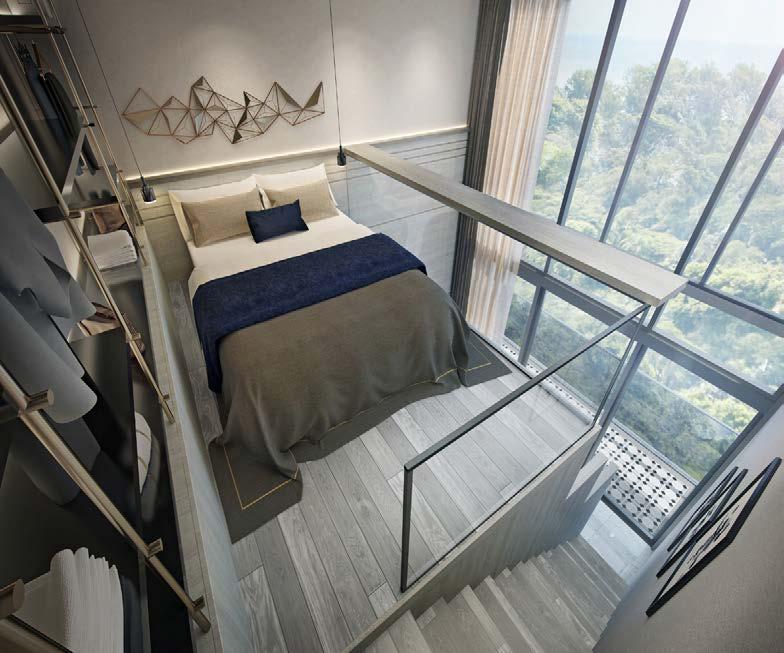
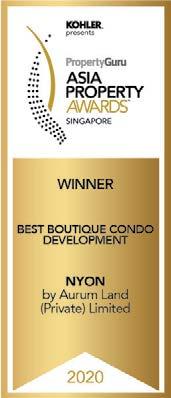
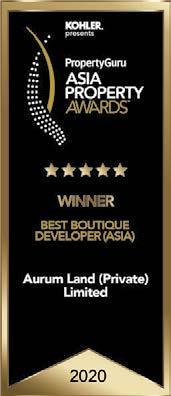



54 55
ISSUE 164
Publisher
Jules Kay
Editor Duncan Forgan
Deputy Editor
Al Gerard de la Cruz
Senior Editor Richard Allan Aquino
Digital Editor
Gynen Kyra Toriano
Media Relations Manager
Thaddeus Siu
Senior Media Relations Executive
Tanattha Saengmorakot
Media Relations Executive
Piyachanok Raungpaka
Marketing Manager
Marco Dulyachinda
Editorial Contributors
Liam Aran Barnes, Bill Bredesen, Diana Hubbell, Steve Finch, George Styllis, Jonathan Evans
Head of Creative
Ausanee Dejtanasoontorn
Senior Graphic Designer
Poramin Leelasatjarana
Sales Director
Udomluk Suwan

Regional Business Development Manager
Kanittha Srithongsuk
Corporate Partnerships Executive
Priyamani Srimokla (Priya)
Amonlapa Somtaveesilp (Mickey)
Regional Solutions Manager
Orathai Chirapornchai
Business Development Manager, Corporate Sales (Singapore)
Alicia Loh
Solutions Manager (Thailand)
Kritchaorn Rattanapan
Rattanarat Srisangsuk
Solutions Manager (Philippines)
Marylourd Pique
Maria Elena Sta. Maria
Solutions Manager (Vietnam)
Quan Nguyen
Solutions Manager (Indonesia)
Amanda Michelle Wulan Putri
Solutions Manager (Cambodia)
Phumet Puttasimma
Solutions Executive (Malaysia)
Samuel Poon
Solutions Manager (Australia)
Watcharaphon Chaisuk (Jeff)
Solutions Manager (Mainland China, Hong Kong and Macau)
Huiqing Xia (Summer)
Kai Lok
Solutions Manager (Myanmar)
Nyan Zaw Aung (Jordan)
Solutions Manager (India and Sri Lanka)
Monika Singh
Distribution Manager
Rattanaphorn Pongprasert
Editorial Enquiries
duncan@propertyguru.com
Advertising Enquiries
petch@propertyguru.com
Distribution Enquiries
ying@propertyguru.com
PropertyGuru Property Report is published six times a year by
© 2021 by PropertyGuru Pte. Ltd. All rights reserved. No part of this publication may be reproduced without prior permission of the publisher
KDN PPS 1662/10/2012 (022863)
56
CM MY CY CMY
102

Neighbourhood Watch: Phu Yen
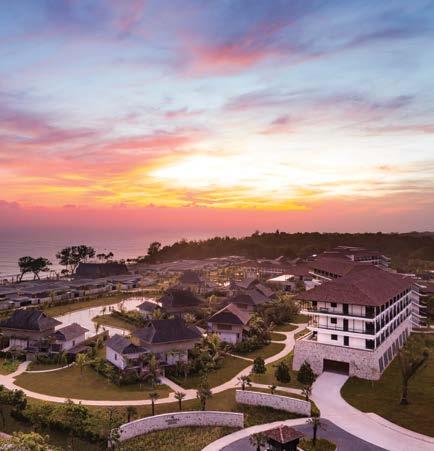
Coastal enclave set for the spotlight as Vietnam begins to focus on post-pandemic growth
104
Destination: Vietnam
With demand for housing continuing to boom—especially near manufacturing hubs— the outlook in Vietnam appears rosy for investors and developers alike
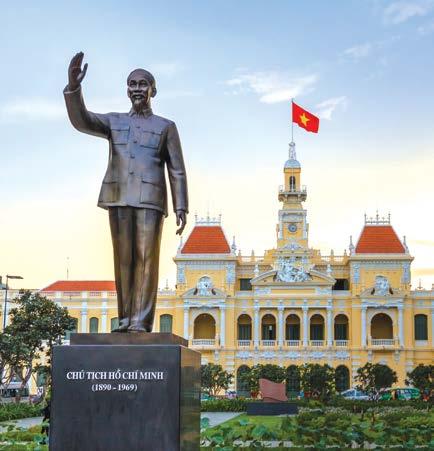

112
Destination: Indonesia
A wide-ranging Omnibus Law, designed to set the agenda for President Jokowi’s second term, has yet to have the desired impact
Considered
Demand
128
Dispatch: China
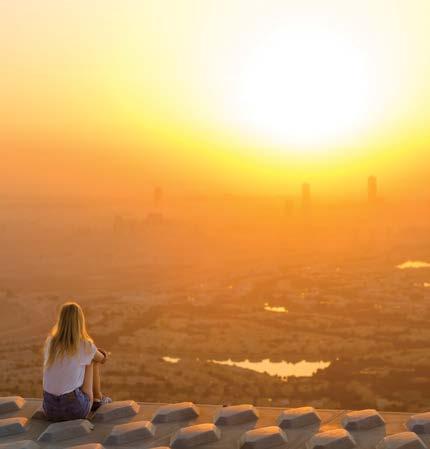
Beijing’s chronic oversupply of office space presents a crisis, but China’s ingrained work culture suggests demand will catch up
131

Dispatch: India

The country’s notoriously graft-prone real estate sector is growing more transparent thanks to government regulations and the introduction of REIT frameworks
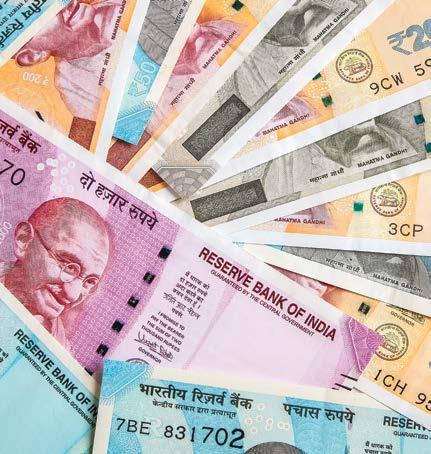
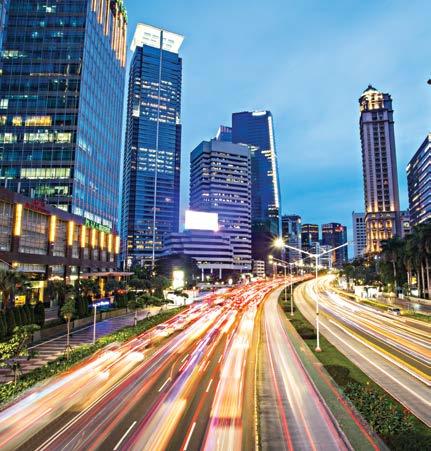
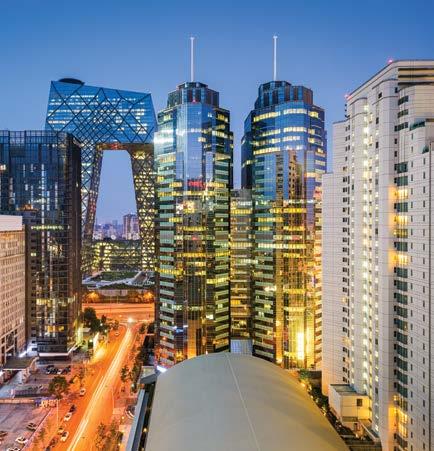

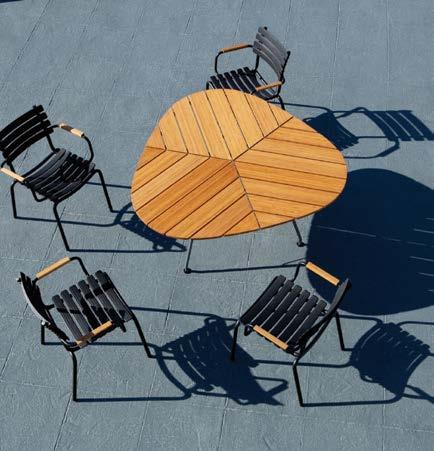
58 59
of place
CONTENTS Issue 164 70 Project Confidential: A sense
Coast Residences
Trends
your resort home even more appealing with fresh furniture pieces 66 Style Take the ox year by the horns with Chinese influenced items 80 Interview: Heart of the sun
is deploying a collaborative, sustainable philosophy as she maps the future of Malaysia’s Sunway Group
Gadgets
that innovate to keep you healthy, productive and creative
Design
What lies beneath
nods to Malaysia’s architectural and cultural heritage are integral to the package at Anantara Desaru
64
Make
Sarena Cheah
68
Products
86
Focus:
resorts
SODA Thailand uncovers the innate character of its projects to create some of the region’s most compelling
120 Special Feature: Urban oases
for resort-style residences with plentiful facilities and multi-functional space is growing in Asia
It’s no coincidence that our resort residences issue is timed at the start of each year. With the old year out of the window, we begin fresh with a positive outlook. What better way to do so than by whetting an appetite for travel and investment by homing in on the thriving resort scene in Southeast Asia?
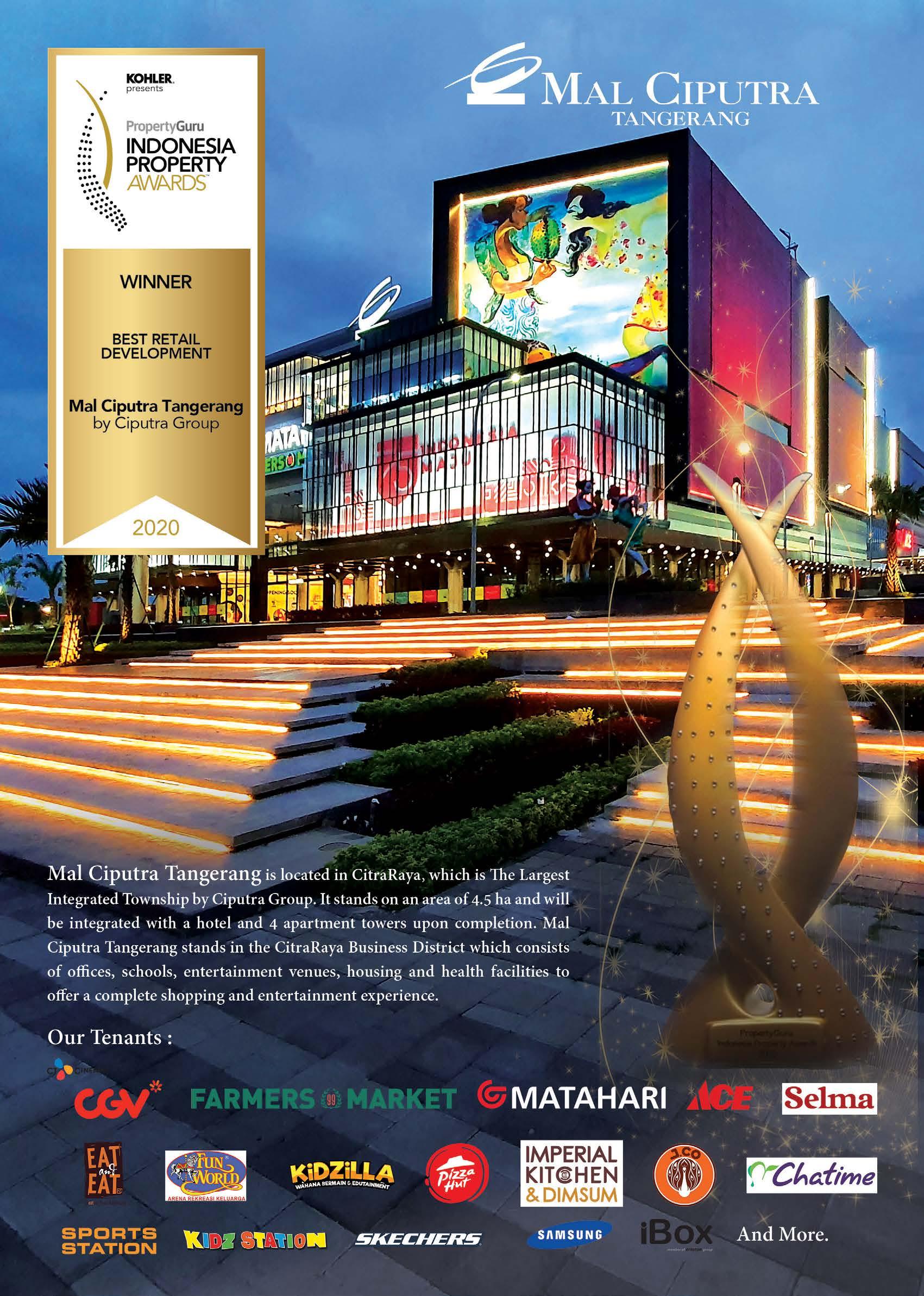

As you may have noticed, things have changed somewhat. Indeed, it is a moot point as to whether any of us will leave our established bases until later in 2021: if at all. Nevertheless, over a year into the global pandemic, thoughts are turning to a less fraught future. As such, there’s plenty of food for escapist thought in our pages.
In our special feature, we take a look at how the prevailing trend for WFH is providing fertile ground for “urban retreats”, hybrid projects that bridge the gap between city life and resort living. Elsewhere, we home in on some incredible resort designs by SODA Thailand and visit southern Malaysia to get the lowdown on the Anantara Desaru Coast Residences.
The pandemic looms large in our other features. We examine how Vietnam emerged from the wreckage of 2020 as one of the region’s few success stories. Vietnam’s progress contrasts with Indonesia, which is struggling to provide a kickstart to its economic engine.
I hope you enjoy the issue!
Duncan Forgan Property Report duncan@propertyguru.com

60
EDITOR’S NOTE Issue 164
ADVERTORIAL ADVERTORIAL
THE GOOD LIFE
No need to venture out of Ho Chi Minh City for a well-deserved respite – Diamond Centery is the place to call home and resort at the same time
When one thinks of “vacation” or “retirement” in Vietnam, the mind usually wanders off to the nation’s abundance of gorgeous sand and surf – 2,000 miles of coastline to be exact – in such places of renown as Da Nang or Nha Trang. Too often, these are propped up as places to “escape the noise” and “take refuge” from the hustle and bustle of Vietnam’s urban jungles.
But as is the case with the rest of the world, Covid-19 has pushed tourism and holiday home hunting to the backseat. Suddenly people have found themselves confined to the four walls of a city.
Gamuda Land HCMC JSC has upended the notion that living in a city has to be taxing or tedious or that you are better off retiring to a beach town, cut off from all the conveniences of the big city. This year, the Malaysia-based developer launched Diamond Centery, a high-end condo development that evokes a resort in the middle of not just any metropolis but Vietnam’s largest: Ho Chi Minh City.
Diamond Centery is spread over 28,200 sqm of land in Celadon City, a world-class masterplanned township and green urban area currently rising west of central Ho Chi Minh City.
In Diamond Centery, homeowners take a vacation where they live – the development is designed like a beach resort in the city. People relegated to their residences during extraordinary times such as a pandemic need not feel cloistered when they have homes like those in Diamond Centery.


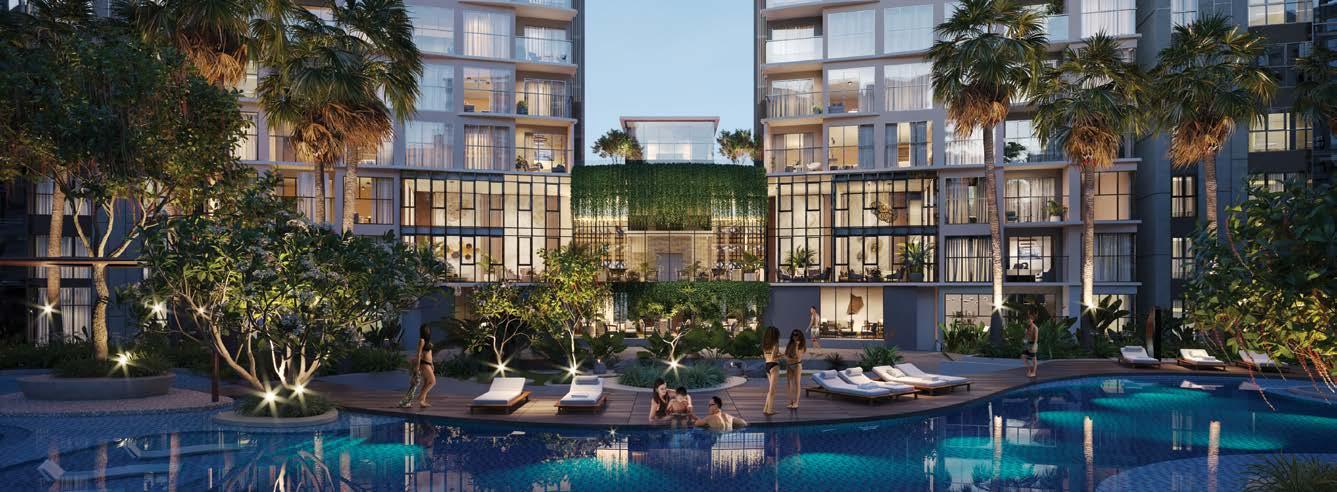
On any given weekend, an entire family can just step outside their door for an instant holiday. Like an oasis in the heart of a busy city, Diamond Centery features an enormous swimming pool – an artificial sea, if one may – ringed by a sand park that further simulates the feel of a resort, coupled with an assortment of relaxing extras such as hydrotherapy beds and ledge loungers. Residents and guests can relax by the sandy shores or bask in diverse water experiences in such amenities as the urban tropical pool, a shallow swimming pathway, wading pool, coastal pool, waterfall pool’s edge, and jacuzzi. These bodies of water are set close to a “below-the-sea” gym and an aquatic yoga centre, suiting all fitness enthusiasts.
Families and friends can schmooze from the rooftop garden down to the pavilion courtyard or watch shows at the outdoor theater, while couples can stroll through the massive landscaped central park. Inside the development, residents can access a clubhouse, a function hall, party house, co-working space, library, games room, gymnasium, and yoga/dance room.
Additionally, Diamond Centery is host to sophisticated, classy amenities befitting successful residents and property seekers of a certain stature. There is the Royal Centery Golf Club, good for a match or two with business partners; the Lifestyle Lounge, a place where one can gab with peers over wine; the Chef’s Choice Kitchen, a hub for gatherings over sumptuous delicacies; and the Escape Spa, the centre for well-deserved treatments after a hard day’s work.
Diamond Centery is set to become a valuable asset for all generations. It has creative playgrounds and wide, open spaces that allow younger residents to roam free and fill their childhood with happy memories. It even has a day care centre, unburdening working parents in the community.
All residents at Diamond Centery have access to Celadon City’s vast tracts of greenery, including the more than 16-hectare eco-park – one of the three largest parks in Ho Chi Minh City – with its trio of artificial lakes. Celadon City is also home to more than five hectares of sports and resort complexes, including Olympic-standard facilities.
Parents at Diamond Centery need not send their children to school outside Celadon City. Within the township one can find good institutions such as Ton That Tung Secondary School, Le Trong Tan High School, Le Thanh Tong High School and High School, Asian International School System, and Mapble Bear International Kindergarten.
As for conveniences, Diamond Centery holds several retail spaces and a grocery store, plus a cafeteria. Residents can also check out the nearby Aeon Mall Tan Phu Celadon; open since 2014, the mall is a pioneer in retail development in Vietnam.
Given its affluence of amenities and abundance of lifestyle conveniences, Diamond Centery could only be poised to grow in investment value. Showcasing magnificent architecture and interior design, the 746 units on offer in the project are easy to rent, making for sustainable income streams, and earmarked for high liquidity.
Investors have a choice of 714 standard apartments, 12 duplex units and 20 penthouses, in generous sizes averaging at more than 105 sqm. All units offer open-plan living spaces and fully functional kitchens with ultra-sized balconies that span the entire width of the units. Living rooms and bedrooms are also arranged in a way that they command great views of the Celadon City parks.
Whichever stage property seekers are in life – be they the indolent golden years of retirement or the carefree days of youth – Diamond Centery is ready to meet them. Built like a resort town yet endowed with all the conveniences of a masterplanned city, this development is the place to be for a vacation that never ends.
62 63
LAST RESORT
Make your resort home even more appealing with furniture pieces that look as good inside as they do outside
MAKING WAVES
Spanish architect Patricia Urquiola took inspiration from fishing nets in the Philippines to design Ravel, an outdoor modular set for B&B Italia. The aluminium backrests are interlaced with polyethylene weave in complex diamond shapes—truly a sea change from your ordinary sofa.
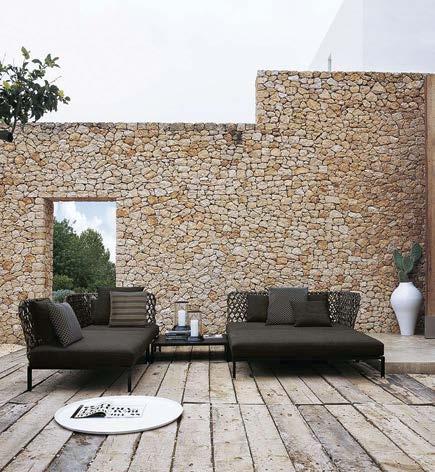
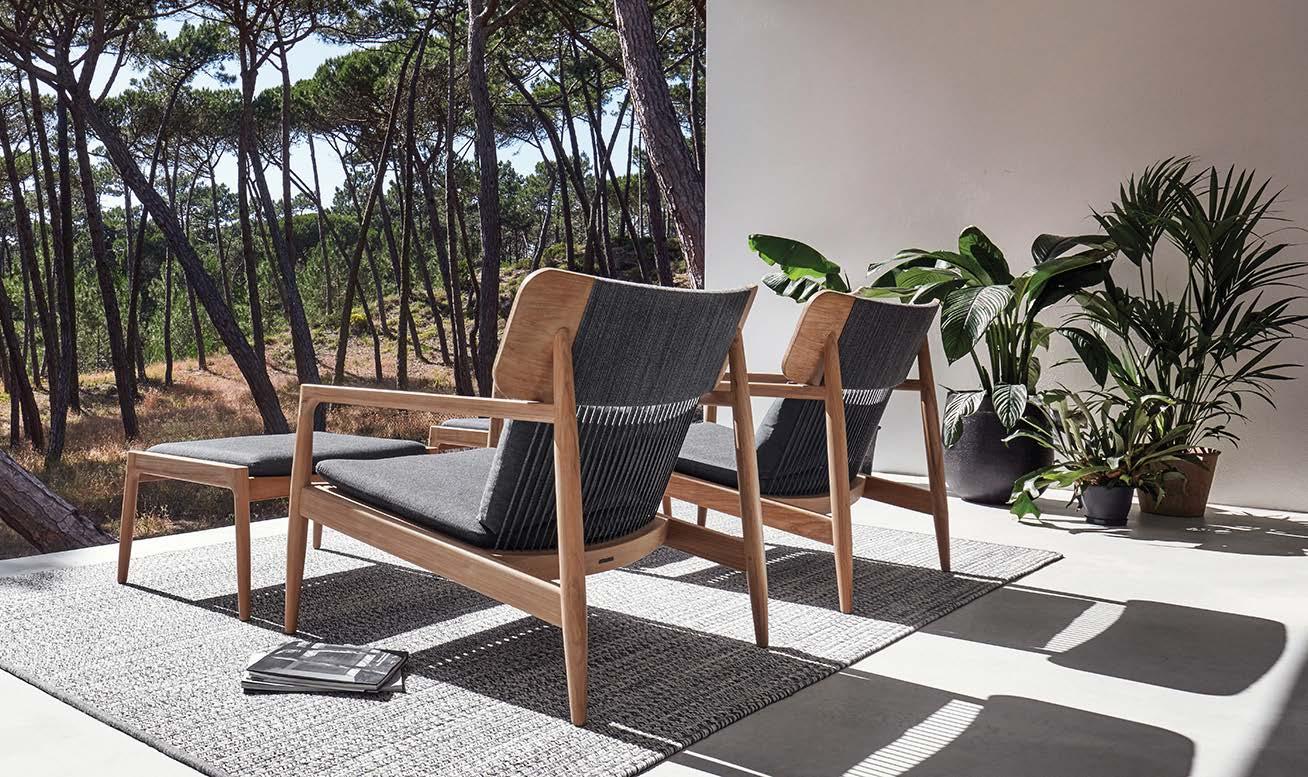
€8,356 ($10,280), bebitalia.com
GREAT OUTDOORS
Leaf, an outdoor table by Danish furniture maker Houe, is shaped—aptly— like a leaf and comes with a pre-oiled bamboo top. The triangular form and table construction allow it to easily seat nine.

€749 ($920), houe.com
TEAK IT IN
Designed by Danish furniture maker Henrik Pedersen for Gloster, the Archi chair is made of premium-grade, plantation-grown teak, buffed to bring the timber’s natural oils to the surface, making it resistant to sunlight and precipitation.
From £690 ($940), gloster.com
PLACE IN THE SUN
The all-weather Tressé double daybed by Osier Belle is a gorgeous alternative to the chaise lounge for your pool deck or balcony. Encased in Sunbrella and Agora fabric, the piece comes in customisable dimensions and many Viro wicker options.

$7,760, osierbelle.com.au
OFF THE TABLE
Work leisurely in bed with a lap desk by Sofia + Sam. Unlike other desks, it has a cuddly memory foam cushion and just the right curved shape for your body, plus a wrist rest and slidable mouse pad.
From $43, amazon.com
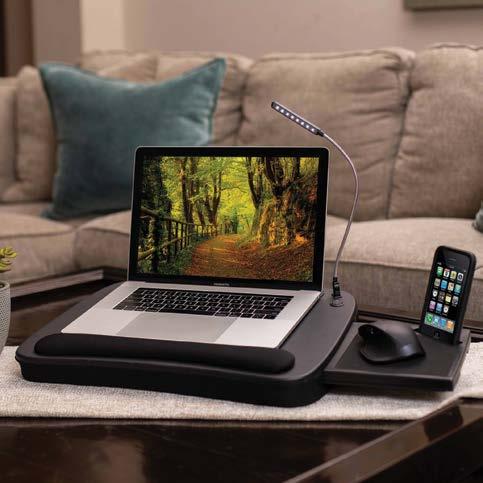
64 65 DETAILS | Trends
BULL RUN
Take the Year of the Ox by its horns with the help of items with a detectable Chinese influence
BULL NECK
Burberry is going all in on the Year of the Ox with a Chinese New Year collection, including an Italian-made striped jacquard scarf featuring a monogram motif inspired by the zodiac sign. Made of organic wool and mulberry silk.

From HK$2,900 ($374), burberry.com
EATING STREETS
Nike has partnered with Guangzhou artist Jason Deng to launch the Chinese New Year’s most enviable sneakers yet: SB Dunk Low Street Hawker. The watercolourembellished kicks are modelled on regional dishes in China such as yang chun noodles and roast goose.

$110, nike.com
GIN UP
Craft gins from Hong Kong distillery Two Moons make for an authentic Chinese New Year celebration. Their awardwinning signature dry gin is a must-try, which uses a dozen botanicals including Chinese almonds and other sweet nuts.

HK$530 ($68), twomoonsdistillery.com
BELT AND ROAD
Kids can have their own Lunar New Year revelries with four all-new themed Logo playsets, which include Spring Lantern Festival, featuring an illuminated ox lantern, and Story of Nian, recreating the legend of the mythological creature.
From $79.99, lego.com
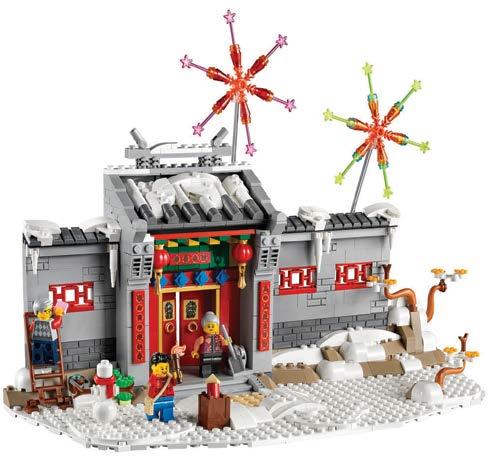
FOOD WARS
Dig in your favourite Asian dishes with a pair of lightsabre-inspired chopsticks by Chop Sabers. These BPA-free plastic utensils can glow red, green, blue or purple at the touch of a button, faster than you can say, “May the fork be with you.”
From $11, amazon.com
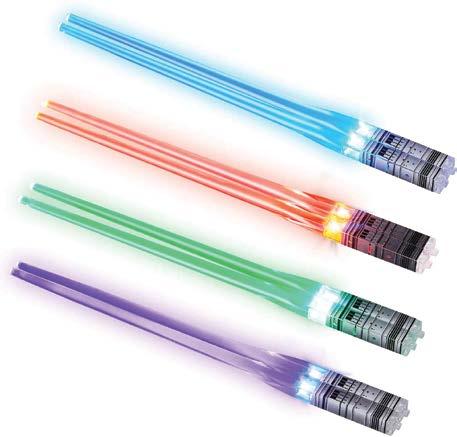
66 67 DETAILS | Style
SAFE PASSAGE
Gear up for the next instalment of the not-yet-Roaring Twenties with products that innovate to keep you healthy, productive, and creative
TAKE PAINS
Theragun now has a mini version. The portable percussive massage gun is a handy tool for soothing your body and relieving muscle aches after a strenuous session exercising at home.

$199.00, theragun.com
FLIP AND SWITCH
Remember when flip phones ruled the mobile world? Take it way back to the 2000s with the Moto Razr 5G, which offers not just a large touchscreen but a foldable one.

$1,399.99, motorola.com
PULL BACK
Invest in the Hydrow Rowing Machine for home workouts. The screen attached to it is a real clincher: it can show you live virtual classes on demand and other visuals to make your workout an immersive experience.
From $1,995, hydrow.com
CHARMING PRINTS
Take 3D printing from the factory to your home with the Creality Ender 3 Pro. Its Meanwell power supply ensures fast heating, good for heavy printing loads, while the magnetic platform sticker allows for easy removal of models from the printing surface.

From $209, creality3dofficial.com

STRAIGHT SHOOTER
With Covid-19 still going strong, be safe with SprayCare, a lightweight wearable that atomises disinfectants from your wrist to clean surfaces (and your hands) on the go. Think Spiderman’s web shooter, only more sanitary.
From $32, spray.care

68 69 DETAILS | Gadgets
SENSE OF PLACE
Ingenious landscaping and considered nods to Malaysia’s architectural and cultural heritage are integral to the package at Anantara Desaru Coast Residences in Johor
 BY AL GERARD DE LA CRUZ
BY AL GERARD DE LA CRUZ
70 71
Malaysia is making Desaru Coast great again. A favourite of holidaymakers from nearby Singapore since the 1980s, the 17-kilometre beach-fringed strip in southeastern Johor has pried the spotlight from the peninsula’s other tourism hubs, with a little nudge from Khazanah Nasional Berhad, Malaysia’s sovereign wealth fund. It is, as former tourism minister Mohamed Nazri Bin Abdul Aziz says, an attraction the government has been “banking on”, with an international ferry terminal due to open in 2021.
Themed Attractions Resorts & Hotels Sdn Bhd (TARH), a unit of Khazanah Nasional Bhd, is transmuting Desaru Coast into a $1.1bn premium integrated destination resort. Garlanding 1,578 hectares (3,900 acres) of the peninsula, the Desaru Coast master development opened to the public in 2016 with a 27-hole golf course designed by South African great Ernie Els and, a year later, an 18-holer designed by Fijian maestro Vijay Singh. The 25-acre
SET BESIDE ANANTARA DESARU COAST RESORT & VILLAS – THE THAI HOSPITALITY BRAND’S FIRST LUXURY HOTEL IN MALAYSIA –ANANTARA DESARU COAST RESIDENCES OFFERS FULLY FURNISHED SEASIDE POOL VILLAS ALONGSIDE A FULL COMPLEMENT OF FIVE-STAR RESORT FACILITIES IN AN ECO-SENSITIVE SETTING. SOME UNITS EVEN FEATURE FLAT ECOROOFS THAT ALLOW LOCAL FLORA TO GROW
Adventure Waterpark, one of the world’s biggest theme parks, followed suit in 2018, as did a 23-acre waterfront retail village.
Big-hitting hospitality brands have washed ashore, too, from Hard Rock Hotel to The Westin and One&Only. Partnering with TARH, Thai development giant Minor International opened the Anantara Coast Resort & Villas in 2019, followed by the adjacent Anantara Desaru Coast Residences last year.
The latter, a boutique collection of 20 seaside pool villas managed and serviced by Anantara, marks Minor International’s first foray into luxury real estate development in Malaysia. “From a development perspective, we are mindful that we are investing in an emerging, up-and-coming location as a first mover,” says Micah Tamthai, vice president of real estate at Minor International. “Whilst there is some work that we need to do to raise more awareness on the destination, Malaysian travellers are also increasingly taking up the opportunity to discover up-and-coming destinations like Desaru Coast.”
Minor International set the $195.6m development into motion as early as 2014 when the company shortlisted WOW Architects to join the project. The Singapore-based design consultancy won the invitation-only bid with its progressive, eco-sensitive masterplan concept for the branded residences. “We feel that the way forward for new resort developments is an eco-awareness principle that must be purposeful and engaging to its guests, residents and locality,” says Wong Chiu Man, managing director at WOW Architects.
The developer instructed the design team to cast Anantara Desaru Coast Residences in the mould of indigenous architecture and craftsmanship. The development has been master-planned as a triumvirate of zones that reference Malaysia’s rich heritage of architectural movements: Colonial Plantation, reflecting late 19th century Malaya; Malay Kampung House, defining vernacular culture; and the Beach, mirroring the geography of the peninsula.
“The team of architects, interior designers, and landscape consultants collaborated to develop a shared vision and a common design language, comprising motifs, colours and a restrained but relevant material palette, to evoke an authentic but modern resort and residential experience that remembers the past but also looks forward to the future,” says Tamthai.
The villas trade on frame-worthy views of the South

72 73
China Sea, although the topographical quirks of the 304,000 square foot site made them labour-intensive goals at first. “The original site was relatively flat, and we had to design a masterplan that allows for ocean views throughout the site,” recounts Wong. “This was achieved through shaping the terrain of the site by raising the ocean-view ‘beach residence villas’ to a higher platform level as well as creating a natural stone and landscaped hotel podium that blends into the topography while maintaining the natural appearance of the landscape.”
Twelve three-bedroom pool villas and eight fourbedroom pool villas, in built-up sizes ranging from 3,100 sq ft to 6,426 sq ft, have since risen onsite. Four of the four-bedroom villas sprawl over a single storey, with master bedrooms that have direct access to beach and pool alike. The four-bedroomers also have four two-storey variants, featuring multi-purpose spaces with vantage points of the ocean.
Expansive, floor-to-ceiling glass facades marry the panoramas of the sea to the interiors and maximise passive lighting and natural ventilation. Living, dining and family spaces spill onto the pool terraces. “The
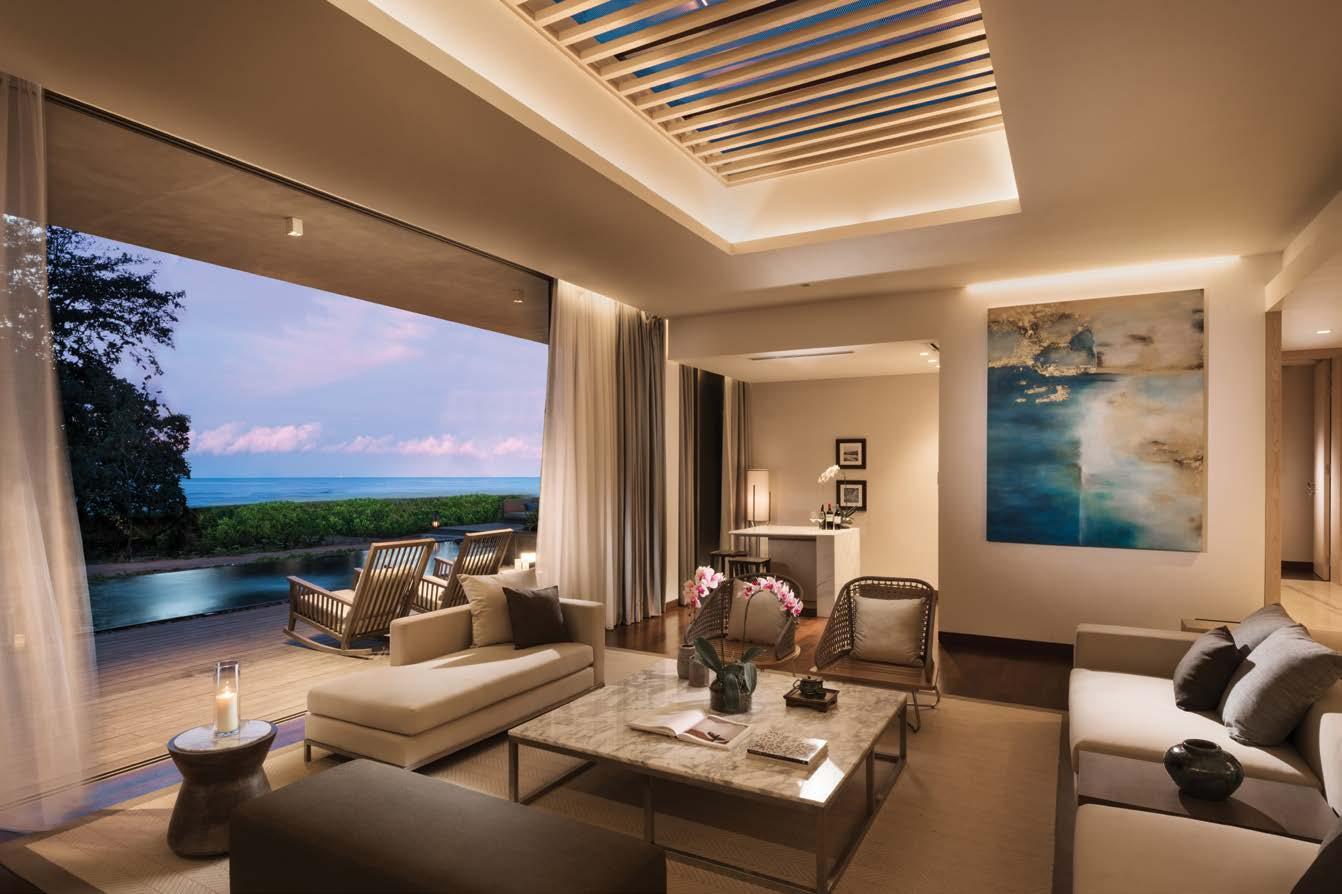

intent was to create inspiring, open, spacious, and well-ventilated indoor and outdoor spaces which are key features to tropical living,” says Wong.
Malaysia’s own EDC Interiors opted for decorative and furnishing choices that recall fishing nets, weathered wood, and the cerulean blue of the ocean, wresting inspiration from Desaru Coast’s origins as a fishing area. “While contemporary, we wanted the design to also reflect the infusion of local touches,” says Vincent Koh, principal of EDC Interiors. “Inside each villa, we created a tranquil beach hideaway with a timeless aesthetic that pays tribute to local traditions and culture.”
Matte beige stone floors, brown and grey wood, and textured fabric further anchor the interiors in nature. “The elegant, subtle colour palette, materials, and décor allow the panoramic coastal scenery to be the main focal point,” adds Koh.
The landscaping, courtesy of Element Design Studio, was zone-specific, veering between ruggedness and artifice. In the Beach ecology, villas are set in natural shrubland on tree-lined, sandy, sloping terraces that
74 75
THE INTENT WAS TO CREATE INSPIRING, OPEN, SPACIOUS, AND WELL-VENTILATED INDOOR AND OUTDOOR SPACES WHICH ARE KEY FEATURES TO TROPICAL LIVING
ON A CLEAR DAY, THE VILLAS OPEN TO PANORAMIC VIEWS OF THE SOUTH CHINA SEA AND LUSH GREENERIES, FRAMED BY ENORMOUS FLOOR-TO-CEILING SLIDING GLASS PANELS
EACH VILLA HAS AN OPEN-PLAN LAYOUT, WITH GENEROUSLY SIZED DINING AND LIVING SPACES THAT FLOW OUT TO THE PRIVATE INFINITY POOL
IN ADDITION TO THE LAGOON POOL AND OCEAN-FRONTING INFINITY POOL WITHIN THE ADJOINING RESORT, THE VILLAS OFFER A SPACIOUS PRIVATE POOL AND SUNDECK THAT CHAMPION THE USE OF DURABLE MATERIALS AND PROVIDE SCOPE FOR OUTDOOR ENTERTAINING

WELL-VENTILATED EN SUITE BEDROOMS LINK TO THE NATURAL FOLIAGE OUTSIDE VIA EXPANSIVE GLASS FACADES, BLENDING THE VERDANT OUTDOOR LANDSCAPING WITH MODERN, UNCLUTTERED INTERIORS
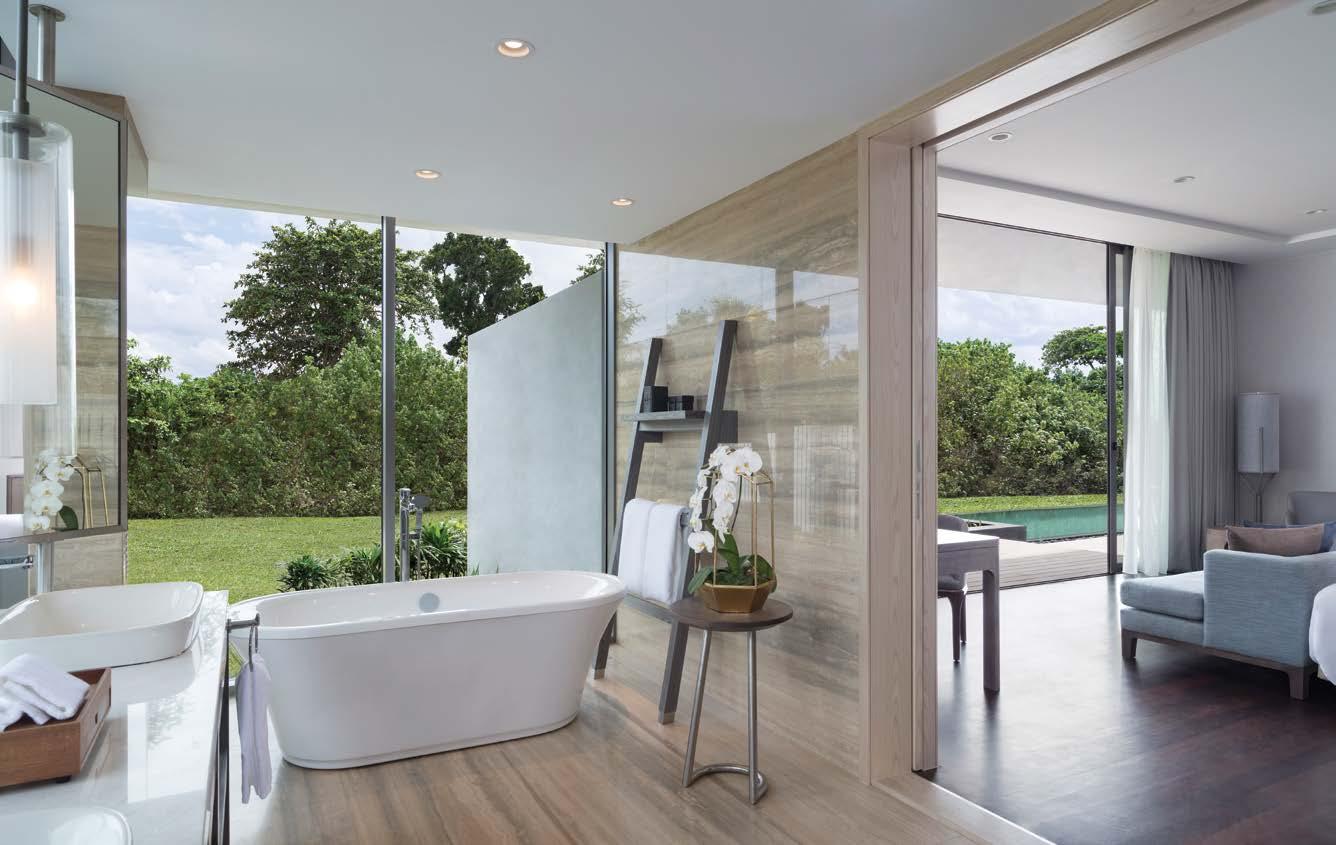
connote a wild coastal environment. In contrast, the Kampung and Colonial Plantation ecologies are carpeted in more manicured, manmade-looking landscapes.
“Each ecological zone has its distinct landscape characteristics,” says Wong. “To preserve the trees that are growing onsite, we had to set back the beach residence villas to minimise the impact of the zone and at the same time make provisions for beach access while maintaining privacy.”
The design team exercised more lateral thinking with the roofscape. Waterproof reinforced concrete structures with stone gravel toppings enable the roofs of the villas to become substrates for plant life. “The eco flat roof concept was designed to allow local flora to grow and inhabit it over time,” explains Wong. “Over time, guests and residents will be able to enjoy a view of green roofs blending with the natural landscape along the beachfront.”
Cool breezes naturally fan the units, reducing energy loads during the monsoon season. The architects also made their preferences known for low-maintenance, low-impact building materials. With products locally sourced from renewable sources, construction began in July 2017.
“The direction from the client and their team was to build the project sustainably and responsibly,” Wong says. “This required tremendous cooperation between designers, project managers, contractors and suppliers, to bring this vision to life.”
Priced from MYR7.5m, the residences have begun handover since 2020, with some units “reserved by private Malaysian buyers”, reports Tamthai. “As Desaru Coast becomes more developed, the value of land and property will appreciate, which will translate to long-term capital gains for us and our residential owners as a first mover in this pioneering destination.”
Anantara Desaru Coast Residences offers investors a rental programme managed by Anantara Desaru Coast Resort & Villas. End users have full access to the resort’s five-star amenities and services, including Anantara Spa, offering Thai and Malay treatments alike, and Dining By Design, Anantara’s signature private dining experience.
Malaysian, Thai and international fare awaits diners in various restaurants: from alfresco dining by the beach at Sea.Fire.Salt to indoor gastronomy at Turmeric, plus vintages and cigars at Observatory Bar. Butlers are on call 24 hours a day, and private chefs are bookable. Homeowners bask in a lagoon pool and infinity pool as alternatives to the sea; younger ones enjoy the kids and teens’ clubs.
“As a branded residence, our product would be as valuable as a family or multi-generational holiday home as it would an investment property,” says Tamthai. “Should they choose to resell in the future, the branded residence offering places them in a
better position to leverage land and villa capital appreciation.”
Despite the pandemic’s assault on tourism, Minor International will be launching this year more Anantara-branded residential developments, also in symbiosis with adjoining hospitality properties. Avadina Hills by Anantara, 11 Japanese-inspired pool villas, will rise adjacent to the Anantara Layan Phuket Resort in Thailand while Anantara Ubud Bali Villas, 15 pool villas with expansive forest views, will open in Indonesia.
Adds Tamthai: “Covid-19 has underlined our collective desire to escape to destinations like Desaru Coast –those which offer nature and space, where ‘social distancing’ is a given and where the emphasis is placed on wellness and wellbeing.”
76 77
Heart of the Sun
Taking cues from her father, Sunway Group’s visionary founder Jeffrey, Sarena Cheah is deploying a collaborative, sustainable philosophy to elevate one of Malaysia’s biggest developers
 BY BILL BREDESEN
BY BILL BREDESEN
79
Consumer preferences in real estate are undergoing a profound shift amidst the global pandemic, according to Sarena Cheah, the managing director of Sunway Group, one of Malaysia’s largest conglomerates.
With work-from-home arrangements increasingly common, an intensified focus on wellbeing and safety, and fast-changing demographics, especially in Malaysia,
real estate developers must adjust their approach if they want to meet the rapidly evolving demands of the new marketplace, she says.
Sunway has a vast range of commercial interests in real estate, construction, tourism, retail, healthcare and education, among other sectors. The company’s innovative master community developments create integrated and
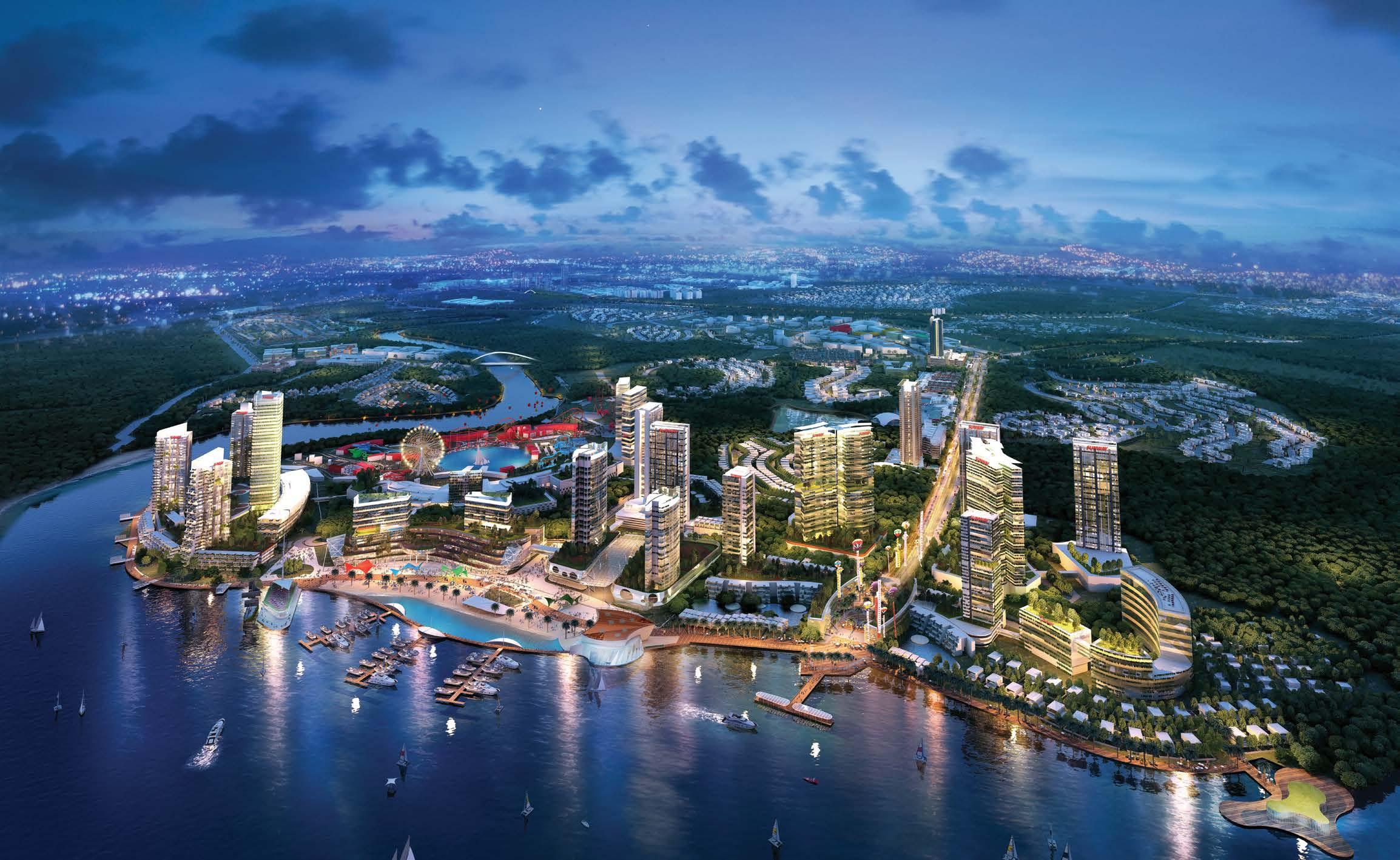
WITH A GROSS DEVELOPMENT VALUE OF MORE THAN MYR30 BILLION OVER 1,800 ACRES OF LAND, SUNWAY ISKANDAR IN JOHOR IS SUNWAY’S LARGEST TOWNSHIP
sustainable cities and communities while embracing a unique “Build-Own-Operate” strategy. Cheah is heavily involved in the company’s property developments.
Her father, Jeffrey Cheah, founded Sunway in 1974 and remains active in its day-to-day operations as the Group’s chairman. The younger Cheah launched her career with Sunway in the late 1990s and witnessed first-hand the formidable challenges wrought by the Asian Financial Crisis in 1997-98.
The company, she says, is fundamentally much stronger today in terms of its balance sheet, employee talent, infrastructure and overall stability. Its top leaders—including Cheah and her father—are also able to leverage their experience, having guided Sunway through previous stretches of economic turbulence to navigate the current cycle.
“The imperative is for us to stick to our core values and organisational purpose, act fast to protect and preserve our people and ecosystems, and do all that’s necessary to ensure financial survival and sustainability,” she says.
The company has also taken steps to expand its footprint internationally, with major projects in China, Singapore and the UK—all locations where Sunway intends to seek more opportunities in the future, says Cheah.
“We view our relationship with our customers not as something that ends at the building or selling of homes. Rather, our care for their health and wellbeing extends throughout their lives,” she says.
“Most importantly, we want to create resilient and thriving communities where everyone can live, learn, work and play in healthy and connected environments.”
How is the pandemic impacting your projects currently under development?
While the lockdowns have affected the progress of some of our ongoing projects, the delays have largely been manageable. We do not anticipate severe financial impact, especially with the passing
80 81
We view our relationship with our customers not as something that ends at the building or selling of homes. Rather, our care for their health and wellbeing extends throughout their lives
in Malaysia of the Temporary Measures for Reducing the Impact of Coronavirus Disease 2019 (COVID-19) Bill.
Exercising prudence, we have delayed some of our launches, aligning them with the current macroeconomic landscape. We have realigned our launches from a gross development value (GDV) of MYR3.5 billion ($863m) to MYR2.2 billion ($542m)—which would still be a record year for us. Most of our launches this year are in Singapore. Our current unbilled sales stand at MYR3.1 billion ($764m) as of June 2020.
Sunway has a vast portfolio. What segments of the business are you personally most interested in?
Yes, Sunway is a conglomerate with many businesses, built organically over the past four decades, guided by our Chairman’s vision. All the businesses operate in synergy with each other and together form an ecosystem for communities to grow and thrive. I like to describe us as a “living community” serving another “living community.”
I currently spend a majority of my time in the property development division, and my vision for this division is not merely to operate as a developer of real estate but as a developer of communities. In this regard, we take a long-term view in all that we do and work to deliver value and a better future for the communities we create and serve.
What is the appeal of the “BuildOwn-Operate” model?
The Build-Own-Operate model is the cornerstone of our Master Community Developer strategy. By continuing to own and operate substantial investment properties in our developments, we become co-investors with our property purchasers, ensuring them that
our interests are aligned and that we have the long-term good of the communities at heart.
Owning substantial parts of a development also allows us the opportunity to continuously help communities in our developments thrive through activities organised by our various businesses. The next step for us is to transform each of our townships into “living labs,” where everyone can come together with us to innovate solutions for our future.
A recent example is our Sunway FutureX Farm in Sunway City Kuala Lumpur. This is the first urban farm innovation hub in Malaysia that we have invested in, in partnership with Sunway Innovation Labs (Sunway iLabs). It has indoor and outdoor farming areas, a research and development centre, training and collaborative spaces as well as a café.
We envision Sunway FutureX Farm as a space where our researchers, government bodies, entrepreneurs and communities can come together to develop next-generation smart-farming solutions so that we can utilise underused urban spaces for agriculture in our townships and developments.
Your townships and integrated developments have helped to transform the landscape in Malaysia. Where do you see innovation coming from in the years ahead?
In the past decade, we invested in digital technology that will drive our efficiency and productivity, including robotic automation, e-procurement and migration to the cloud. We also started integrating technology to ensure better customer outcomes. We will continue to invest in these to remain agile and competitive.
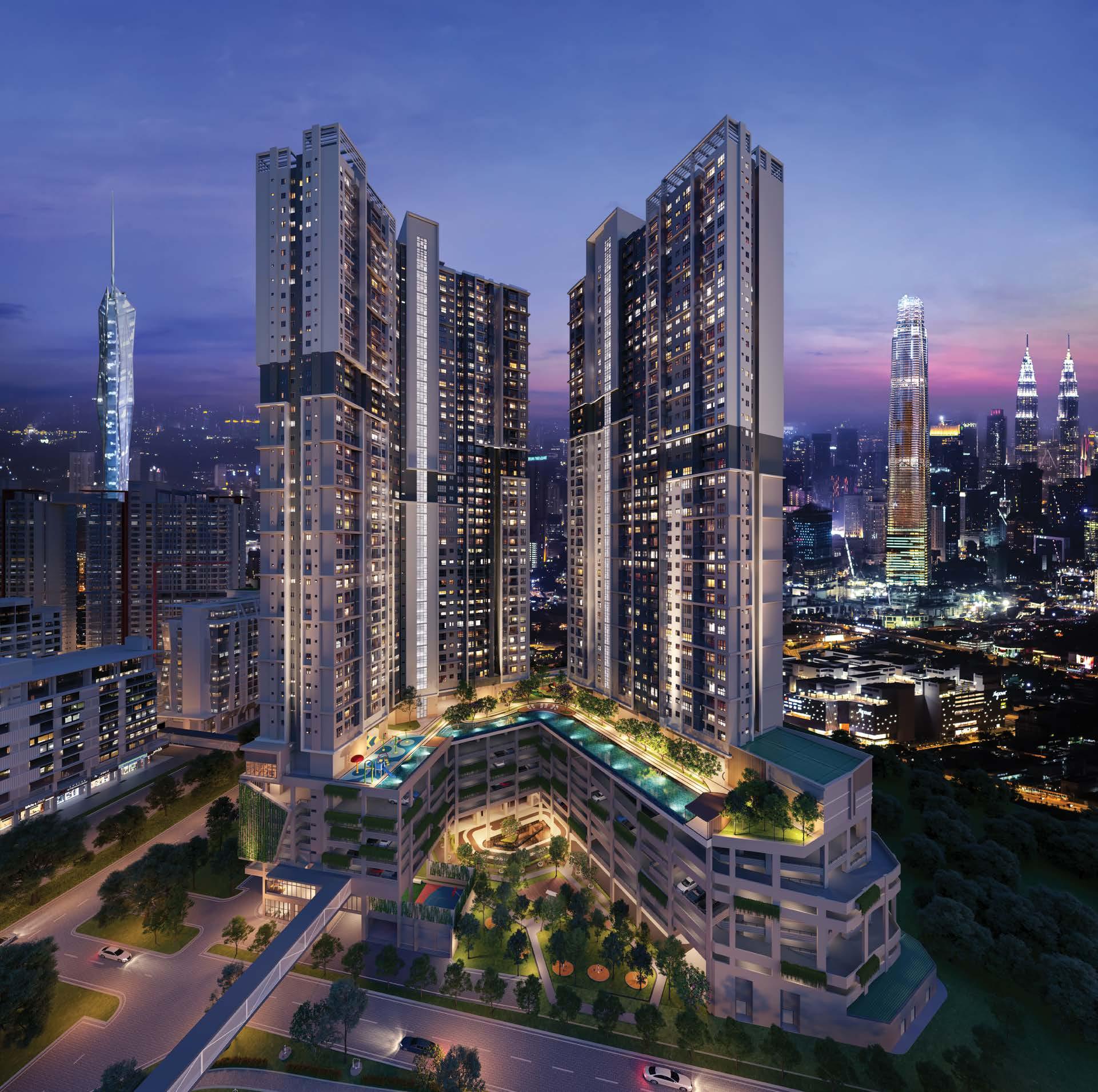
82 83
LOCATED JUST 3.8 KILOMETRES FROM KLCC, SUNWAY VELOCITY TWO IS ONE OF SUNWAY PROPERTY’S LATEST DEVELOPMENTS AND IS SURROUNDED BY AN ARRAY OF URBAN CONVENIENCES FOR THE RESIDENTS TO ENJOY
Our business units are also expanding into virtual products and services. For example, our healthcare unit launched telehealth services, while our retail division launched a digital retail component.
The next leap forward is the adoption of 5G technology. At 100 times faster than 4G’s speed, we can effectively game-change how we operate, transact and perform our daily activities. We have recently teamed up with Celcom Axiata, one of the largest mobile operators in Malaysia, and Huawei, one of the largest telecommunications equipment and smartphone manufacturers in the world. Together, we will testbed and launch nextgeneration urban solutions in Sunway City Kuala Lumpur.
In the pipeline we have enhanced remote education that leverages facial recognition and artificial intelligence, blockchain technology that will be used for transparency and authenticity of academic certificates delivered to university students, driverless buses, and the expansion of telehealth capabilities utilising drone delivery for medicine.
Sustainability is increasingly an important factor in developments. In what ways is Sunway trying to be a leader in this sphere?
We have embraced the UN’s Sustainable Development Goals and adopted its principles wherever we can. All three of our townships— Sunway City Kuala Lumpur, Sunway City Ipoh, and Sunway Iskandar—include up to about 40% green
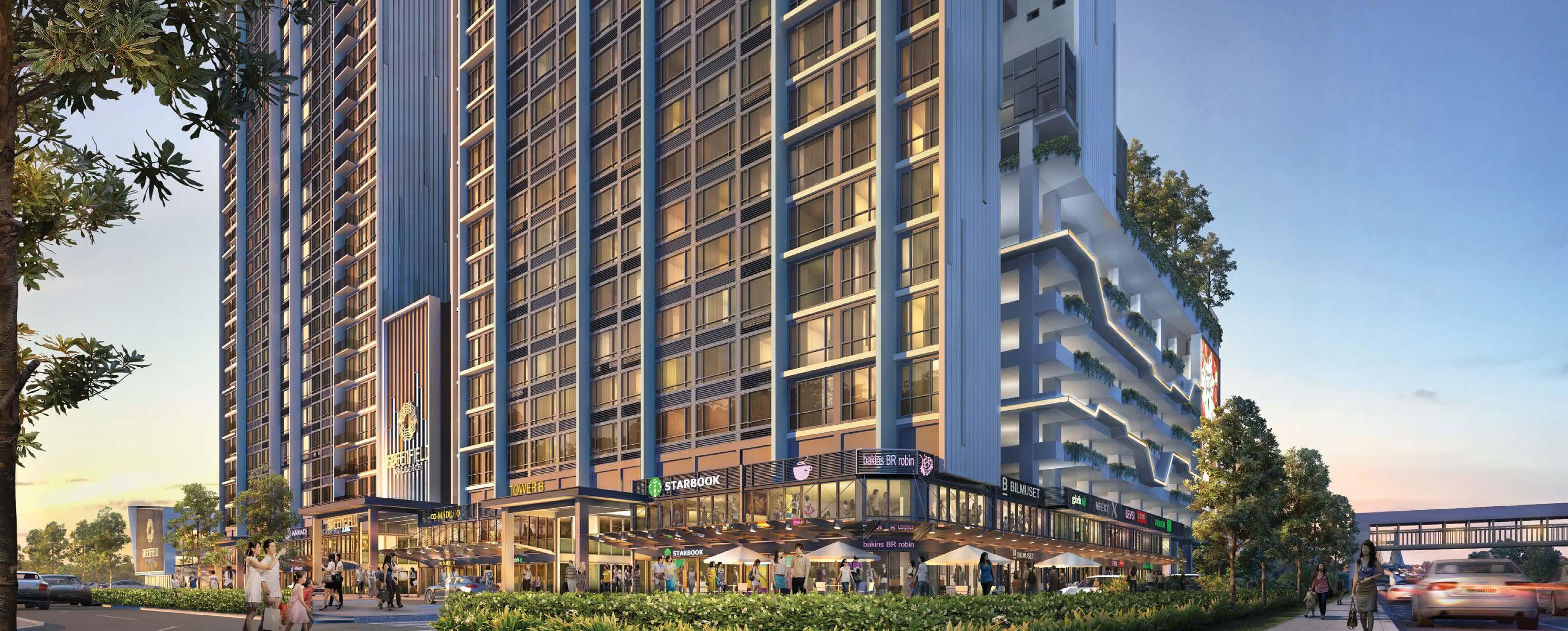
and blue spaces.
Sunway City Kuala Lumpur is our testbed for new ideas and innovations, where we will first adopt new township solutions before replicating them in our townships and developments. We have incorporated elements like solar panels across public walkways, rainwater harvesting systems, a water treatment plant and waste management systems to make our township more sustainable. We have even co-invested with the government to build public transportation connectivity using electric buses, aligned across our township to provide residents and visitors convenience and connectivity.
Years ago we built a water treatment plant using water from one of the lakes in Sunway City Kuala
Lumpur. The water is treated using a hybrid of ultrafiltration and reverse osmosis processes to meet the quality standards of potable drinking water, and it is supplied to all Sunway’s commercial assets located in the area.
During a water disruption in September that affected 1.2 million consumer accounts, businesses in commercial assets in Sunway City Kuala Lumpur were undisrupted and could operate as usual. All our hotels, restaurants, universities and a mall that included hundreds of tenants were assured of a safe supply of water during that period.
We believe we can do well by doing good—the core tenet of sustainability.
84 85
GREENFIELD RESIDENCE, A SERVICED APARTMENT COMPONENT OF THE BANDAR SUNWAY PROJECT, IS ANOTHER EXAMPLE OF SUNWAY’S PROWESS WHEN IT COMES TO MIXED-USE
What lies beneath
BY DIANA HUBBELL
As high-end resorts and luxury private residences continue to proliferate across Asia-Pacific, designers must work harder than ever to create innovative spaces that stand out from the crowd. Gone are the days when travellers and investors around the region sought out generic signifiers of style. Instead, in this hyper social media-conscious age, eye-popping Instagrammable experiences that create a sense of place are increasingly essential.
Few design firms in Southeast Asia have excelled at crafting these so-called “wow” moments in the way that SODA Thailand has. The trendsetting company has lent its signature head-turning touch to brands such as W Hotels and Sofitel SO, both of which are renowned for properties that make a visual splash. Yet founder Stephen O’Dell views the creation of these aesthetic statements to be less about artifice and more about embracing the surroundings of each specific project.
“For me, design in a big sense is about discovering,” O’Dell says. “You peel away the layers, you chip away like a sculptor in stone and you discover what’s already there. I think this is more from an architecture sense as our hotels in resort locations are in special locations.”
Just as Michelangelo’s chiselled Prisoners appeared to emerge organically from solid rock, O’Dell sees his work as a matter of unearthing the magic that was present in a site all along. This outlook is part of
why no two projects by SODA Thailand are exactly alike. When successfully executed, these designs merge with their surrounding environment as though they always belonged there.
“I like to think that our work is seamlessly rooted to the site. I like it to look as if it’s always been there as if it’s a part of a landscape and not in opposition to it,” O’Dell says. “I often look to contemporary artists like Richard Serra and the way that they’ve taken art out of the gallery and into the landscape. We’re responding to the landscape not just in an artistic way, but in a memorable way.”
Before O’Dell begins designing a project, he spends considerable time investigating the specific site. He examines how the light moves over the landscape over the day, how the waterways flow, and what vegetation flourishes in the climate without excessive use of harmful pesticides and fertilisers.
“Every project has its own set of inspirations and challenges. If there was any overriding philosophy, it’s that we try to respond to a place,” O’Dell says. “When I walk a site, it’s so important to spend as much time as possible on-site from the early morning hours to the evening hours to see what the site has to offer. We look around for these moments.”
At the Hilton Yala, a forthcoming project that O’Dell believes captures his design ethos, a close examination of the site led to some truly jaw-stopping revelations. Guests
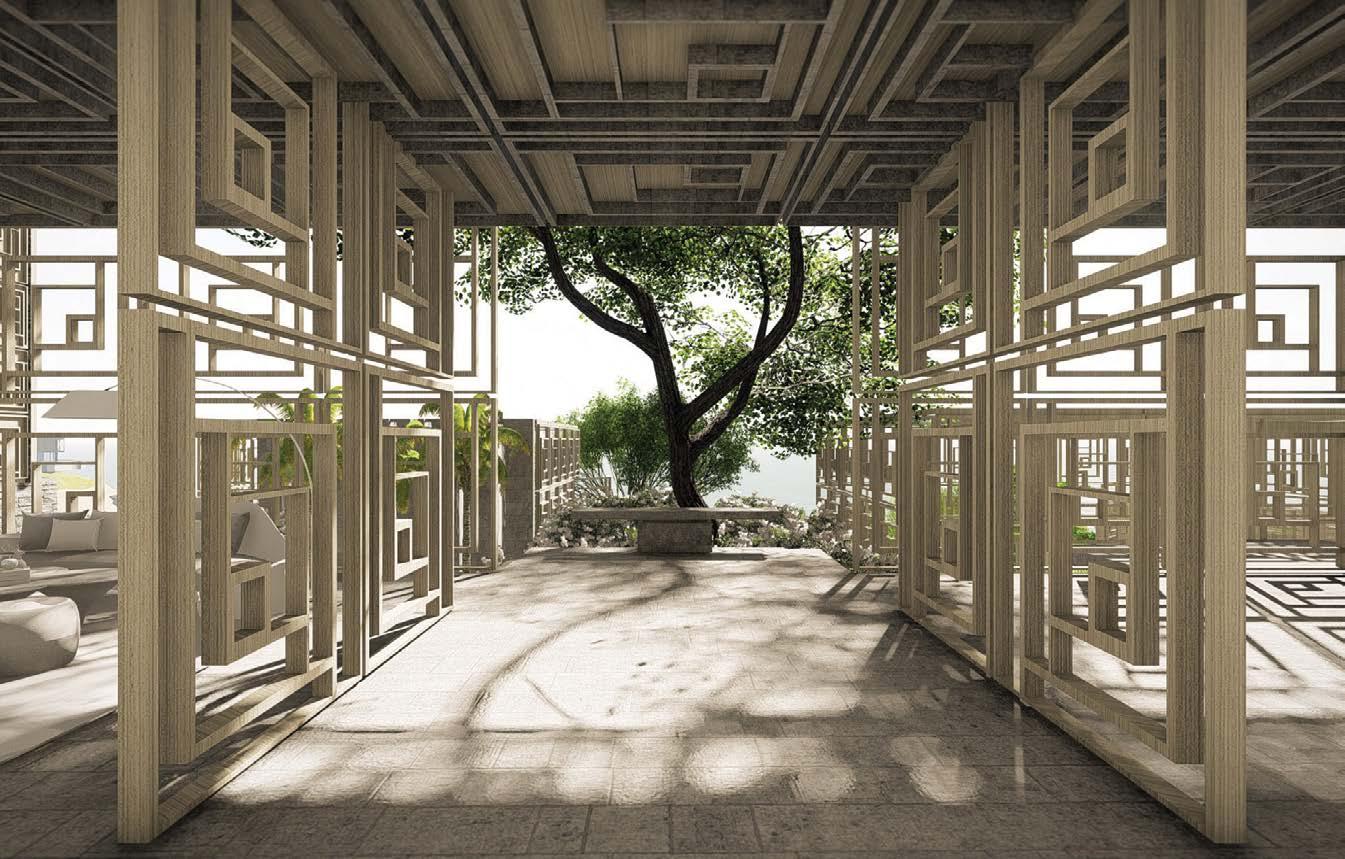
86 87
For Stephen O’Dell, the founder of specialist resort design firm SODA Thailand, the secret to memorable work is in letting the innate character of each project shine through
at the resort will be able to gaze upon the charismatic megafauna of Sri Lanka’s Yala National Park at a manmade watering hole.
“Did we create this ‘wow’ moment? No, but we created a bio pond for the elephants to come to drink and we worked with a local naturalist to select the right trees for them,” O’Dell says. “We were creating the stage for crocodiles and wild boar. There’s even a leopard rock and if you’re very lucky, you might even see a leopard. We responded to what we were given.”
Whether it’s the stars in the velvet-black sky over the Maldives or leopards lounging by a pool, these natural elements imbue the manmade designs with a hint of magic. When he comes across such inherently cinematic features, he does his best to use clever architectural design to set them in the spotlight.
“Like a film director or a theatre director, we set the stage for the guest to discover these moments for themselves,” O’Dell says. “We don’t create an object. We create a space and a sense of reception for discovery. The joy of our process is finding these moments ourselves.”
That sense of joy is one that lingers with guests long after their departure. Experiential travel is increasingly what drives both Millennial and Gen-Z consumers around the world. A sense of authenticity, coupled with that crucial element of surprise and delight, is what makes guests long to return.
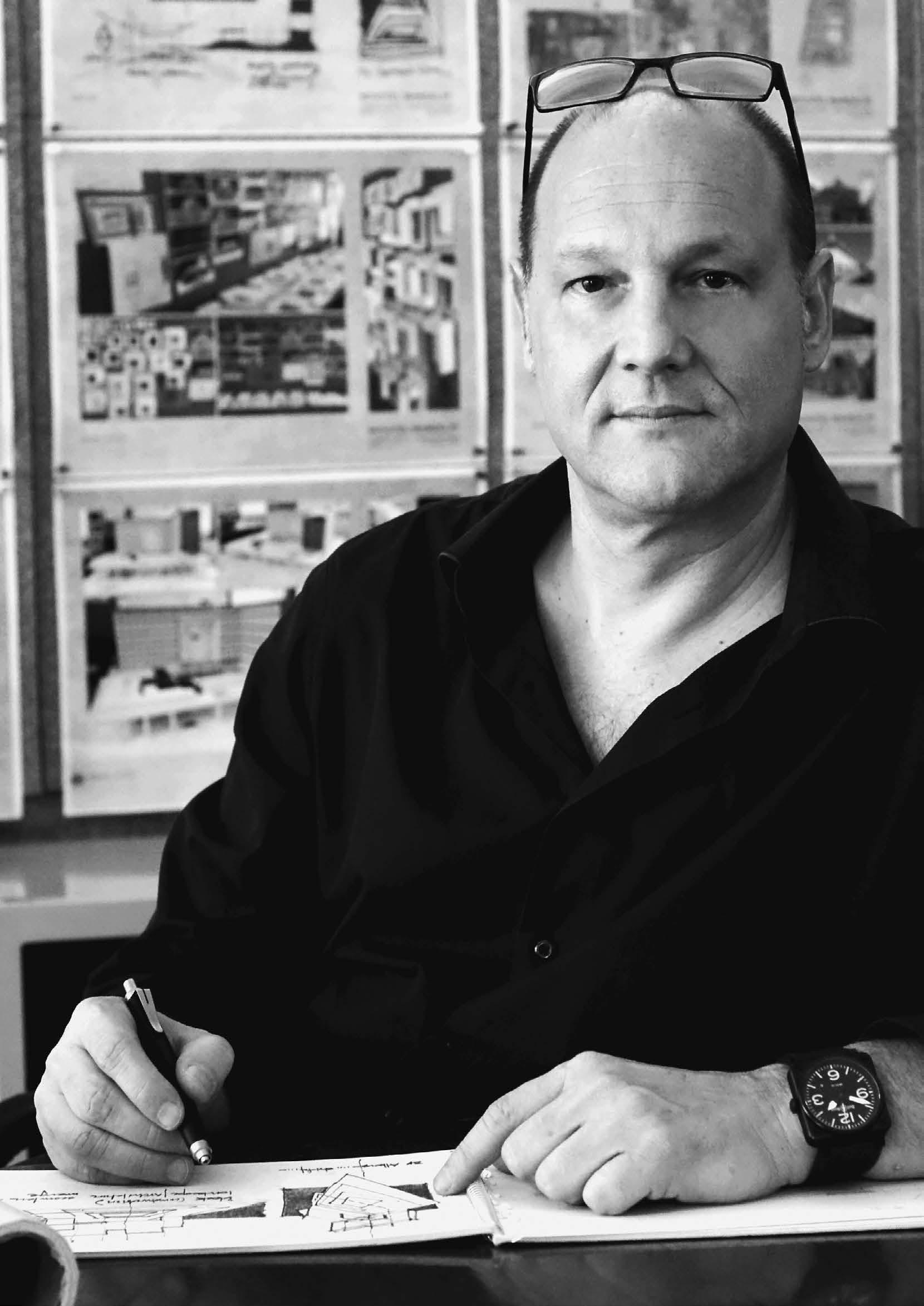
89
For me, design in a big sense is about discovering. You peel away the layers, you chip away like a sculptor in stone and you discover what’s already there. I think this is more from an architecture sense as our hotels are in special locations
88
SODA THAILAND FOUNDER STEPHEN O’DELL BELIEVES THAT HARNESSING THE INNATE CHARACTER OF A SITE IS KEY TO GREAT RESORT DESIGN
Hilton Yala, Sri Lanka
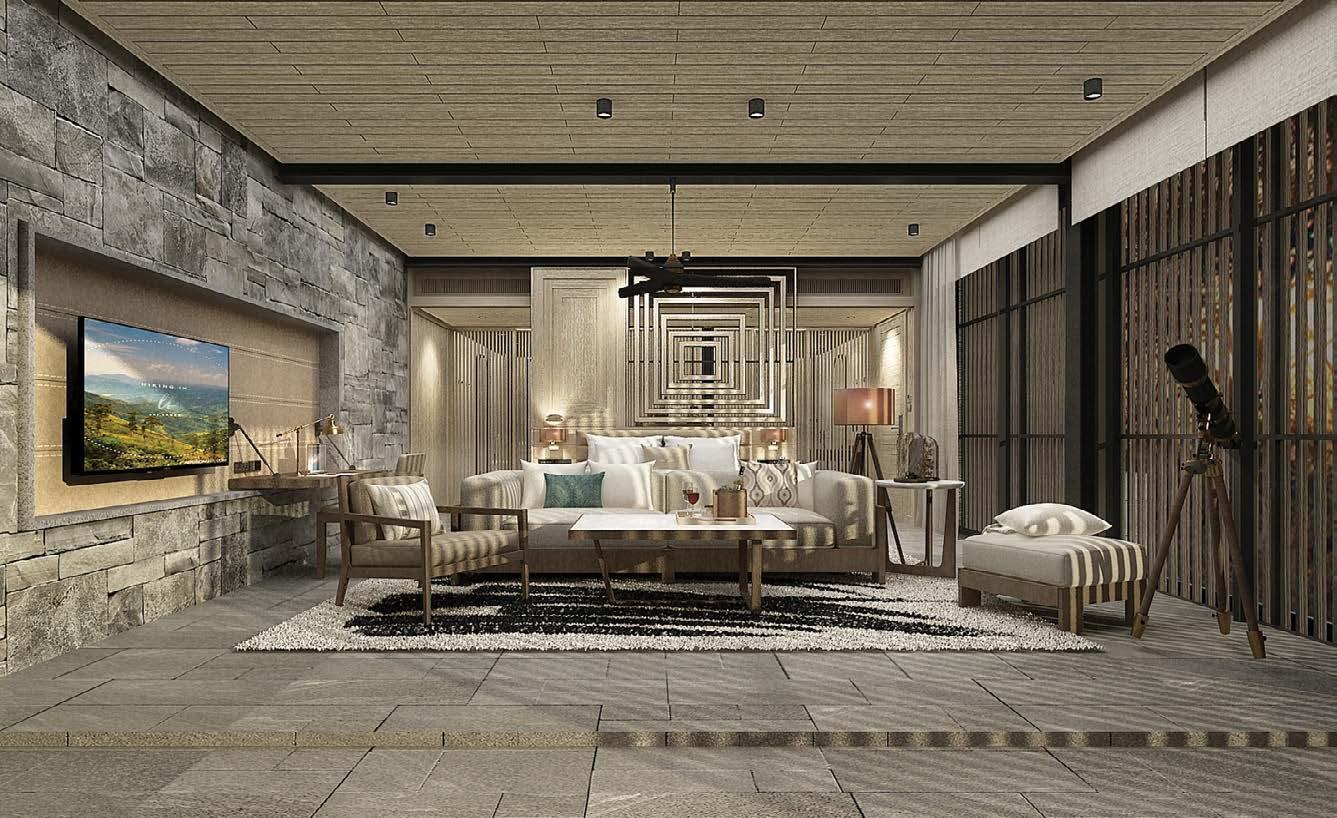
“The site was man-made in terms of the boundaries, but we had to all but erase the boundaries,” O’Dell says. Instead of relying on artificially imposed distinctions, SODA Thailand looked to the dramatic rock formations and the paths worn by generations of elephants. “We were the architect, interior designer and landscape designer for Hilton. Quite frankly, that’s a dream, because the interior and exterior can flow seamlessly into one another. You can create the entire design environment.” Once completed, the result will be all the more striking for its comprehensive integration into the landscape. “When people arrive, we take them through an opening through these canyon walls. It’s like Jurassic Park.”
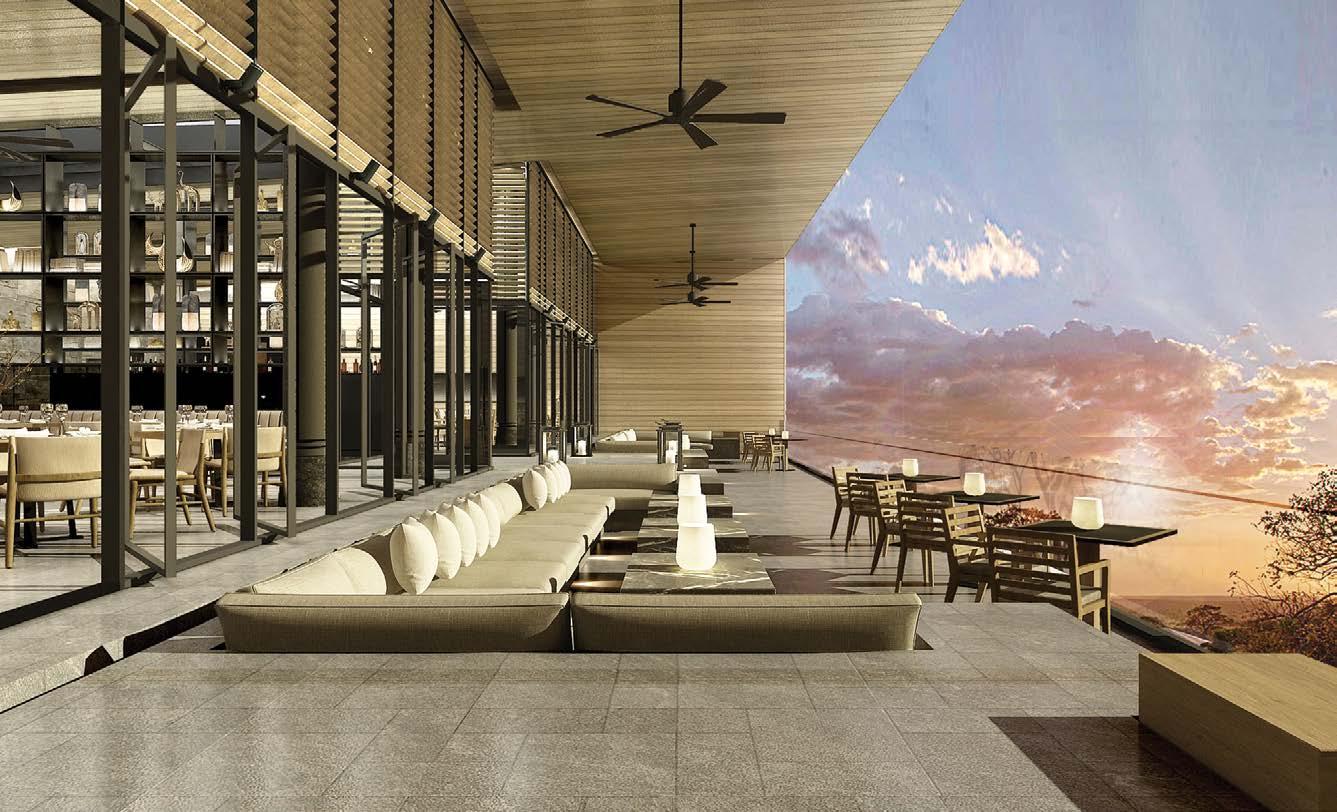
90 91
Sofitel SO KL, Malaysia
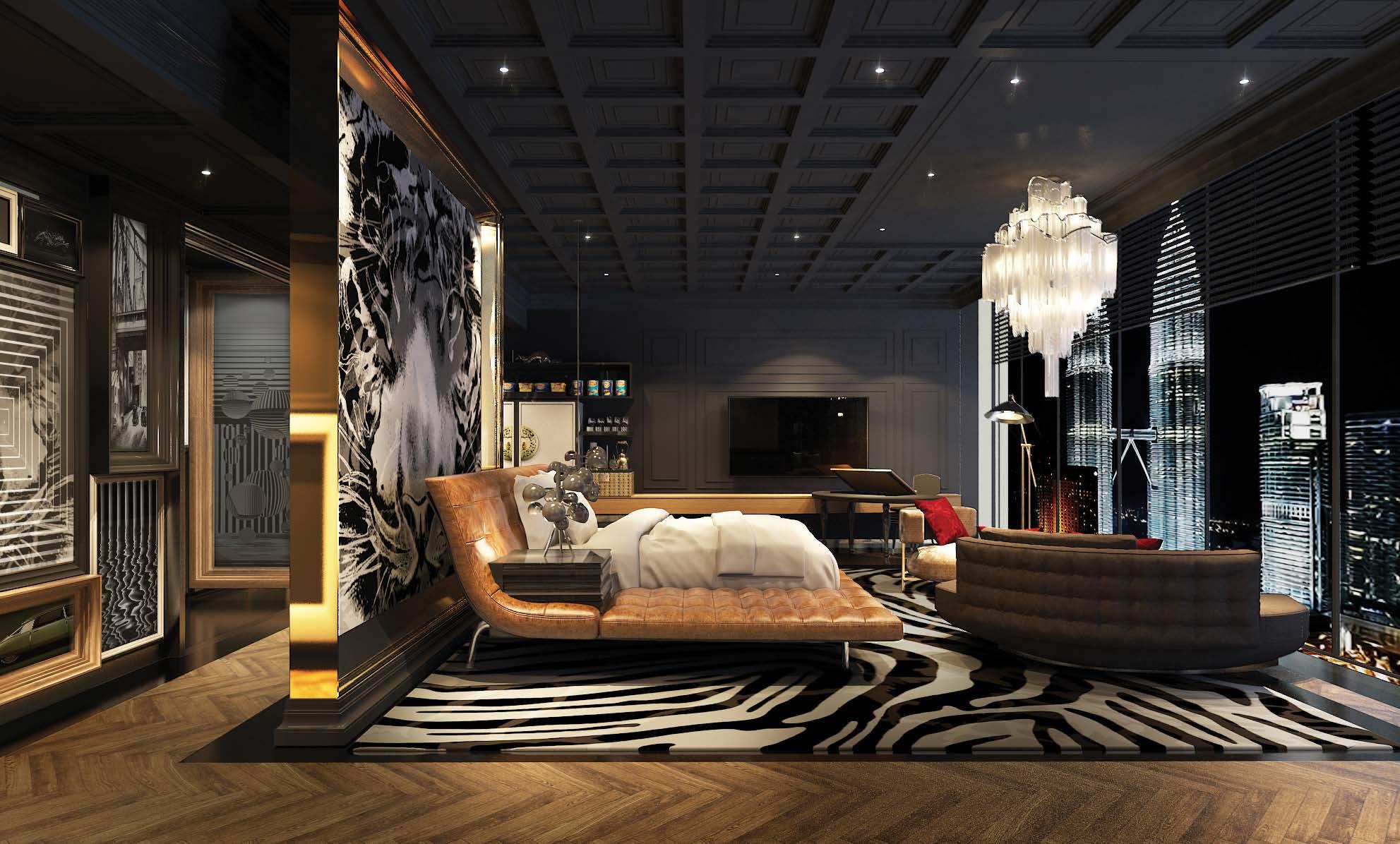
“[Sofitel SO] is a fun brand and it’s looking to create a little bit of a smile,” says O’Dell. “You look at something and it’s masculine but feminine. There’s a playfulness and it wants you to have that element of surprise.” To capture that playfulness while imbuing the property with a sense of place, SODA Thailand turned to Kuala Lumpur’s multicultural heritage. “We chose to blend Malay culture, Indian culture, Chinese culture, and French culture. So we wanted to express the melting pot of cultures that are there in KL,” he says. Rooms feature subtle nods to the various design aesthetics, including French moulding and Art Deco-inspired touches as well as mini-bars fashioned after Chinese lacquer cabinets and accent throw pillows in vivid hues inspired by Indian spices.

92 93
Anantara Kihavah, Maldives
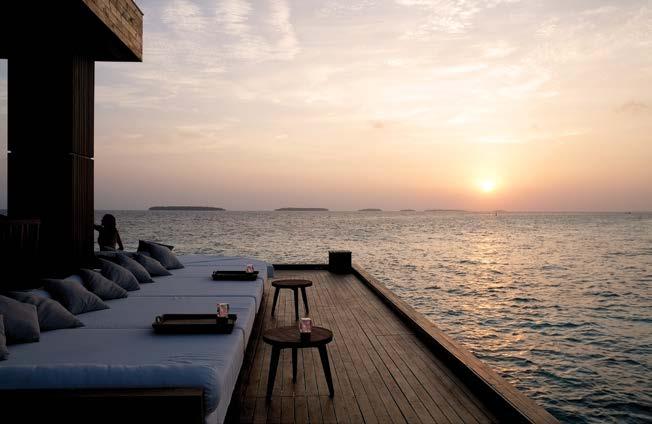
“Designers can create something out of the blue, but I think a really good designer can peel away the static,” O’Dell says. In this case, SODA Thailand helped draw attention to the stunning Maldivian night sky by building a series of two circular walkways around the resort’s telescope. “There’s an inner circle where the resident astronomer talks to you, and an outer circle where you can just enjoy the stars. From a functional standpoint, it was very elegant,” he says. “You sit around in a circle almost like around a campfire and then you walk across the bridge and see the stars. It’s very powerful, it’s very celestial, it’s very symbolic, and it’s also quite functional.”

94 95
“On the site for this resort, there were epic boulders and hundred-yearold trees,” says O’Dell. While many architects would have viewed these immovable natural landmarks as barriers, he saw them as an opportunity to express the island’s dynamic terrain throughout the resort. As guests enter, their eyes sweep over the landscape. “Our lobby building isn’t just the classic lobby with steps going down to the beach. It’s a journey,” he says. “You arrive and we take people out to a point that looks out over the site, then you take a left and go down a series of cascading steps to courtyards and a pool.”
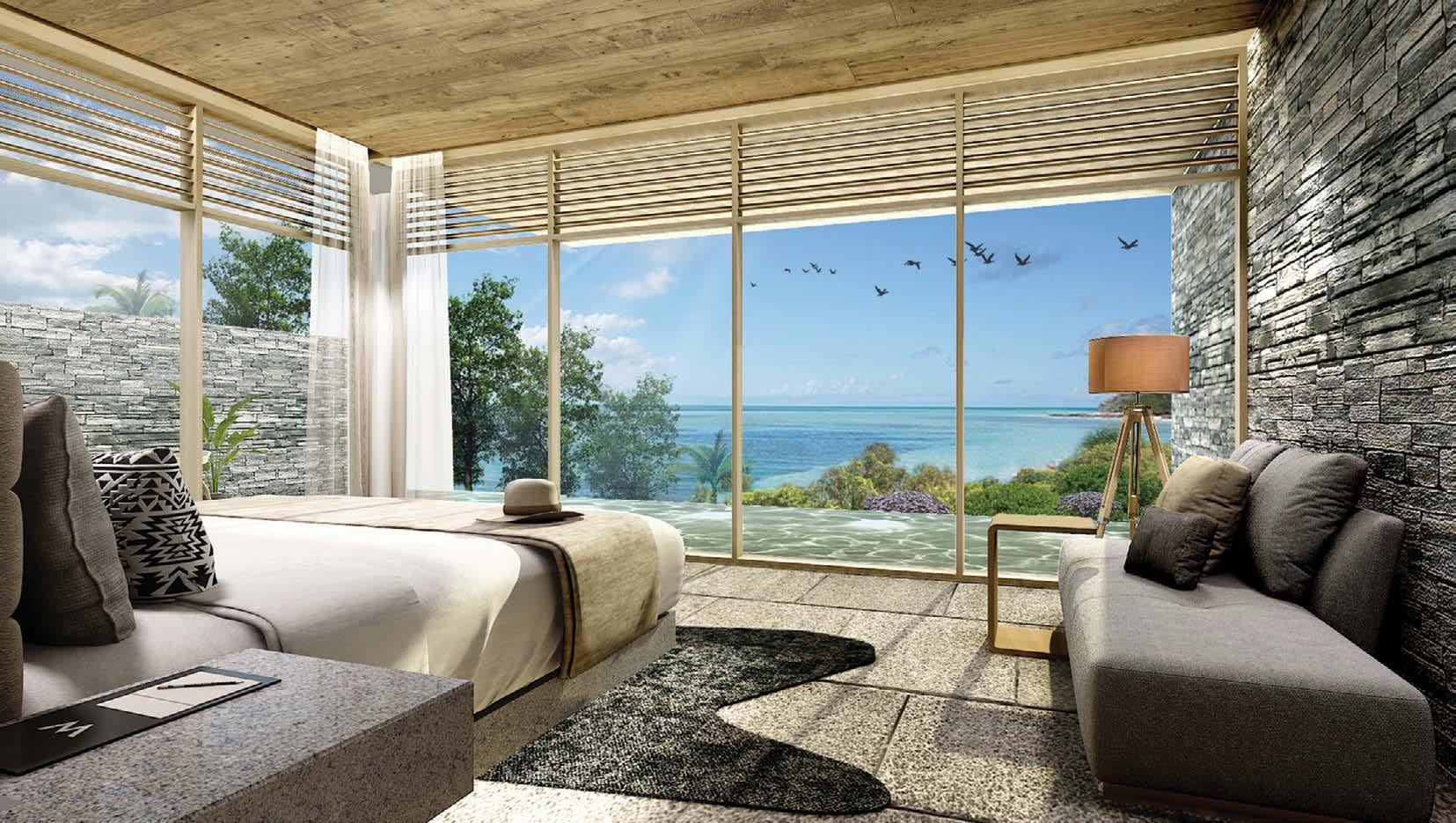

96 97
W Hotel Phuket, Thailand
MGallery Residences at MontAzure, Phuket, Thailand

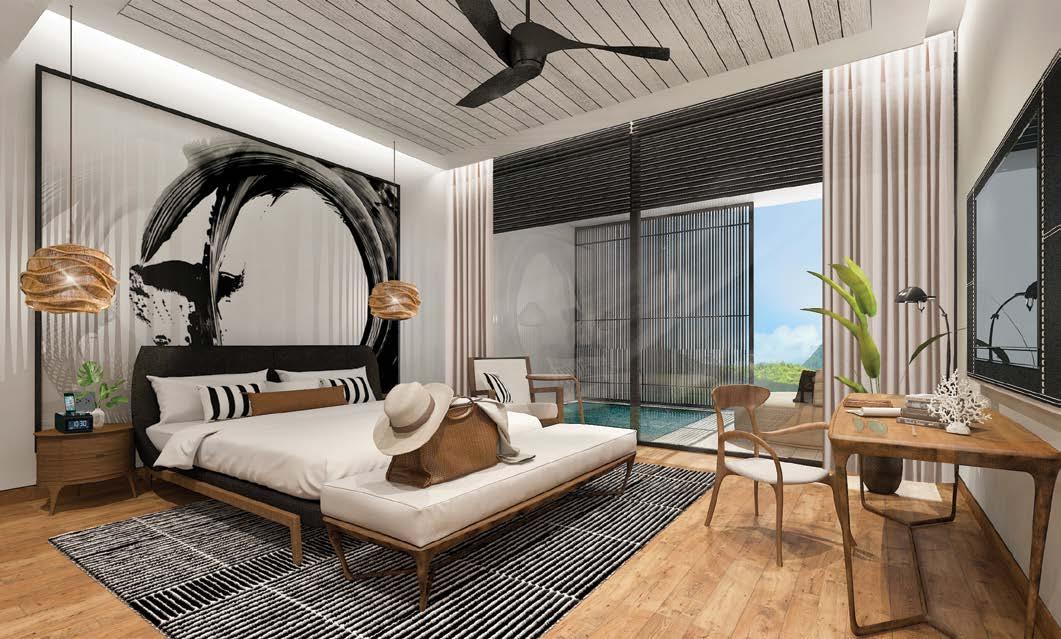
When it comes to private residences and luxury condominiums, a view is everything. Since there was no way to offer an ocean vista for every abode here, O’Dell and his colleagues knew that they needed to craft an equally appealing visual panorama for residents. “In this case, we did need to create internal spaces within the site and very articulate landscaping, with pools, water, tree planting, sightlines,” he says. “When it’s done, as you make your way around this site, it’s going to keep changing. There’s going to be this infinite number of views with the mountain or the sea as a backdrop.”
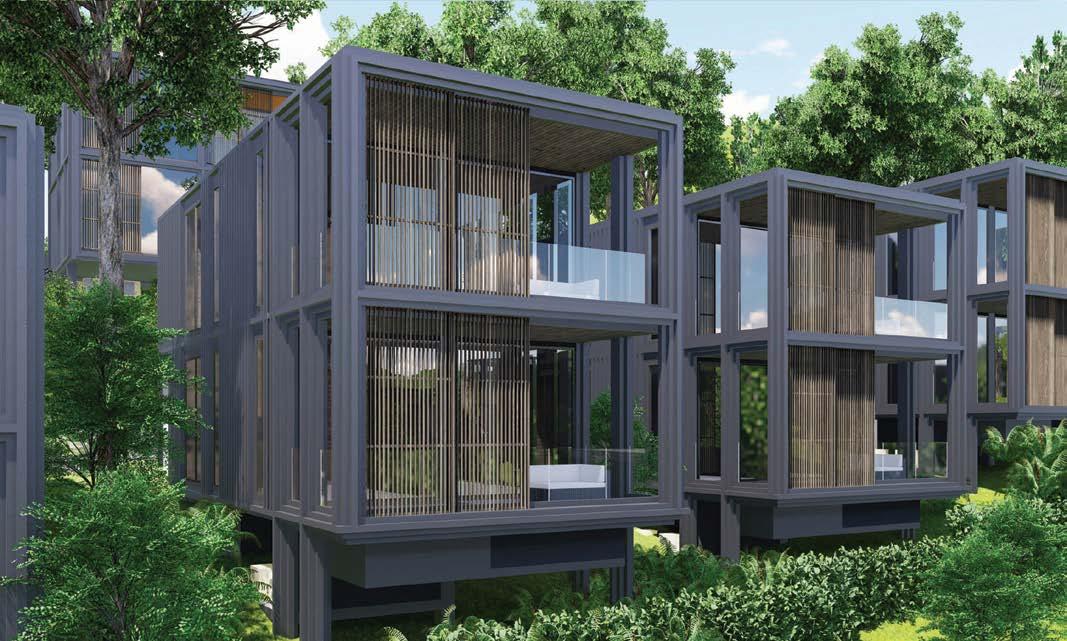
98 99
Novotel Phnom Penh, Cambodia

“Since the hotel is in a vibrant neighbourhood, we wanted to engage the street,” says O’Dell. “We were able to extend the lobby and the dining area out to the street with terraces. I like to think you’re not checking into a hotel, you’re checking into a restaurant and bar.” That melding of interior and exterior extends to the high-ceilinged lobby, which features a living tree that embodies Phnom Penh’s growing eco-awareness. Graphics and original wall art by local artists give each of the rooms a distinctive flair. “We tapped into the local culture. What’s interesting about the design is it’s a very loose fit. It’s very comfortable and it is localised by the artworks and the materials.”
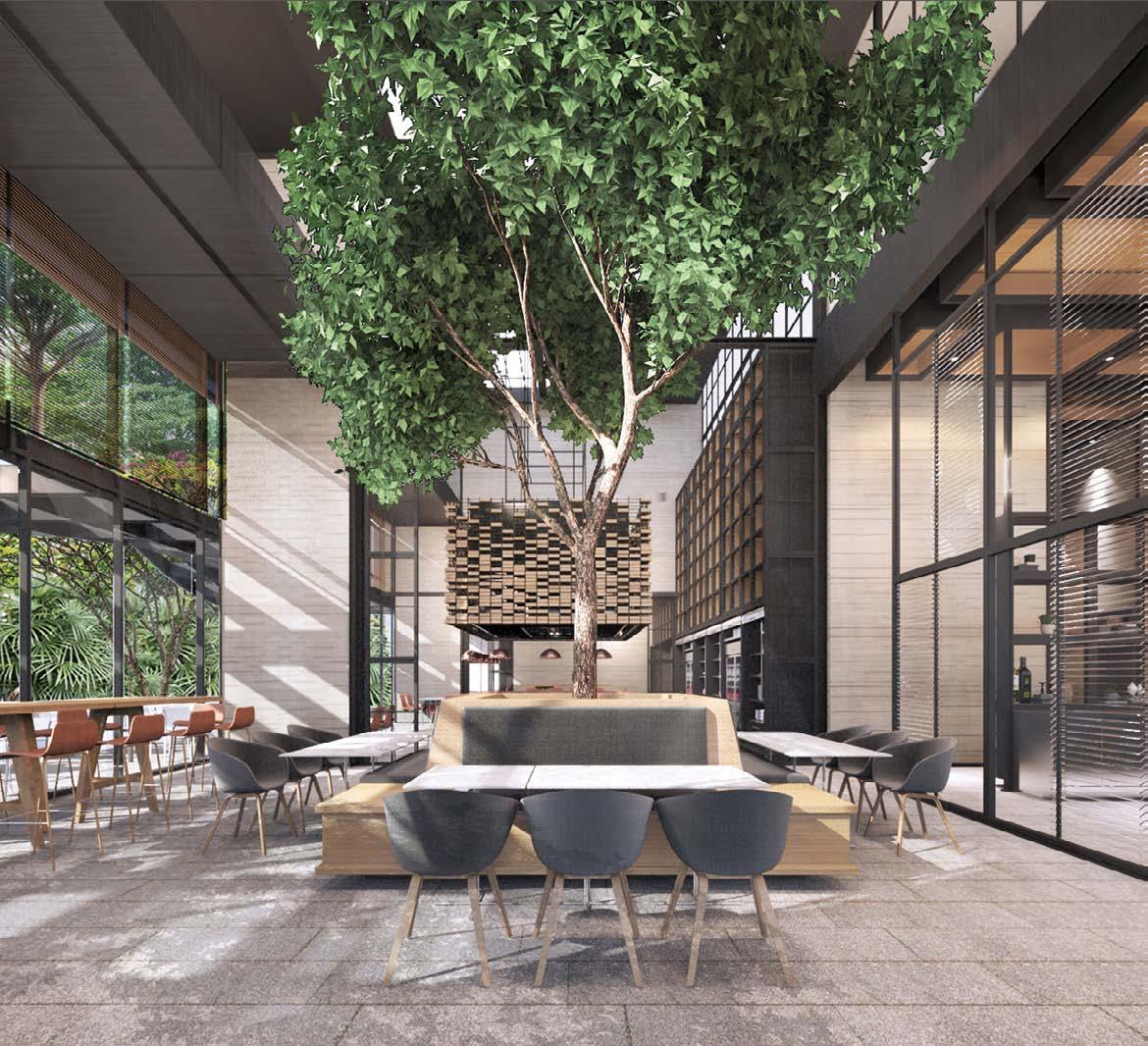
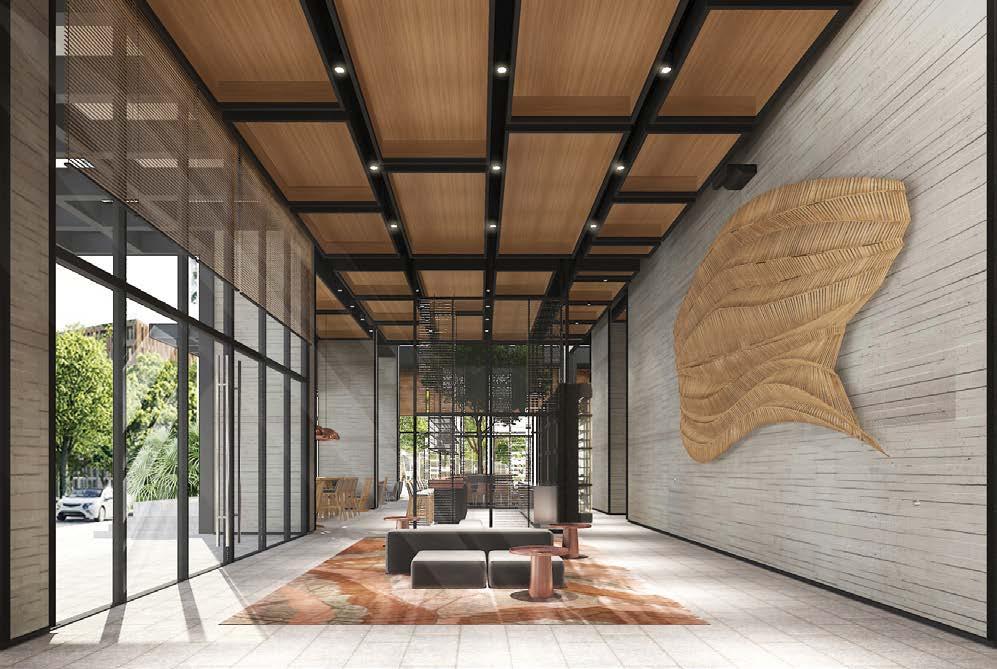
100 101
Poetry in motion
BY JONATHAN EVANS
As Vietnam begins to focus on post-pandemic growth, Phu Yen—a relatively little-known coastal enclave with glorious natural attributes — is set for the spotlight
Picturesque Phu Yen province on Vietnam’s south-eastern coast—a place of lagoons, mountains and beaches— is blessed with the kind of geography that lends itself to poetry. Its natural beauty was immortalised in the hit 2015 movie Yellow Flowers on the Green Grass. When you consider the scenic backdrop, which contains the country’s easternmost point, it’s hardly surprising that this former agricultural region is becoming a desirable destination for development both in housing and industry. Infrastructure is on a solid footing; the enchanting 10km coastline of emerging provincial capital Tuy Hoa, with its coconut palms and multi-lane boulevards, is perfectly poised for tourism. Oil-refining projects, meanwhile, should considerably bolster the economy in the coming years. High-end developers are waking up to Phu Yen’s potential. And with enticing leisure options bolstering the area’s appeal, the scene is set for this undiscovered gem to take centre stage. 1 2 3 4 5 6
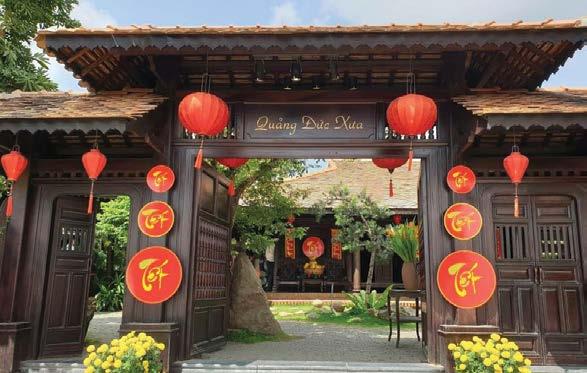
Alila Bai Om Hideaway Resort
A balmy holiday town in the north of Phu Yen, Song Cau has many beachfront properties. Established luxe contenders in the area include boltholes operated by Anantara and Avani. The 50-hectare, 100-room Alila Bai Om Hideaway Resort, opened in October 2019, sits squarely on the beach’s unspoiled natural landscape and offers gorgeous views across the foliage-strewn promontory and the South China Sea while the area’s many bays and islets are ripe for exploration. Winner of both the Best Resort Development and Best Resort Architectural Design titles at the 2020 PropertyGuru Vietnam Property Awards, it’s another triumph for Kien A Corporation, whose real estate arm principally focuses on future-forward apartment towers in Ho Chi Minh City and hotel properties such as Le Méridien Cam Ranh Bay Resort & Spa.
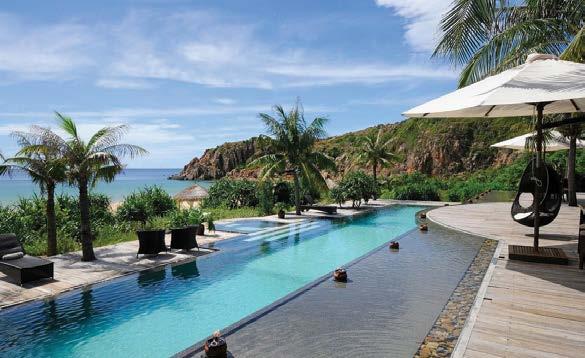
TNR Grand Palace Phu Yen
This mixed-use mega-complex in central Tuy Hoa, combining 64 shophouse units, a five-floor mall and a five-star, 35-floor hotel, is harmoniously designed to form a hub for business, leisure and retail on the town’s main artery—all within proximity to the airport and the pristine beaches on the coast. The ostentatiously named 12,000sqm project utilises natural finishing materials in an attempt to convey long-standing cultural traditions alongside luxurious contemporary architecture. Deploying smart technology as well as sustainable credentials, TNR Grand Palace is set to become a prestigious address within the fast-emerging province, with recognition coming in the form of the Best Mixed-Use Architectural Design award at the 2020 Vietnam Property Awards.

Mang Lang Church
Bearing a striking resemblance to Hanoi’s St Joseph’s Cathedral, Mang Lang is an imposing Roman Catholic church situated 35km from Tuy Hoa. The gothic-style church was built in 1892 by French missionary Father Joseph Lacassagne. Modern-day Song Cau (then called Ke Cham) was the native village of Andrew of Phu Yen, the “Protomartyr of Vietnam”, an assistant to Jesuit missionaries, who was beheaded in 1644 after refusing to abandon his faith. It became an important shrine when Andrew was declared Patron of the Youth and was later beatified by Pope John Paul II in 2000. It was also here that well-travelled scholar Alexandre de Rhodes wrote his Cathechismus in Octo Dies Divisus in Latin and Vietnamese, which was printed in 1651.
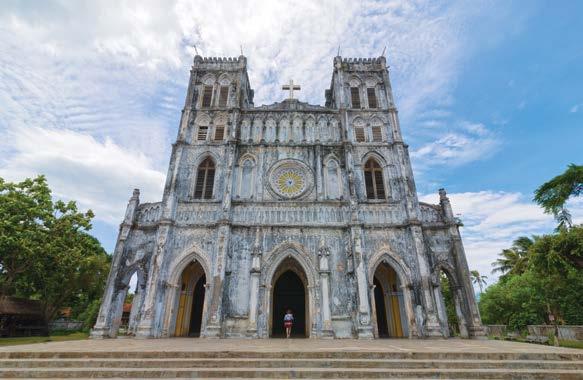
Bob’s Café American

This well-established, unpretentious comfort-food joint run by Pennsylvania native Bob Johnston and his Vietnamese wife Phuong Diep Minh wins regular plaudits for its service and solid culinary offerings including inexpensive pizza, burgers and chicken wings. A sure sign of its reliability is that it’s regularly packed with predominantly local customers, rather than tourists or expatriates—making it something of a curio in a city which otherwise betrays little in the way of western influence. But the real clincher is its location on the quiet backstreet of Nguyen Dinh Chieu, directly beside a leafy park and just two blocks from captivating views of the South China Sea, with the mountains as the backdrop
Noon Concept

Describing itself as “a local indie bar in the heart of [the] city”, Noon Concept is a trendy outlier in a developing conurbation more accustomed to unprepossessing cafés. And with Tuy Hoa revelling in its status as an up-and-coming city, this could be the shape of things to come. The immaculate space focuses customers’ attention on the artful wooden furnishing and minimal décor—an attractive proposition for any passing hipster, with its Instagram-friendly surfaces—but this isn’t just a café. Adjoining the dining area is an in-house store selling a range of branded merchandise, such as recycled bags, toiletries and a travel box, and numerous items to take away from the menu including individually packaged biscuits and cakes. Just for good measure, there’s a large tree growing through the middle of the shopfloor.
Quang Duc Xua
In Phu Yen’s northern Tuy An district, along the well-trodden tourist trail to Mang Lang Church, lies this beautifully carved wooden bungalow which served as the governor’s residence in the early 20th century, though the building dates back to the mid-19th century. Many original fittings remain in its lovingly recreated modern-day incarnation, such as antediluvian rotary telephones and Singer sewing machines. The part-museum, part-shop now holds pottery inspired by the medieval era when artisans created artefacts based on a combination of locally sourced An Dinh clay, O Loan blood clams and Ky Lo firewood. But it’s also a repository for tantalising items created from agarwood, contemporary ceramics and colourful fabrics—all of which make high-quality souvenirs from a trip to this unheralded coastline—while Quang Duc Xua and its café lie enticingly amid landscaped gardens with lily ponds.
102 103
INDUSTRIAL REVOLUTION
Vietnam enters 2021 in rude health due to its impressive response to the pandemic and a booming economy fuelled by FDI. With demand for housing continuing to grow—especially near manufacturing hubs—the outlook seems rosy for investors and developers alike
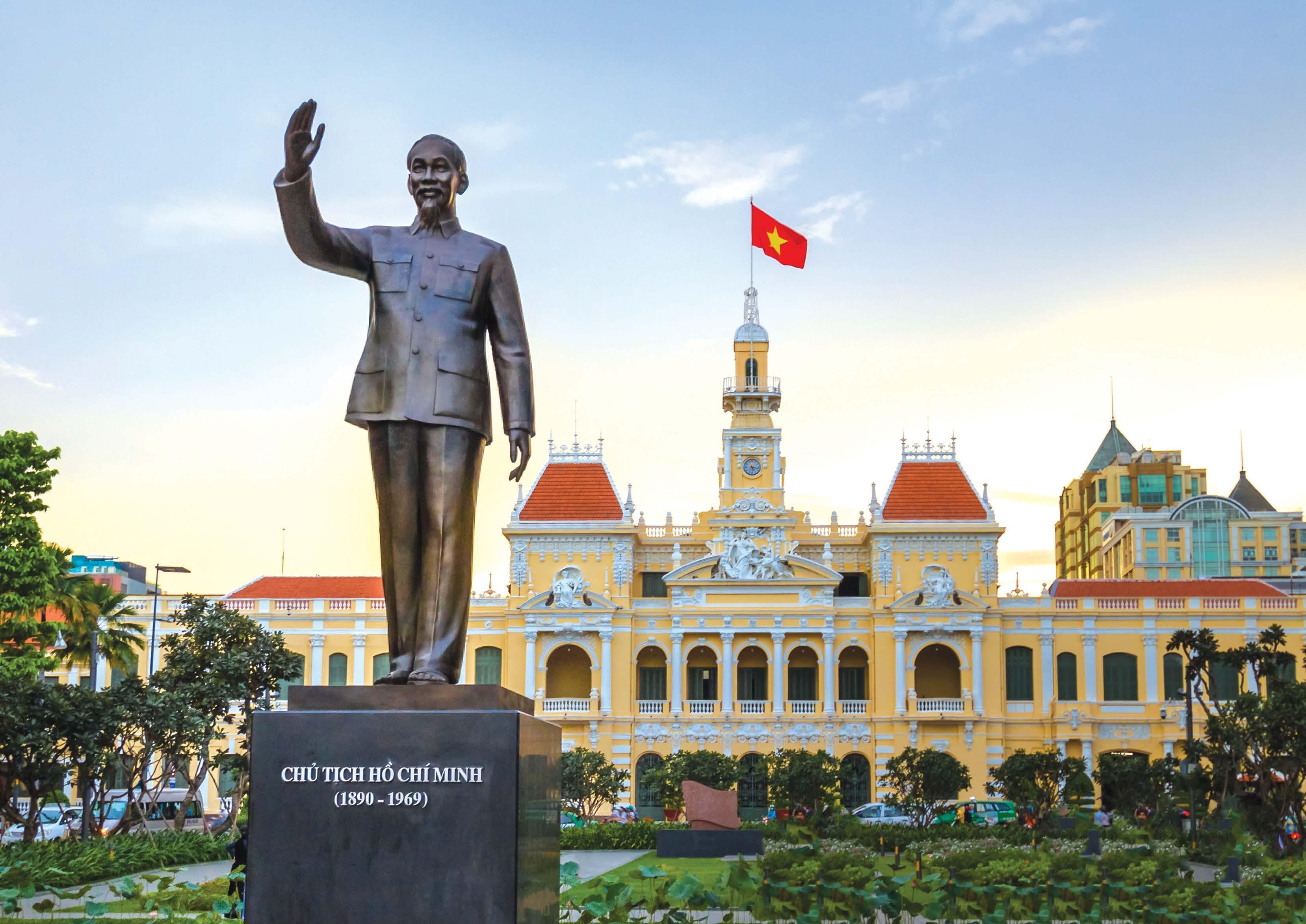 BY AL GERARD DE LA CRUZ
BY AL GERARD DE LA CRUZ
Vietnam has had an impressive year—the pandemic be damned.
The nation’s GDP last year grew 2.8%: one of just a few economies to elude a recession in a virus-plagued world. A beneficiary of the trade war between the US and China, Vietnam has grown its trade surplus so much as to invite accusations of currency manipulation from the former country.
It has taken the pandemic to the bank: luring manufacturers hoping to diversify their supply lines beyond China, and even manufacturing personal protective equipment (PPE) en masse. Industrial parks have mushroomed across the country. So have residential complexes housing their labourers.
As a manufacturing hub, Vietnam is now the most competitive in the world after China, reports Cushman & Wakefield. Pound for pound, Vietnam bests its neighbours in terms of labour costs (25% to 50% lower than China, Indonesia, Malaysia, Philippines, and Thailand) and corporate tax income rates (at 20%, it outstrips the ASEAN average of 21.7%). A signatory to more than a dozen free trade agreements, the country has become the destination du jour for industrialists.
“Vietnam has become an attractive investment destination after the US-China trade war and the pandemic,” says Paul Tonkes, director for logistics and industrial services at Cushman & Wakefield Vietnam.
Last year bookended a decade of success for Vietnam, which only ascended to the status of a middle-income nation in 2010. Industrial leviathans Logos Property and Global Logistic Properties (GLP) last year inked $350m and $1.5bn joint ventures with local developers, securing vast land banks in Bac Ninh, Bac Giang, Quang Ninh and Long An. Today Vietnam has 280 industrial parks in operation, spanning more than 60 cities and provinces and 82,800 hectares of land, with 89 more under construction.
The GDP per capita in industrial hotspots Ho Chi Minh City (HCMC), Hanoi, Long An, Binh Duong, Dong Nai and Hai Phong has leapt from 6% to 14% per annum in the last five years, heightening housing demand from occupiers and investors alike. Large-scale townships by major developers such as Aqua City, Dong Nai Waterfront City, and Vinhomes Imperia have begun sprouting near industrial clusters.
“Those cities are attracting a large number of expatriates in addition to a large local workforce, which leads to high demand for accommodation in the region,” adds Tonkes. “Vietnam’s success lies partly in its potential for residential development associated with industrial zones.”
Granted, the pandemic suspended inflows of expatriates into
Cities are attracting a large number of expatriates in addition to a large local workforce, which leads to high demand for accommodation in the region. Vietnam’s success lies partly in its potential for residential development associated with industrial zones
NO BARRIERS
Free trade agreements (FTAs) could mitigate against retaliation risk from the US, Vietnam’s largest exporting market, which late last year accused the country of intervening in foreign exchange markets to prop up its exports. Vietnam’s trade surplus with the US—which hit a high of $46.4bn in 2019—has alarmed stateside officials. The use of Vietnamese ports as an intermediate transportation point for Chinese-made goods, flouting US tariffs, has not escaped scrutiny from officials, too.
With the twilight of the Donald Trump presidency and global manufacturers reducing dependence on a single market, the Vietnamese government has a lot riding on staying competitive as a manufacturing hub.
“Vietnam’s manufacturing industry and industrial real estate market are vulnerable to trade tensions as long as trade with developed countries remain a key growth driver,” comments Hang Dang, managing director of CBRE Vietnam.
To compete with China and guard against retaliation, expanding relationships with trading partners around the world is key.
“Vietnam should continue to secure free trade agreements and implement attractive investment incentives that lure foreign investors,” says Paul Tonkes, director for logistics and industrial services at Cushman & Wakefield Vietnam. “Improvement in the legal framework and labour quality is also needed to secure the country’s competitiveness.”
LIKE OTHER CITIES AROUND VIETNAM, HANOI’S SKYLINE IS ALTERING DRAMATICALLY AS VIETNAM’S ECONOMY CONTINUES TO PICK UP MOMENTUM
Vietnam last year. Residential sales dwindled accordingly by 50% to 60% in Hanoi and HCMC, in that order, while rents dipped by 40%, according to Cushman & Wakefield, but pricing growth was defiant. Residential prices were up 25% year-on-year in HCMC and up 4% in Hanoi.
Condominiums sell for $1,325 per square metre and $1,966 per sqm on average in Hanoi and HCMC, according to CBRE. From 2017 through the third quarter of 2020, condominium prices in HCMC and Hanoi grew by 10% and 2% per annum.
“The selling price in Vietnam is still attractive compared to markets such as Bangkok and Singapore, which presents potential capital gain once the market matures,” says Hang Dang, managing director of CBRE Vietnam.
Mid-end and affordable condominiums accounted for approximately 87% of new launches in Hanoi in the first nine months of 2020. New launches in these segments sustained a sold rate of up to 42%, close to pre-pandemic levels. In HCMC, newly launched mid-end condos in the city posted a sold rate of 85%, well above 73% and 54% for high-end

106 107
and luxury condos. Mid-end condos also recorded an annual pricing growth of 6%, the highest among segments.
“This implies the market adjustments are oriented towards end users,” adds Hang. Nearly 98% of Vietnamese households still reside in landed houses though, which come in short supply in the land-starved core districts of HCMC and Hanoi. Landed projects tend to proliferate in adjacent areas and provinces plied by infrastructure developments.
Vietnam lavishes 5.7% of its GDP on infrastructure, which is one of the highest spends in Asia. Mass rapid transit lines and ring road systems, in various stages of planning and construction, are poised
to have the “strongest impact” on the residential market, notes Alex Crane, managing director for Cushman & Wakefield Vietnam. The most anticipated of them all, Metro Line No. 1 in HCMC, will connect the CBD to the city’s eastern districts.
“Infrastructure development is one of the major drivers of residential development,” according to Crane. “Fastimproving city infrastructure has resulted in decentralisation, shifting residential projects to the outskirts and suburban areas as well as to accessible second-tier cities and provinces.”
Although industrial development is concentrated in tier-one cities and provinces—Hanoi, Bac Ninh, Hung Yen, Hai Duong and Hai Phong in the north and
HCMC, Dong Nai, Binh Duong and Long An in the south—developers are casting their nets further afield, to tier-two locations where land costs are lower. Residential supply in Vinh Phuc, Thai Nguyen, Bac Giang, Quang Ninh and Ha Nam in the north and Tay Ninh and Ba Ria-Vung Tau in the south has grown by 25% to 40% per annum over the last five years, compared to just 15% to 20% per annum in Hanoi and HCMC.
As of October, industrial parks attracted 10,055 FDI projects with a registered capital of $198bn. The communist nation has steadily cosied towards open borders and market integration: signing the UKVietnam Free Trade Agreement (UKVFTA), EU-Vietnam Free Trade Agreement (EVFTA), and Regional Comprehensive Economic Partnership (RCEP) over the last year alone.
TALKING TECH
From clothing and textiles, Vietnam has made a steady switch to the manufacture of tech and other higher-value goods in recent years. Many manufacturers quickly jumped to the surging demand for personal protective equipment (PPE) in the advent of the pandemic.
In a show of confidence in the market, Apple supplier Pegatron has announced it would plough $1bn into Deep C Industrial Park in Hai Phong.
Tech itself could be the key to making Vietnam an even more competitive reshoring alternative to China. Efforts are now being made to shift Vietnam’s manufacturing base towards Industry 4.0 by way of automation, robotics, and 3D printing.
“Low costs cannot be the only strategy for the long-term sustainability of Vietnam’s manufacturing sector,” says Paul Tonkes, director for logistics and industrial services at Cushman & Wakefield Vietnam.

Foreign investors should invest in developing the local supply chain rather than “passively waiting to reap the benefits,” he adds. The new R&D centres of Samsung in Hanoi and LG in Danang exemplify this point.
As pioneered within e-commerce and during the pandemic, contact-less tech such as drone delivery, solar-powered autonomous barging, and IoT between factory and warehouse stand to reduce Vietnam’s dependence on costly human capital. Investments in agri-technology, agrilogistics and other efficient management systems can also add value to the chain.
“Vietnam’s leap from 2.0 to 4.0 is looking brighter in the coming years,” adds Tonkes.
108 109
CHINA’S LOSS IN ITS ONGOING TRADE WAR WITH THE US HAS BEEN VIETNAM’S GAIN, WITH THE COUNTRY LURING MANUFACTURERS HOPING TO DIVERSIFY THEIR SUPPLY LINES
“Reducing trade barriers with Vietnam will help to speed up the mitigation of supply chains,” says Tonkes.
The Vietnamese economy is poised to grow by 6.8% in 2021, the World Bank projects. At this rate, it could blaze past Malaysia and Singapore as the fourth-largest economy in Southeast Asia. Vietnam’s residential market alone is earmarked for a “strong recovery” in 2021, predicts Hang. Developers have exhibited an eagerness to launch while products with reasonable prices have gained favour with property seekers. This year, CBRE projects 17,500 units in new HCMC launches, up 14% year-on-year, and 25,200 units in Hanoi, up 66%.
With affordable products launched to meet real demand, speculative buying is bound to decrease, according to Cushman & Wakefield. Residential prices may plateau in the short term, but drastic declines are not in the offing.
Industrial park expansion and new investment approvals will generate more demand in the next two years, with class-A logistics supply expected to start scaling by 2022, the consultancy further predicts. A growing tendency by occupiers to become “asset-light” will bode well for the rental of ready-built factories.
“The country has a stable geopolitical situation, managed the Covid-19 crisis well, and wasn’t forced to halt production at any point,” concludes Tonkes. “Vietnam needs to remain attractive by maintaining stable political and macroeconomic conditions and competitive labour costs, and continually improving infrastructure.”
CLEARING THE HURDLES
Incentives for foreign investors, improvements in infrastructure and licencing processes, and legal frameworks in real estate ownerships are expected to be scrutinised in the run-up to the national election in May.
“We can expect a string of new laws to be ratified that will have an impact on the real estate market, whether directly or indirectly,” says Hang Dang, managing director of CBRE Vietnam.
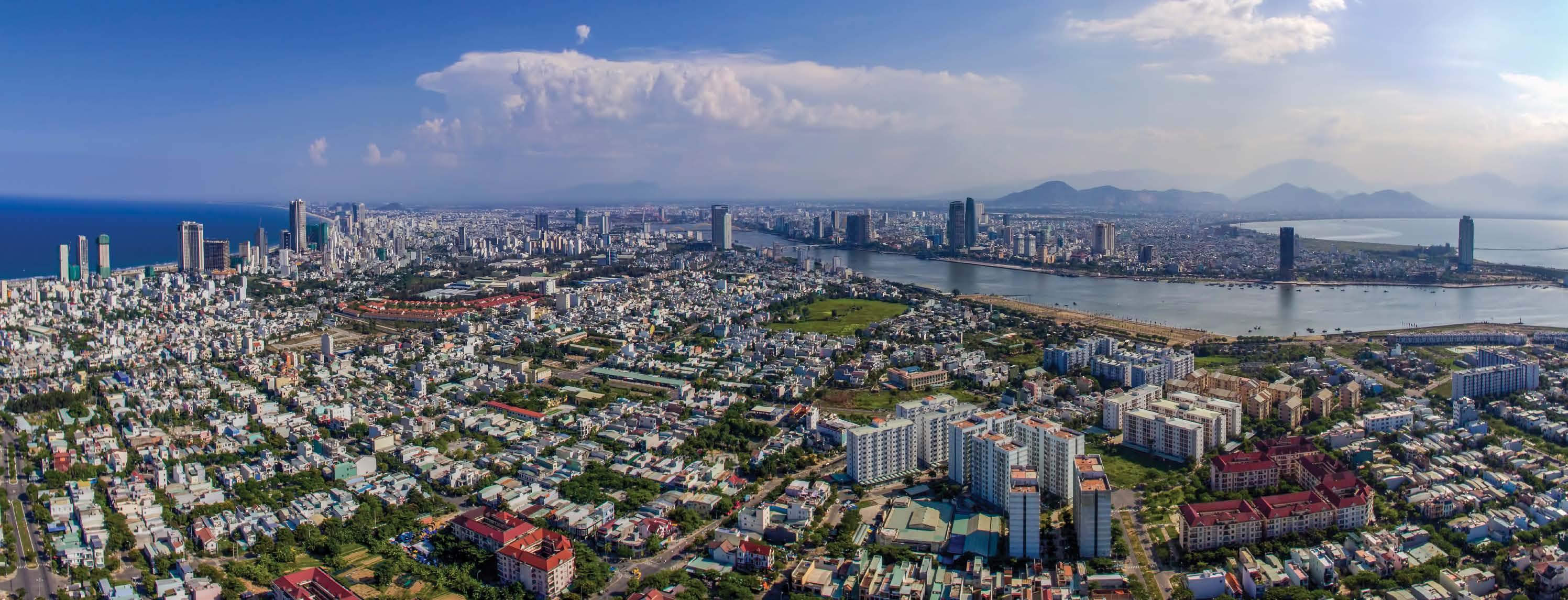
Although some will “remove bottlenecks”, they could also add to development costs, she warns.
While the government has been proactive in improving infrastructure, it will have to accelerate the reduction of logistics and transportation costs for Vietnam to remain
competitive, suggests Paul Tonkes, director for logistics and industrial services at Cushman & Wakefield Vietnam. The government can also do better on widening developers and asset owners’ access to credit, identified by the World Bank in 2019 as the most critical element to improving Vietnam’s economic growth.
Also, the government is enjoined to make land transfer pricing more transparent; it should halt reviews of project prices paid by developers. Instead, the government can use independent evaluators to establish the values of developers’ and investors’ properties, which will then feed into better Land Use Right Certificate (LURC) pricing.
“Those with the most to gain from the election are probably the residential and township developers in the metropolitan area,” says Tonkes.
110 111
MAJOR CITIES SUCH AS DANANG ARE ATTRACTING DEVELOPERS AND INVESTORS ALIKE DUE TO THEIR GROWING RANGE OF LIFESTYLE AND BUSINESS PERKS
BEAT THE CLOCK
Indonesia President Joko Widodo was counting on his wideranging Omnibus Law to kickstart his nation’s struggling real estate sector. With the pandemic causing chaos, however, the expected lift has yet to arrive
 BY GEORGE STYLLIS
BY GEORGE STYLLIS
112 113
As 2019 ended, many Indonesia real estate watchers predicted a revival for the industry. The rollout of government subsidies and tax breaks for buyers would— they mooted—help the property sector shake off its long-term malaise.
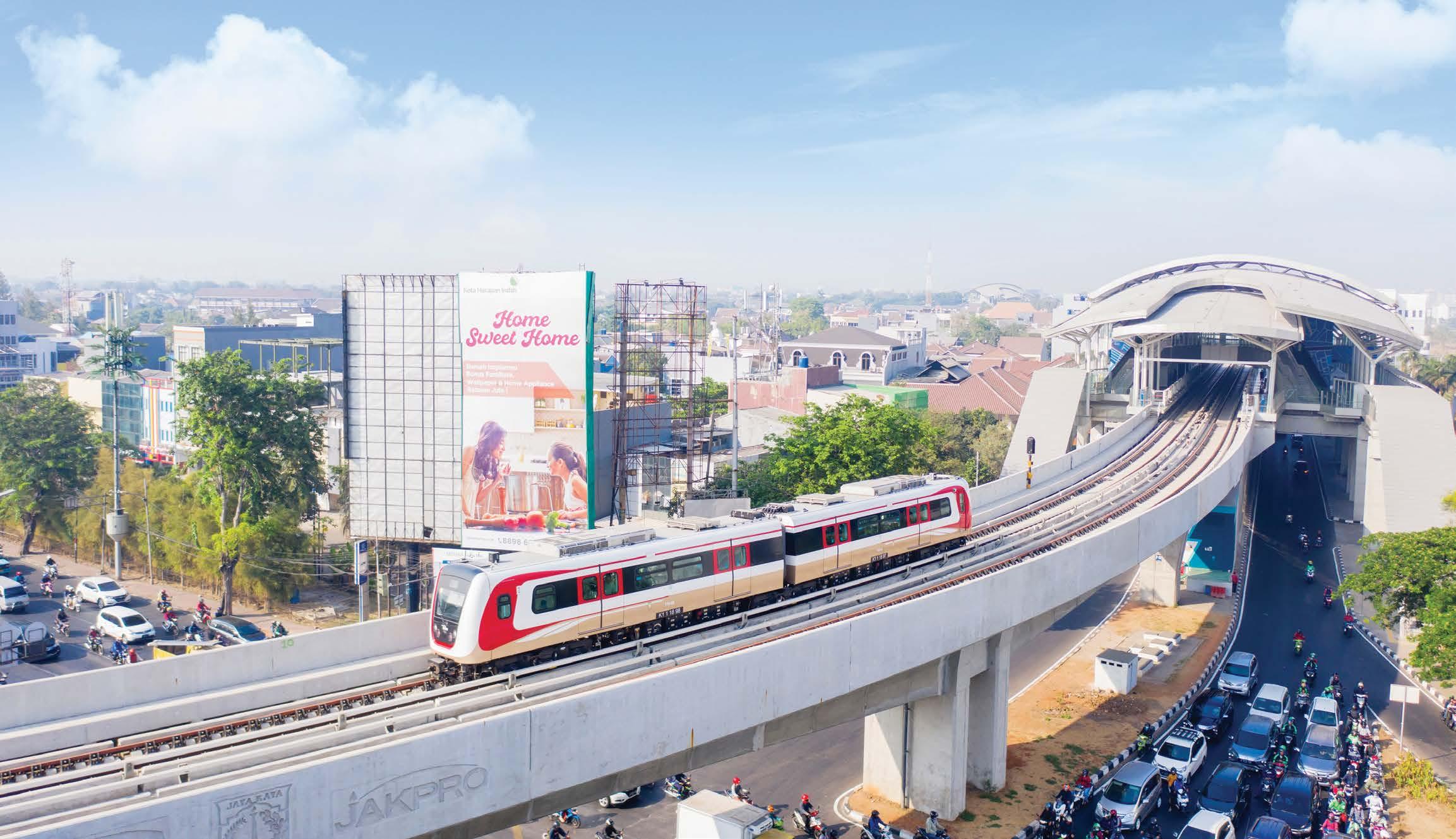
But with the arrival of the pandemic dashing those hopes and plunging the country into its worst recession in 22 years, many are wondering whether Joko Widodo has time to turn things around before his second term ends.
President Jokowi, as he is widely known, swept to victory once again in 2019 on the back of pledges to turn Indonesia into an economic powerhouse and revive a lacklustre property sector. At the heart of his vision for the real estate industry is his wide-ranging Omnibus Law, which (along with a slew of other pledges) aims to cut red tape around property transactions, simplify the buying of land and ease restrictions on foreign investment
Many see it as a gamechanger for the economy and real estate markets. It may well be. However, it has so far struggled to get out of the starting blocks—only passing into law in November due to the pandemic and prevarication over
some of the law’s more contentious issues around labour rights.
“The changes introduced by the Omnibus Law to Indonesia’s real estate regime are massive,” law firm Assegaf Hamzah & Partners said recently. “But our view is that nothing in the Omnibus Law can be deemed as settled until the government issues the implementing regulations.”
While the exact date of implementation is still unclear, many are hoping it will be sooner rather than later to help offset the economic damage caused by the pandemic.
BALI BLUES
Bali is not expected to see a recovery in property sales until travel and tourism can return in meaningful numbers. With 60% of GDP deriving from tourism, the island’s economy was one of the hardest hit by the pandemic in Indonesia. Though sales have improved slightly on the back of domestic interest, prices remain at between 30% and 50% below pre-pandemic asking prices. “This is the most severe correction I have seen in Bali in the 25 years I’ve been observing the market,” says Dominique Gallmann, CEO of travel consultancy Exotiq Property. “Will it recover? Of course, it will but I don’t anticipate it going back to prepandemic levels in the next few years.” According to Nikkei Asia, rental rates for luxury villas on the island had been slashed by as much as 85%, as of late November. While the sting is painful, some islandwatchers believe the pause may have longerterm benefits. “Bali might finally use this as an opportunity to move away from cheap mass tourism to a more sustainable cultural tourism, where the goal is not to achieve annual growth rates of more than 10% but to preserve what Bali has to offer the world,” adds Gallmann.
The country reported 765,350 cases and 22,734 deaths as of January 3. The infection rate slowed in the second half of the year and social restrictions were loosened. Nevertheless, the country went into its first recession in 22 years in November as growth fell 3.49% in the third quarter of the year, compared to the same period in 2019.
For the residential property market, the recession capped months of inactivity and years of low growth.
A survey by Bank Indonesia (BI) revealed that the combined sales of small, medium and large houses fell by 43.19% year-onyear in the first three months of the year due to the pandemic. In the same period, the disbursement growth of housing and apartment mortgages nearly halved by 4.34%.
114 115
WIDODO’S OMNIBUS LAW WILL BE A BOON FOR INFRASTRUCTURE DEVELOPMENT WITH A HUGE BUDGET ALLOCATED FOR UPGRADES ON ROAD AND RAIL SYSTEMS
For the condominium market, the pandemic accelerated a years-long trend of slow demand as investors took a waitand-see approach and developers refrained from launching any new projects in the third quarter. At the same time, the apartment market saw occupancy rates plummet as the mainly foreign visitors it relies upon remained in their home countries.
“Residential sales were badly hit after the large-scale social restrictions imposed from April to May 2020 and from then until now,” says Hasan Pamudji, a senior associate director at Knight Frank Indonesia.
In a recent report, real estate services firm JLL said: “Developers are more likely to wait until the wider economic situation improves rather than launching units in a period when sales are likely to be difficult.”
In common with many political leaders around the world, the pandemic has exposed Jokowi. Many observers see the government’s handling of the crisis as a major obstacle to achieving the objectives of his pet policies.
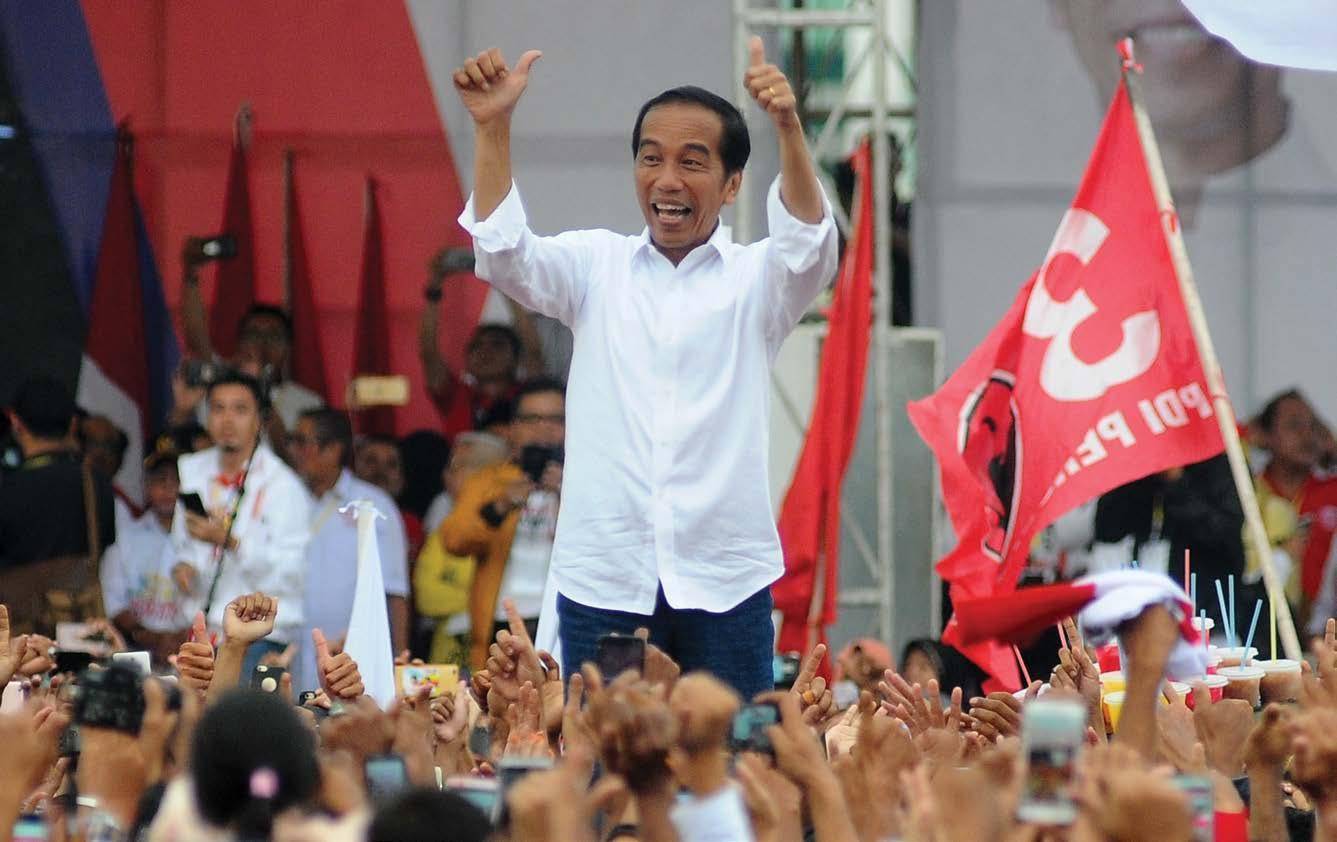
Writing in the East Asia Forum, Liam Gammon, an expert in Asia Pacific Affairs at the Australian National University, argues that the government’s handling of the pandemic was woeful and the high rates of infection expose a level of corruption that should undermine any law designed to create an open, welcoming place to do business. At the same
The ultimate aim (with vaccinations) is to decrease cases to a level where the government can resume activities to something near 100% of what they were before. That will take some time. Therefore, we expect that businesses and social activities won’t start to run normally until 2022
THE RUB OF THE GREEN
With the pandemic forcing many to think about a more sustainable lifestyle in harmony with nature, some believe eco-friendly living will shape Indonesia’s property market in the coming years. “We see a trend towards more eco-friendly developments and requests, such as water collection, solar panels, etc. I believe we will see a surge in boutique concepts and villas with privacy,” says Terje Nielson, director of Seven Stones Indonesia. “I think we will see a change towards more long-stay tourism: more people wanting to live and work from here and continued demand for eco-friendly or nature-based concepts with a high level of selfsustainability.” Also, secondary destinations in Indonesia are poised to capitalise on the trend for remote and flexible working that has been accelerated by the pandemic. “We see a lot of people now wanting to work from home, choosing to make Bali their future home, as well as other areas such as Flores and Lombok,” adds Nielson.
time the passing of the bill was marred by opacity and a lack of consultation, he adds.
“Whatever the merits of the law itself, the process by which it was passed speaks to growing dysfunction in key democratic institutions in Indonesia,” he writes. “With almost all political parties co-opted into the Jokowi government coalition after the 2019 election, the parliament rubber-stamped the bill after a rushed and opaque process that experts say ignored the parliament’s own standing orders.”
Compounding Jokowi’s woes is the desperate state of the real estate market in Indonesia. While the easing of restrictions saw some movement in sales, analysts don’t expect the market to return to pre-pandemic levels for several years unless a successful vaccine programme can be rolled out quickly.
“The government is putting tremendous effort on a vaccine programme that will be implemented in 2021,” says Hendra Hartono, CEO of realtor Leads Property Services Indonesia.
“They expect that around 170 million people in Indonesia will be vaccinated. The ultimate aim is to decrease cases to a level where the government can resume activities to something near 100% of what they were before. That will take some time. Therefore, we expect that businesses and social activities won’t start to run normally until 2022.”
116 117
WITH THE PANDEMIC FORCING HIM ONTO THE BACK FOOT, PRESIDENT JOKOWI HAS STRUGGLED TO BUILD MOMENTUM FOR REFORM IN HIS SECOND, AND FINAL, TERM
It’s a tall order, but if Jokowi can bridge the gap between the pandemic and the Omnibus Law, giving both buyers and developers confidence, some believe the residential market is in for a treat, particularly in the low and mid-tier segments. “Real demand remains intact in the long run as there are plenty of first-time homebuyers who need housing,” adds Pamudji. “Properties below IDR500 million ($35,517) will continue to perform to service this market.”
One key area where the government is expected to see success is infrastructure with the Omnibus Law helping to facilitate an ambitious program of improvements. The government has allocated a budget of IDR413.8 trillion for infrastructure upgrades, up by 47.2% from 2020, after adjustments to account for the pandemic and improving urban connectivity.
In Jabodetabek, the government has launched plans to connect DKI Jakarta and its satellite areas, Bogor, Depok, Tangerang, and Bekasi, to support the industry’s crossregion activities as well as improving the commuting between these areas.
“The president’s focus on infrastructure is expected to positively impact the property sector in 2021,” according to Marine Novita, country manager of property website Rumah. com.
Knight Frank’s Hasan also believes Jokowi’s second-term commitment to developing infrastructure, particularly new toll roads, LRT, MRT, and airports will speed up economic recovery by allowing for “new residential clusters”.
“In the short-term, we will potentially see many residential and industrial townships or clusters being built along and following new infrastructure developments,” he added.
But building the properties is one thing and getting people to buy them is another. Amid rising unemployment, declining consumer spending, and an economy in crisis—all of which could worsen as the global pandemic continues—time will tell whether the Omnibus Law is the silver bullet the country needs.
ROOMS FOR IMPROVEMENT
Indonesia is expected to see 127 new hotel launches in the coming years, with the vast majority to be located in Jakarta and Bali. Leading the wave of new launches will be local brand Harris Hotels with 20 properties around the country, followed by the Swiss-Belhotel International Hotels & Resorts with seven launches. Some of the notable new projects include the Langham Jakarta, a 257-unit hotel with 170 rooms, 30 suites and 57 Langham Residences across 19 floors, while in Bintang, British hospitality giant IHG will open its first two hotels on the island by late 2021—the dual-branded Holiday Inn and Hotel Indigo. Hilton Worldwide will bring one of its main luxury brands to Indonesia upon opening the Waldorf Astoria Jakarta in 2024. Hendra Hartono, CEO of realtor Leads Property Services Indonesia, believes that it will be important for companies to have a rigorous strategy so that “brands find ways of remaining relevant in an increasingly competitive market.” He added: “Hotel rebranding will be a key area widely explored as well as possible renovations, with the underlying theme of cost efficiency still at the forefront.”

118 119
INDONESIA’S PARADISE ISLANDS ARE SEEING DRASTICALLY REDUCED FOOTFALL AS THE GLOBAL PANDEMIC CONTINUES TO STYMIE INTERNATIONAL TRAVEL
URBAN OASES
Last year may be in the rear-view mirror but Covid-19-induced uncertainty will affect Asian real estate markets for the foreseeable future.
Retail and hospitality have been wounded due to lockdowns and travel restrictions while the mass residential sector is battling belt-tightening in most global property markets.
BY LIAM ARAN BARNES
Still, not all segments were equally impacted in the year the world stood still. And some, such as branded residences and resort-style properties, even managed to thrive amidst the turmoil.
Off the back of a buoyant decade in which the number of branded residences around the world increased by 170%, an additional 100 new projects launched in 2020, according to a recent report by Savills.

Asia, in particular, has witnessed a surge in development, especially of urban resort-style properties that often bear the branding of global hospitality titans.
In early 2020, hospitality and real estate consultancy firm C9 Hotelworks noted that the region now accounts for more than a third of global stock for hotel-branded residences.
“Despite the pandemic, we are seeing green shoots in urban-located resort-style residences,” says Bill Barnett, the company’s founder and managing director. “One thing that is impactful from the pandemic is the work-from-home (WFH) ethos, with branded properties increasingly attractive given their scale of facilities and onsite services that lend themselves to this opportunity going forward.”
Indeed, the current environment looks set to bring both operational and design challenges— but also plenty of opportunities—as the balance of private-to-shared space in residences is reconsidered.
120 121
With work-from-home (WFH) likely to be entrenched even after the pandemic, demand for resort-style residences with plentiful facilities and multi-functional space is growing in Asia
Flexibility is expected to be paramount, with space that can be configured as an additional bedroom, study or home gym becoming increasingly important to homeowners, in addition to a greater desire for private outdoor spaces.
Shared amenities are expected to remain in demand, although their usage may change, and the adoption of proptech is accelerating as a result. Apps, for instance, that allow residents to book facilities and cap occupancy levels could assist in the short term and allow interaction with the concierge, reducing the need for human contact.
“It does not take a rocket scientist to figure out that widespread travel bans and work-from-anywhere tendencies will likely have long-term, structural implications on many asset classes,” says Kristin Thorsteins, partner with Portman Investment, a strategic advisory firm for hospitality and early-stage tech startups. “Another direct consequence of the pandemic is that people realised the feasibility of working from home and sought a more pleasant environment to stay in during lockdowns.
“Given the reassurance that branded and resort-style residences provide in terms of quality and service, I believe the sector will see increased interest from potential buyers.”
Despite the economic turmoil, Morgan Stanley recently stated that high-net-worth individuals’ wealth is set to fall by only 4% before rebounding in 2021, which also bodes well for the upscale segment.
Affluent, globally mobile individuals are, after all, branded residences’ primary demand base. Knight Frank’s latest Global Branded Residences report goes as far as stating that there is “a direct correlation between wealth creation and demand for branded residences” and they see “a renewed interest in the branded concept given the rapid growth in global wealth witnessed since 2000.”
WITH WFH BOOMING DURING THE GLOBAL PANDEMIC, MANY DEVELOPERS ARE PUTTING MORE OF AN EMPHASIS ON ONSITE SERVICES AND FACILITIES

Walden Thonglor 8 by Habitat Group
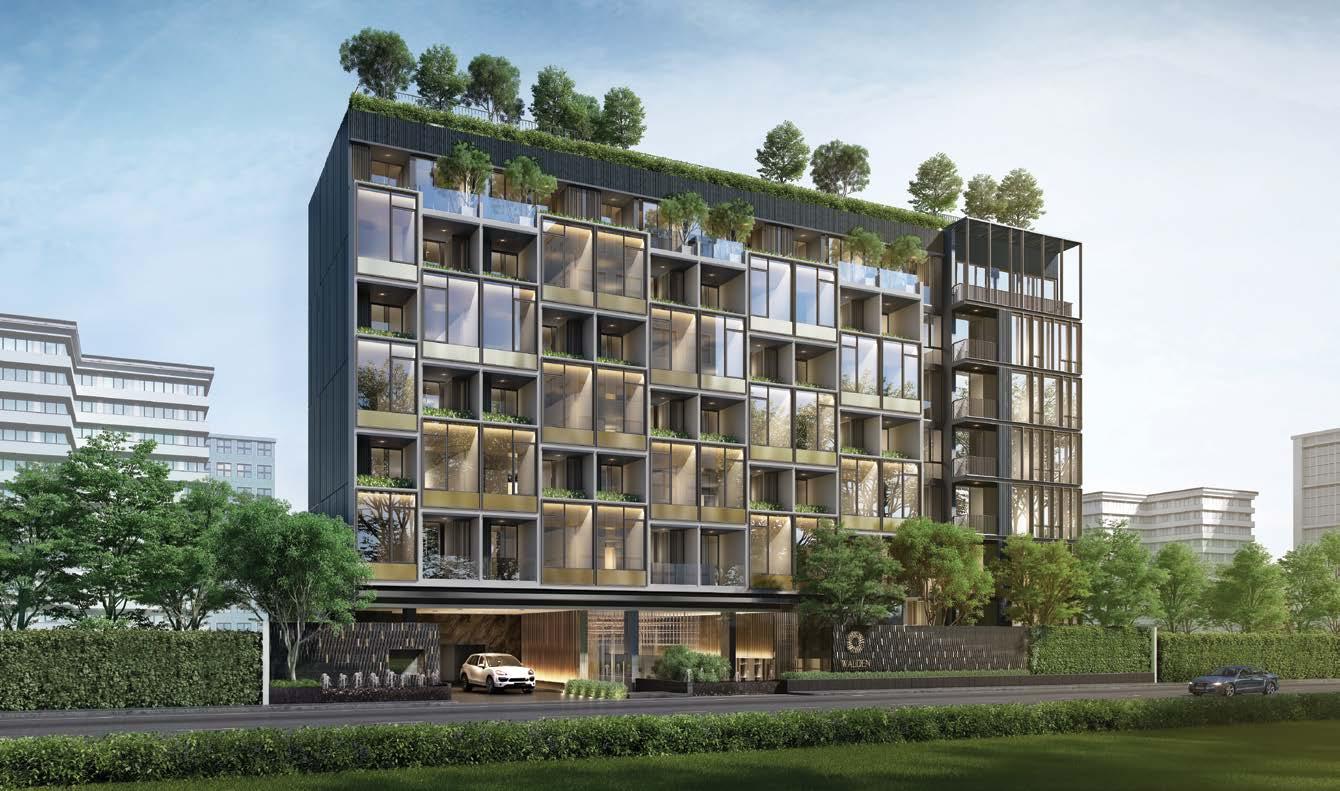
Where
Another pandemic-triggered trend emerging in the segment is the shift from resort-style residences being used largely as holiday homes to primary properties, especially in major cities.
Even before the outbreak, developers and operators were targeting affluent investors in prime urban neighbourhoods across major Asian capitals, including Bangkok, Manila, Kuala Lumpur and Singapore—and to a lesser extent, emerging market hubs like Ho Chi Minh City. The current pipeline of branded residences, in fact, is now evenly split between cities and resorts in the region, according to the Knight Frank report.
With demand for upscale urban resort residences expected to continue through 2021 as other segments gradually recover, we round up some of the year’s most innovative, eye-catching and award-winning resort-style properties from around the region.
Located along Bangkok’s most happening high street, Walden Thonglor 8 breaks from the neighbourhood’s bright lights, brick and mortar to provide homeowners with a minimalist oasis amidst the mix of upscale restaurants, bars, and boutique malls. Privacy is paramount here, although convenience remains king with some of the city’s top education institutes, healthcare facilities, and luxury retail outlets within walking distance.
Why buy
Beyond the exclusive address, this eight-storey low-rise by the reputable Habitat Group features 117 units ranging in size from 31-square-metre one-bedroom units to openplan apartments with skyline vistas. Amenities meanwhile include a state-of-the-art fitness centre, automatic parking, and multipurpose rooftop with numerous pools, gardens, and a party area. Recently named Best Low-Rise HighEnd Condo Development (Bangkok) at the PropertyGuru Thailand Property Awards, units at Walden Thonglor 8 start from THB8.9m ($297,360).
Wow factor
The glass facade and lavish interiors may be a far cry from Thoreau’s humble abode, but the bucolic exteriors, relative peacefulness and picturesque rooftop do offer a muchneeded antidote to Thong Lor’s soaring high-rises and round-the-clock lifestyle amenities.
Millennial dilemma
Ready to settle down, millennials are entering their peak home-buying years, which means a growing demand for residential property. Given the unprecedented disruption brought about by the pandemic, however, many in this lucrative demographic are altering their financial behaviour to prioritise savings and long-term stability. Developers are subsequently innovating their products to meet these revised expectations. As the pandemic unfolded throughout the region, many residential sales offices were temporarily closed and property viewing tours became almost impossible, presenting an opportunity for developers to embrace technology and shift focus online. These include virtual 360-degree tours, video viewings, online product knowledge, and digital advertising through social media and online events. Smart homes and integrated applications that make life easier, as well as energysaving tools such as solar panels and other sustainability concepts, are also being embraced in response to growing health and wellness concerns.
122 123
One thing that is impactful from the pandemic is the work-fromhome ethos, with branded properties increasingly attractive given their scale of facilities and onsite services that lend themselves to this opportunity going forward
dusitD2 Residences Cebu by Grand Land Inc.
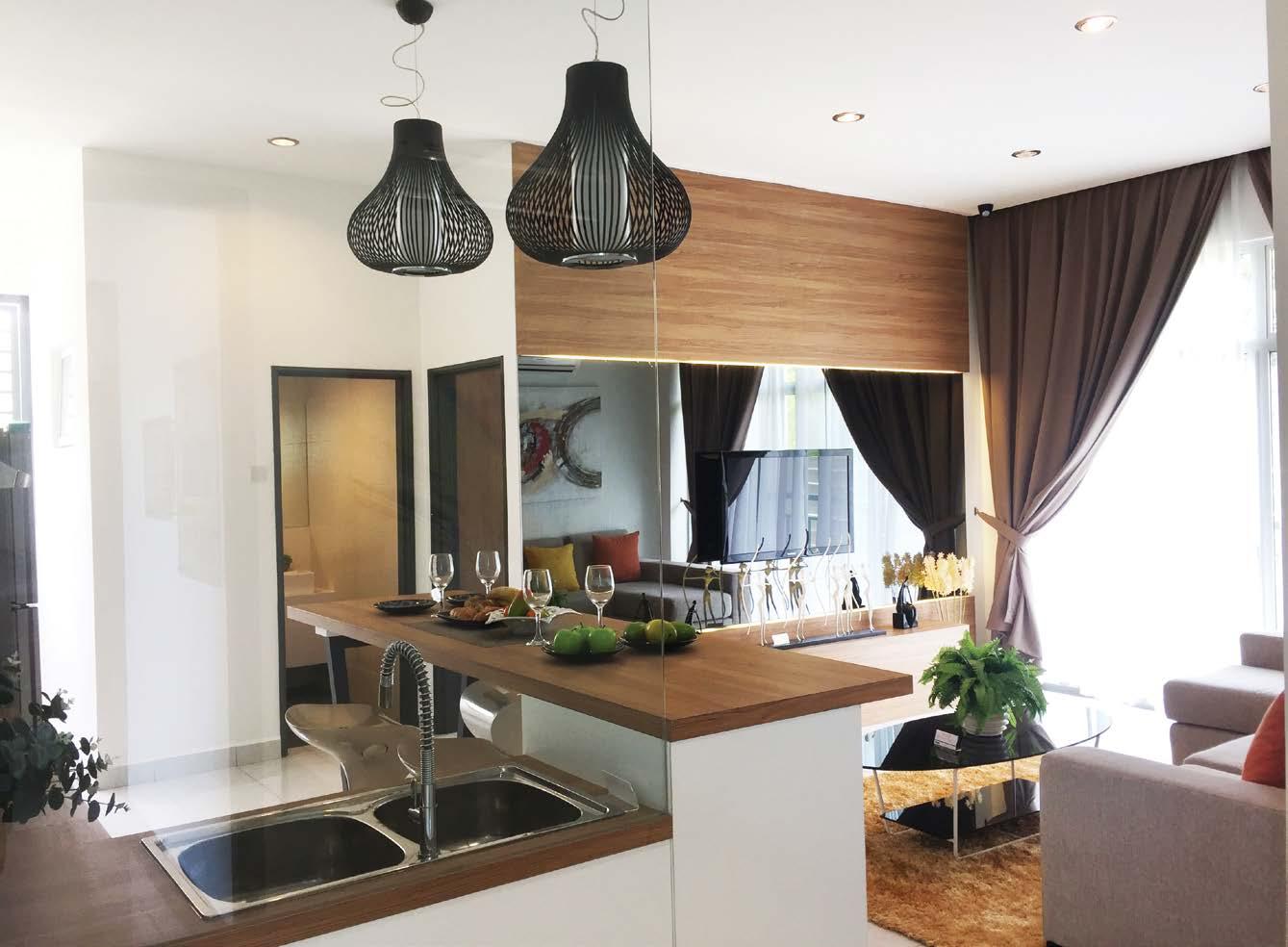
Where
In a first for the Thai-born but increasingly international Dusit Thani, the hospitality group recently introduced its boutique dusitD2 Residence brand to Cebu. The group’s third property in the Philippines, located within local development partner Grand Land’s multi-tower condominium Grand Residences Cebu, aims to bring bleeding-edge design, technology and five-star facilities to residents in the heart of the eponymous island’s coastal capital.

Why buy
Convenience, culture and charming coastlines are in abundance in this part of town. A par 5 from Cebu Golf & Country Club and within walking distance to the bustling CBD, the 160-unit property is accessed by a private lobby with facilities including an all-day dining restaurant, gym, pool and meeting rooms, as well as a roof deck lounge with ocean and urban vistas on the 35th floor. Accolades are already stacking up for the city’s first branded residence, the latest being a Best High End Condo Development (Metro Cebu) gong at the 2020 PropertyGuru Philippines Property Awards.
Wow factor
Dusit Thani prides itself on exporting Thailand’s legendary hospitality around the world, and this latest boutique addition in the Philippines succeeds in the sabai sabai department. Each of the seven-unit types is managed and maintained to five-star hotel standards, with 24/7 concierge service and rental programme, which is slated to generate up to 11% ROI per annum.
Amber Heights by UMLand
Where
The award-winning Amber Heights is the first high-rise residential project located within UMLand’s maiden township Bandar Seri Alam. Situated on the outskirts of Johor Bahru, the nature-inspired, 240-unit property boasts a best-of-both-worlds appeal with seamless access to both the state capital and nearby Singapore.
Why buy
Connectivity is the obvious allure at Amber Heights. Rubbing shoulders with one of the world’s leading metropolises — without the eye-watering cost of living — and Malaysia’s fastest-developing city make it an attractive proposition for families, professional couples and investors alike. Developed by one of Malaysia’s most reputable real estate firms, resort-style amenities and unit layouts cater to diverse tastes and price points. The intelligently designed clubhouse and abundance of green space, including parks, a plaza for get-togethers, and basketball court, are particular highlights at Amber Heights, which recently won the Best Condo/Apartment Development (Southern) trophy at the PropertyGuru Asia Property Awards (Malaysia).
Wow factor
As part of the sprawling, 3,762-acre Bandar Seri Alam township, Amber Heights residents benefit from the plethora of education institutes located in the ‘City of Knowledge’, as well as medical facilities, including the Regency Specialist Hospital, and the recently opened Gravity Green. Spanning 4.87 acres, the township’s impressive food haven is already home to a number of renowned F&B brands such as Starbucks, Der’Cabin Bistro and Bay Street 66.
124 125
The M @ Middle Road by Wing Tai Asia
Where
Dynamic District 7 is arguably one of Singapore’s most diverse neighbourhoods. Here, high-rises vie with old-world charm while backstreet boutiques complement contemporary retail malls and lifestyle amenities. Slated for completion in 2024, The M @ Middle Road promises to add refined accommodation to the equation. The mixed-use property, which features three 20-storey residential towers and 16,000 square foot of commercial space, sits in the district’s epicentre, only moments from the main attractions.
Why buy
Designed by one of the Lion State’s most established architectural firms, P+T Group, the 522-unit development has been conceived to maximise its natural surroundings, including neighbouring Kallang Riverside Park, and harness views of Singapore’s ever-evolving skyline. Some of the city’s most popular shopping destinations, in addition to diverse dining and nightlife spots, are also on the doorstep. Access to the upcoming Nicoll Highway will bring the rest of the island much closer while the nearby Bugis, Esplanade, and City Hall MRT stations connect residents with the CBD within minutes.
Wow factor
Many of the unit types, which range from 409 square foot studios to three-bedroom apartments, are designed to incorporate a home/work concept—a much sought-after commodity in the current climate—with flexible spaces and furnishings. A series of low-rise, township-style properties on the lower floors, meanwhile, are ideal for multigenerational living.
The Residences at St. Regis Jakarta by Rajawali Property Group

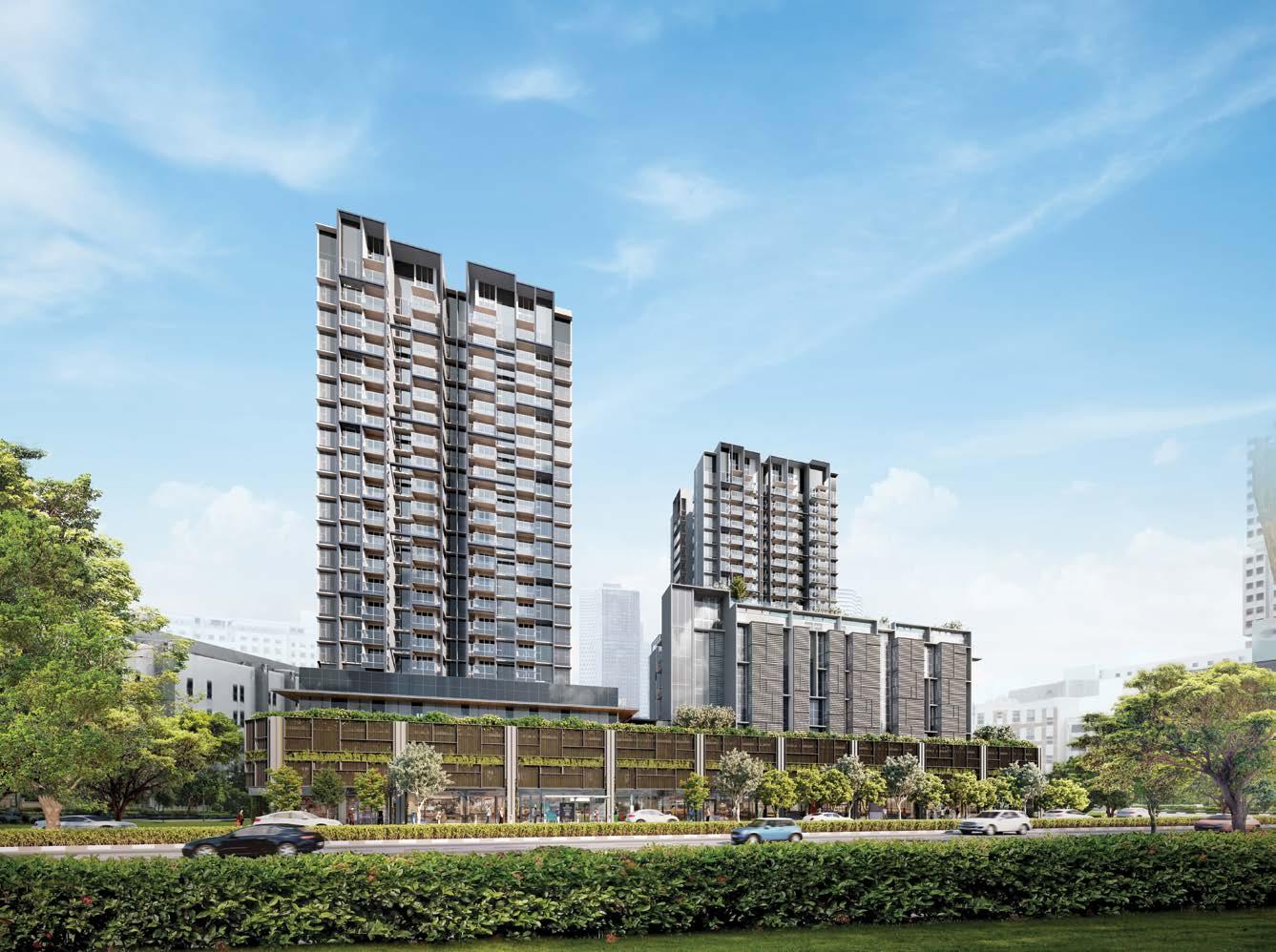
Where
A flurry of high-profile branded properties have put Jakarta on the investor radar in recent years, but few are as highly anticipated as The Residences at St. Regis. Starwood’s luxury hospitality brand makes its debut in habitual style with 164 fully serviced freehold units adjacent to The St. Regis Jakarta in the Indonesian capital’s prestigious Setiabudi district.
Why buy
The St. Regis is one of those few elite global hospitality brands that boasts a coterie of loyal followers. Entry to the club obviously comes at a cost (in this case, almost $2m for a three-bedroom property) but those with the resources are unlikely to be underwhelmed. Upon completion in mid-2021, the 62-storey tower will feature three apartment types: a three-bedroom Sky Residence occupying up to 373sqm, a 750sqm Sky Villa, and the premium four-bedroom Sky Palace.
Wow factor
Ownership inevitably comes with direct access to the hotel brand’s legendary amenities, which in this case include exclusive concierge service, a wine room, private garden pool, private dining and library lounge, and exclusive use of St Regis’s signature Butler Service, as well as the hotel’s fitness and fine dining facilities.
Rooms for improvement
One of the most significant development and design trends to emerge from the pandemic is the demand for greater space flexibility at home. Even with the recent release of vaccines and gradual transition to the ‘new normal’ in some countries, the impact the virus has had on workplaces is expected to be far-reaching. Big lessons have been learned from home during lockdown. Homeowners are now more aware than ever of the need for multifunctional spaces for living, working, exercising and schooling. Emphasis is already being placed by developers on factoring in spaces for remote working. Examples include eschewing fixed furnishings, such as beds, in favour of multipurpose items that can easily be stored, as well as the introduction of sliding doors or dividers to break up larger spaces and hide home offices or gyms. Indeed, home gym space is also being prioritised, with equipment such as exercise bikes, dumbbells and yoga mats now needing dedicated temporary space—along with smart storage options.
126 127
Out of office alert
Beijing’s chronic oversupply of office space has been exacerbated by the pandemic, but China’s ingrained work culture suggests that demand will eventually catch up
By Steve Finch
In 2009, a year after the onset of the global financial crisis and China hosting the Olympics, Beijing’s Planning Exhibition Hall proudly displayed scale models of what would be the Chinese capital’s future finance hub.
Named Lize financial district, this area of just over 8.09 square kilometres aimed to help Beijing challenge Shanghai’s status as the business capital of China. Architectural plans included rows of shiny skyscrapers, dedicated green space to tackle the city’s smog, and a new subway line, all with a target completion date ahead of the then futuristic-sounding year of 2020.
BEIJING’S FINANCIAL CORE IS AN ECONOMIC ENGINE ROOM THAT IS HELPING
Although largely on track, with enduring delays to some key projects, Lize has come to represent a long term office oversupply problem brewing in Beijing which reached crisis levels as Covid-19 struck China at the end of 2019.
By the third quarter of last year, Lize was showing signs of post-pandemic recovery as absorption rates increased, according to Savills data. But vacancy rates have remained at a staggering 55.8%, and as office towers in Lize have reduced rents, the district has begun to cannibalise office demand from Beijing’s other key business districts where rents have remained higher.
The central business district saw vacancy rates climb by more than 3% to nearly 17% in the third quarter, according to Savills, despite signs of a recovery in the wider real estate market in Beijing and across China.

“The citywide office market is under substantial pressure due to the abundant new supply and slower absorption, even as Covid-19 was effectively contained and market demand resumed to some extent,” says Vincent Li, associate director for Northern China at Savills.
For years, Beijing’s office market had been characterised by soaring rents which propelled China’s capital to rank as the third most expensive office market in the world behind only Hong Kong and New York. But by last summer, China’s capital had witnessed a fundamental shift from a market characterized by supply—and associated policy restrictions— to demand “becoming the primary market driver”, according to JLL.
This has been a trend long in the making. Office rental prices peaked in 2018, and since then oversupply has caused a steady fall in rents further exacerbated by the global pandemic which led to a decade high in vacancy rates and rent reductions last year, says Colliers director of research for Northern China, Ming Lu.
“The pandemic has seriously inhibited the release of office demand among enterprises, and the actual annual net absorption has set a record low,” Ming says.
Vacancy rates in office buildings across Beijing hit nearly 20 percent last year, and the real ratio measuring supply versus demand soared to 21 times following the pandemic, according to Colliers. “This shows that the imbalance
between supply and demand in the Beijing market is very serious under current market conditions,” adds Ming.
Amid seemingly endless television news reports suggesting Covid-19 may have irrevocably changed how we work, the key question is: will the office market ever recover to pre-pandemic levels?
Although the likes of Colliers and CBRE published new research into working from home for China and the wider Asia-Pacific region even before Covid-19, most international agencies predict a recovery in the office market in the medium term.
Culture will play a key role. Although the Chinese central government ordered office workers to stay at home for nearly four months at the start of 2020 in a relatively successful bid to contain the pandemic, there are no signs of a widespread fundamental shift in work culture in China’s capital, according to James MacDonald, head of Savills Research China.
“Beijing’s measures have generally been more prolonged and stricter than many other cities given the secondary outbreak in June and July,” he says. “The impact on business activity has therefore been more notable [in Beijing versus other Chinese cities] though I don’t feel the impact on how companies use office space over the long term will be any different.”
After Chairman Mao Zedong took over the ‘New China’ at the midway point of the previous century, Chinese lived and worked in danwei, or work units where the home and place of work were kept entirely separate, often in the same wider compound. After reforms of the economy in the 1980s, the geographical space between
128 129
Dispatch
TO POWER CHINA’S RISE, BUT THE SUPPLY OF OFFICE SPACE IS CURRENTLY OUTSTRIPPING DEMAND AS THE GLOBAL PANDEMIC BITES
Dispatch
WE CAN SAY HOME WORKING IS STILL A SUPPLEMENT TO OFFICE WORKING. THE TRADITIONAL NOTION OF OFFICE WORKING IS DEEPLY ROOTED IN THE HEARTS OF PEOPLE [IN CHINA], AND THERE WILL BE NO SIGNIFICANT SUBSTITUTION EFFECT IN THE SHORT TERM
the home and workplace became wider as many Chinese began the daily office commute commonly seen in the west.
“We can say home working is still a supplement to office working,” says Ming of Colliers. “The traditional notion of office working is deeply rooted in the hearts of people [in China], and there will be no significant substitution effect in the short term.”
Most analysts predict a complex picture for Beijing’s office market. Lize is expected to be the first district in Beijing to adopt 5G internet wholesale, making it yet more attractive for would-be tenants. Conversely, the provision of faster internet into the city’s apartments further establishes home working as a viable alternative to the office.
Then again, online education companies have boomed in recent years in China— particularly during the pandemic—and have become among the leading grouping of new tenants in many Chinese cities, including Beijing but also Chongqing and Xian further west, according to Savills.
As ever, government policy remains a key factor. In September, President Xi Jinping announced that the Chinese capital would
WFH HAS
BEEN A NOVEL DEPARTURE FOR MANY CHINESE PROFESSIONALS, BUT OFFICE CULTURE IS EXPECTED TO TAKE PRECEDENCE ONCE AGAIN IN THE FUTURE
become a new free trade zone focusing on the digital economy and services sector.
In 2019, the government announced that wealth management firms were set to spin off from the large state-owned banks, and these new entities have since quickly taken up new offices in the capital.

Deregulation of the financial sector “allowing greater participation in life insurance, futures, funds, and securities by foreign firms” has meant many are flooding into the market and taking up new offices, including a local joint venture with the world’s largest insurance firm Allianz.
Although 2021 will be “a very challenging year” for the office sector in Beijing, according to Ming of Colliers, many analysts are more optimistic for the end of the year and beyond. Grade-A office rents are expected to now trough in 2022 and only then recover, according to JLL.
“Despite the present downturn, investors are still keen on Beijing’s office market as it bodes well for the long-term,” said Yang Mi, head of research for Northern China at JLL. “Covid-19 has allowed unanticipated opportunities for market entry for investors and tenants picking up space at a softer rent.”
Clean-up time
India’s notoriously graft-prone real estate sector is growing more transparent thanks to government regulations and the introduction of REIT frameworks
By Liam Aran Barnes
Adecade is a long time in real estate.
In late 2011, the New Delhi-based Liberty Institute calculated that Indian land transactions generated up to $40bn of illegal money each year—then equal to 2% of GDP—and the country ranked a lowly 94 out of 176 nations in Transparency International’s Corruption Perception Index.

Yet less than 10 years on, the pall has been pulled off India’s shadowy real estate sector, suggesting a golden era of transparency for homeowners and institutional investors.
IN INDIA, THE REAL ESTATE INDUSTRY HAS BEEN CLOSELY ASSOCIATED WITH CORRUPTION, WITH PROJECTS REGULARLY RIFE WITH GRAFT
This newfound optimism was enhanced last year with the release of JLL’s latest Global Real Estate Transparency Index. Registering one of the largest improvements worldwide, India’s real estate industry ranked 34th, up from 142 in 2014, surpassing nations including the United Arab Emirates, Russia and Brazil. This is a marked improvement for a country in which real estate might as well have been a byword for corruption.
High-profile scandals and small-scale backhanders have long blighted the industry
130 131 Dispatch
Dispatch
to the extent that graft at every level was not only tolerated but anticipated.
“Once the developer gets the land, a feeding frenzy starts, often with court cases to stop the project,” says best-selling author and economist Monika Halan explaining how graft has worked in the past. “The builder then has to pay off the noisemakers or wait for the glacial judiciary until he runs out of money. The next round of feeding happens with those who hold the stamps of approval for the many clearances a project requires.
“The builder and politician, or families of politicians, gouge enough out of the project so that builders won’t make any money unless they price it a certain rate.”
Indeed, a slew of prominent cases in recent years has revealed just how deep the rot allegedly runs within India’s upper echelons. Such scandals tend to fall into two categories: default on large sums of money borrowed from banks and deviations or favouritism in awarding land or licences. In 2011 and again in 2013, Robert Vadra, the husband of Indian National Congress scion Priyanka Gandhi, became embroiled in accusations—which remain under investigation—of the latter, with claims he traded influence with thenCongress-ruled states for favourable loans and land deals from DLF, one of the country’s largest commercial real estate developers.
The recent scandal involving top officials at Punjab and Maharashtra Co-operative Bank and construction firm Housing Development and Infrastructure Ltd (HDIL) also exposed the shady relationship between India’s
finance and real estate sectors. In 2019, the bank’s former managing director Joy Thomas admitted to hoodwinking the auditors, bank’s board, and Reserve Bank of India for years by concealing the default on loans to the tune of INR6,500 crore ($885.3 million) taken by HDIL due to “fear of reputational loss”.
Industry experts, however, note that visibility within the sector is finally improving, thanks to a raft of recent government reforms.
“India has seen a steady improvement in the Global Transparency Index over the years,” says Ramesh Nair, CEO and country head of JLL India. “In fact, along with Indonesia, Philippines and Vietnam, we are among the handful of countries that have seen the highest improvement owing to positive governmental support and an enhanced ecosystem of transparency.”
Government support has come in the form of a series of sweeping regulations implemented by Narendra Modi’s administration in recent years. The Real Estate Regulation and Development Act (RERA), passed in 2016, has done much to advance transparency and rationalise the chaotic sector. The main agenda of the act is to protect the interest of the homebuyers by bringing in transparency and accountability between the developer and the end user via a standard, uniform regulatory approach across the nation.
“RERA has been a game-changer for the industry, particularly for the consumer,” explains Amit Khanna, managing director
of property consultancy Phoenix Advisers. “It has given a voice to the consumer on the previously one-sided and high-handed approach of the developers who, for the first time, have been made accountable.”
He adds that developers can, for instance, no longer take the funds raised from customers of one project to buy land for another, previously a common tactic. They can also be fined for failing to meet delivery timelines and are unable to make sou moto changes to a project without majority consent from investors.
Another key contributor towards improved transparency was the 2019 introduction of the country’s first real estate investment trust (REIT) framework. Regulated by the Securities and Exchange Board of India and structured on the lines of mutual funds, REITs carry a further layer of governance over and above those of the real estate sector. They also provide an avenue for liquidity and fractional ownership of institutionalgrade portfolios, which is already attracting greater interest from institutional investors.
In October, for example, RMZ Corp, a privately owned owner and operator of realty assets, sold its commercial portfolio
to Brookfield Asset Management for $2bn, while US equity firm Blackstone Group finalised a deal to buy Bengaluru-based real estate player Prestige Estate’s commercial assets for an estimated $1.5bn. These are two of the biggest real estate transactions in India’s history—and occurred amidst the global pandemic.
Covid-19 has inevitably wreaked havoc on many corners of the country’s real estate sector. Still, it may prove to be a catalytic blessing in disguise for further driving transparency. Although the property market has historically faced challenges when implementing new technology, diminishing transactions and lack of physical site visits during the lockdown, amongst other factors, mean digitalisation and innovative use of technology have been fast-tracked, with developers, designers, construction firms and government agencies quick to embrace proptech in 2020.
LEGISLATION INTRODUCED BY NARENDRA MODI’S GOVERNMENT, INCLUDING THE REAL ESTATE REGULATION AND DEVELOPMENT ACT (RERA), HAVE HELPED INCREASE TRANSPARENCY IN THE HOUSING SECTOR

New types of non-standard and highfrequency data—especially relating to health, mobility and space usage—are now being collected and disseminated in nearreal-time. According to Khanna, the time taken to approve construction maps in the National Capital Region, which previously took anywhere between several months to years to complete, has been dramatically reduced, while the licencing regime is now far more transparent due to live online reporting and disclosures.
“It has also helped to considerably reduce corruption,” he says. “The more digitalised we become, the greater the trail is and the easier it becomes for people to access and recognise vital information.”
Over the next 10 years, the acceleration and uptake of proptech and digitalisation, supported by a strong framework of REITs and effectively implemented government regulations, could pave the way for a seismic shift in India’s most mired industry. But for the timebeing at least, it remains a case of wait-and-see—a decade is, after all, a long time in real estate.
132 133 Dispatch
RERA HAS BEEN A GAMECHANGER FOR THE INDUSTRY, PARTICULARLY FOR THE CONSUMER. IT HAS GIVEN A VOICE TO THE CONSUMER ON THE PREVIOUSLY ONE-SIDED AND HIGH-HANDED APPROACH OF THE DEVELOPERS WHO, FOR THE FIRST TIME, HAVE BEEN MADE ACCOUNTABLE
Dispatch
Pullman Residences, Newton Dunearn Road, Singapore

Pullman Residences, Newton is a 30-storey tower designed for urban living with luxury in mind. The 340-unit estate provides an unblocked panoramic view to the commanding Orchard Road skyline towards the south and the Bukit Timah landed housing enclave towards the north.

The building façade of Pullman Residences, Newton was designed with distinct architectural fins that not only is an architectural statement of the development, but also acts as privacy screening for the occupants as well as vertical sunshades.
Perfectly curated to the urban luxury lifestyle, Pullman Residences, Newton offers 5 different unit typologies that are meticulously designed to appease different needs and lifestyles. Each unit is comprised of a deep balcony that seamlessly connects indoor and outdoor living and stimulates natural ventilation and a sustainable lifestyle.
The development promotes green living in the city centre. All units and common areas are designed with focus on creating a resource-conscious community and reduction of carbon footprint.
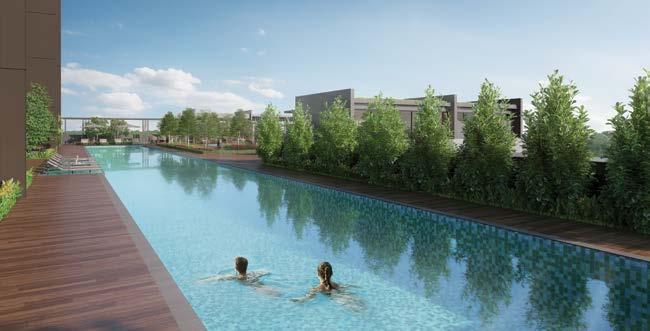
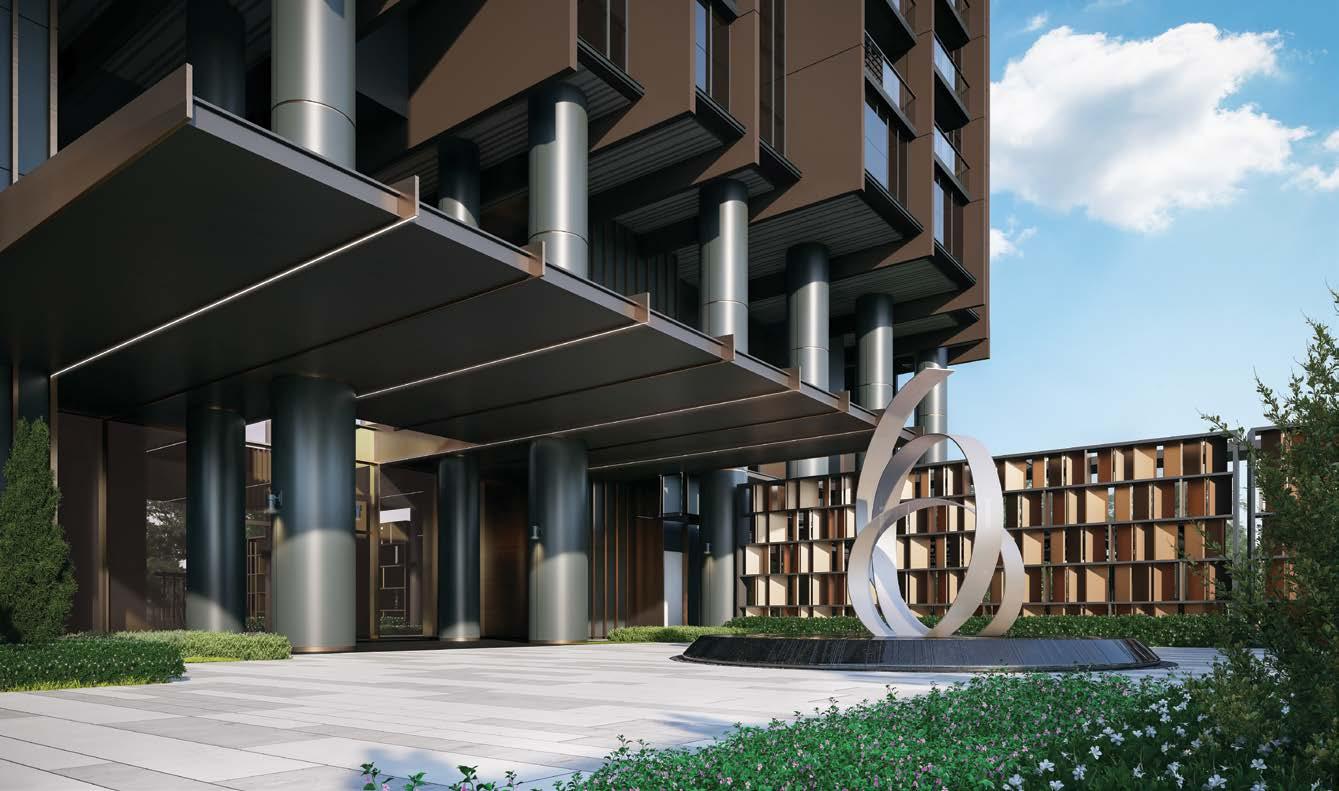
Pullman Residences, Newton residents are pampered with AccorHotels managed Concierge Services and offered the platinum membership in the Accor Ownership Benefits Program, extending residents to VVIP status globally – an incredible deal for perceptive buyers.
Pullman Residences, Newton has a wide range of facilities, catering from recreational to wellness activities. The estate represents a sublime investment opportunity for the generation’s shift into urban and green living. Upon completion, Pullman Residences, Newton would make an attractive residence for prospective home buyers and tenants, living sustainably in the heart of the city centre.
Developer: EL Development (Horizon) Pte Ltd
Product type: Apartment
Architect: ADDP Architects LLP
Launch date: November 2019
Completion date: December 2023
Total land area: 95,441.98 sq ft
Number of units: 340
Facilities: Grand Concierge Lobby; GrandDrop off; The Verandah with Teppanyaki grill; Garden Courtyard; Party Lawn; Aroma trail; Bicycle Hub; Kid’s Play; recreational Tennis court with half Basketball court; Pool deck; 50m lap pool; Aqua deck; Dining Pavilion with BBQ; Club Lounge; Wellness deck; Kid’s pool; Jacuzzi; Wellness pool; Aqua gym; Wellness gym; Steam room
Monthly maintenance fees: SGD135 per share value (subjected to changes)
Sales contact details
Tel: 8189 1690 (sales hotline)
Email: sales@eldev.com.sg
Website: www.eldev.com.sg
Address: 18 Dunearn Road Singapore 309421 (sales gallery)
134 135 ADVERTISEMENT
Pullman Residences, Newton by EL Development (Horizon) Pte Ltd BEST LUXURY CONDO ARCHITECTURAL DESIGN WINNER Pullman Residences, Newton by EL Development (Horizon) Pte Ltd BEST LUXURY CONDO INTERIOR DESIGN WINNER Pullman Residences, Newton by EL Development (Horizon) Pte Ltd BEST LUXURY CONDO DEVELOPMENT WINNER Pullman Residences, Newton by EL Development (Horizon) Pte Ltd BEST LUXURY CONDO LANDSCAPE ARCHITECTURAL DESIGN WINNER
FACT BOX
The Hyde Balmoral Road, Singapore

Developed by award-winning developer Aurum Land, The Hyde is a collection of 117 rare freehold homes in one of Singapore’s most coveted districts – Balmoral Road.

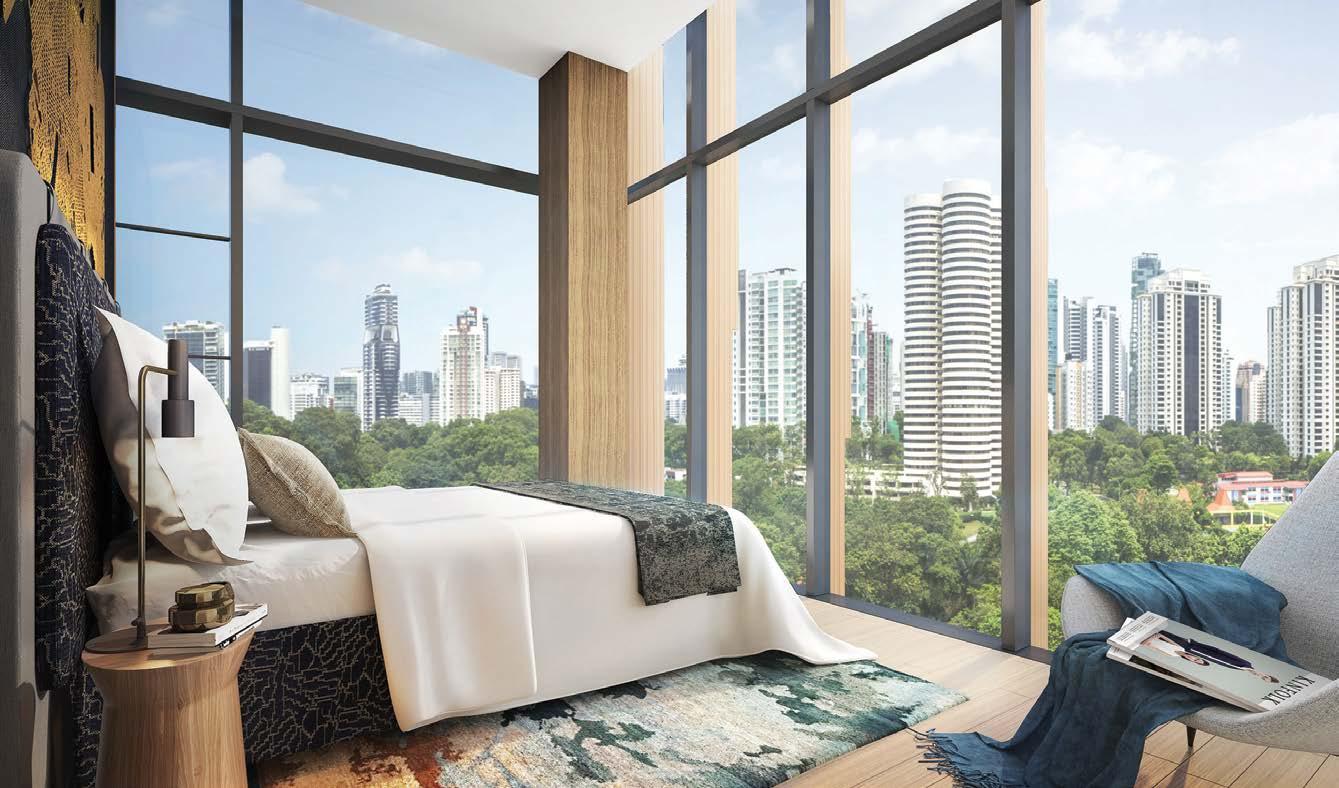
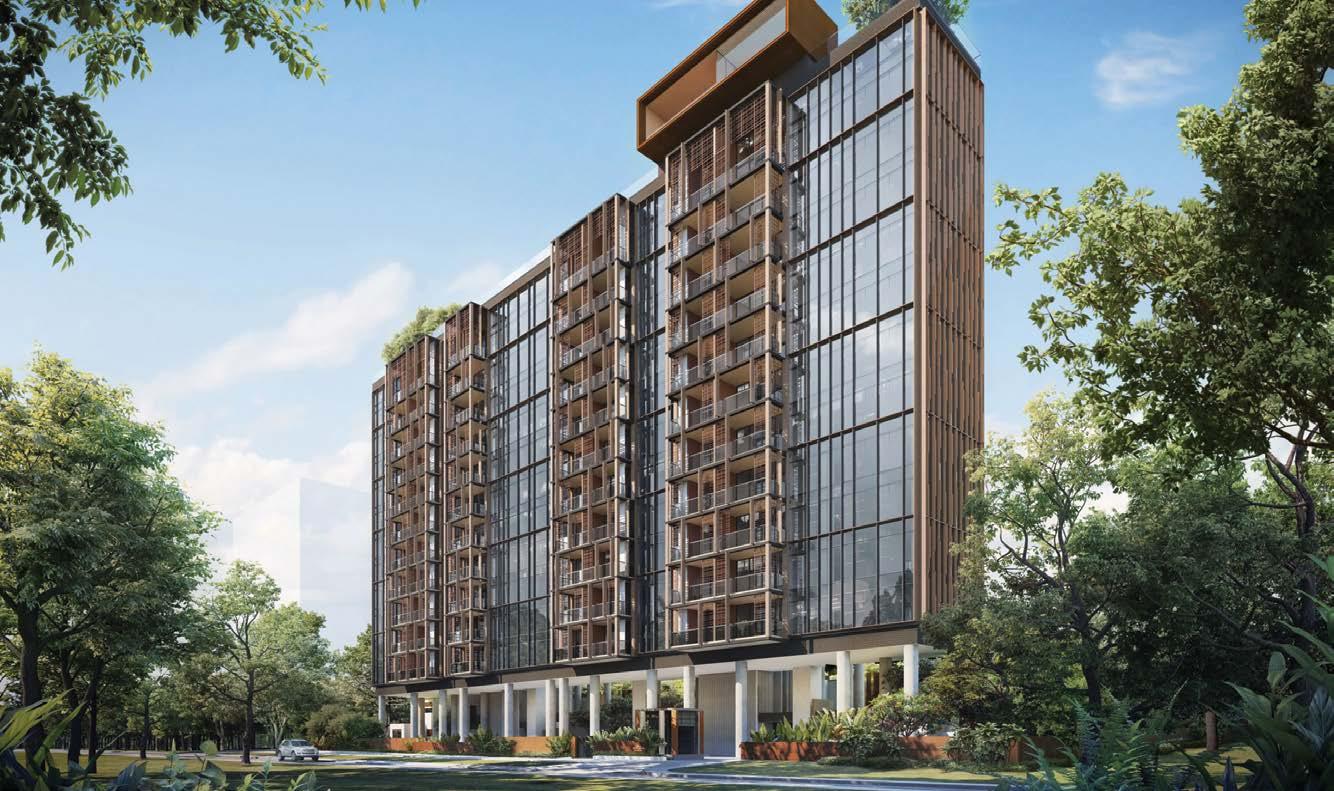
Tucked away from the bustle of the city in Goodwood Hill, The Hyde makes a living statement of art. The development takes inspiration from the avant-garde approach of the Serpentine Pavilions in London’s Hyde Park.
The Hyde stands out with its sleek, sculptural and distinctive profile. A terraced garden, grand pillars, and contemporary lines endow the project an air of quiet privilege. It features full height glazed façades and sashless windows that translate into uninterrupted and expansive views.
Property seekers have a choice of oneto four-bedroom types unit ranging from 495 sq ft to 1,798 sq ft in size. Each apartment is fitted with fine fixtures and
fittings from Gessi and Laufen, as well as kitchen appliances by De Dietrich. Textured finishes, from natural oak timber flooring to fine marble, bring the verdant beauty of Goodwood Hill into the abode.
The Hyde is meticulously landscaped with lush tropical foliage to provide subtle screening. The development is designed as an aesthetic construct balancing harmoniously against a backdrop of abundant nature, with sleek clean lines complementing the park-like surroundings. Boasting a high green plot ratio and including fine specimens of heritage trees, The Hyde is truly an enclave of greenery.
In addition, The Hyde offers diplomat-level privacy to homeowners and guests through smart home systems with multiple levels of security. It also offers modern amenities like a smart-parcel collection station as well as concierge services.
Developer: Aurum Land (Private) Limited
Product type: Condominium
Architect: FDAT Architects LLP
Launch date: June 2019
Target completion date: Q2 2022
Total land area: 6,220 sqm (66,951 sq ft)
Number of units: 117
Average unit size: 886 sq ft
Facilities: The Plaza, The Lawn, Constellation Pool, Sky Deck, Sky Pool, Sky Club, Sky Garden, Playroom, Gymnasium, BBQ Pavilion, Poolside Cabanas, Sun Lounge Deck, Rain Shower, Secret Pool & Jacuzzi, Garden Club, Yoga Deck, Lawn Sculpture, Boardwalk, Wading Pool, Social Pavilion, Playground, Concierge, Bicycle Parking, and more
Monthly maintenance fees: From S$400
Price range: From SGD$1.38m
Sales contact details: Tel: +65 6465 8887
Email: enquiry@aurum.sg
Address: The Hyde Sales Gallery at 131A King’s Road
136 137 ADVERTISEMENT
FACT BOX
Limited BEST BOUTIQUE CONDO ARCHITECTURAL DESIGN WINNER
The Hyde by Aurum Land (Private)
Diamond Centery
Tan Phu District, Ho Chi Minh City
Diamond Centery is a high-end condo development along N1 Road in the Son Ky Ward of Ho Chi Minh City. The project occupies a strategic site in Celadon City, the massive green urban township masterplanned by Gamuda Land (HCMC) Joint Stock Company.

The development is designed like a beach resort in the city, providing property seekers an oasis-like refuge from the bustle of HCMC. It is filled with a range of high-class, resort-style facilities and services, the highlight of which is a complex of swimming pools suited for residents of all ages. The development offers a variety of water experiences, such as a shallow swimming pathway, wading pool, coastal pool, waterfall pool’s edge, and jacuzzi, as well as in-water furnishings like the hydrotherapy bed and ledge lounger.
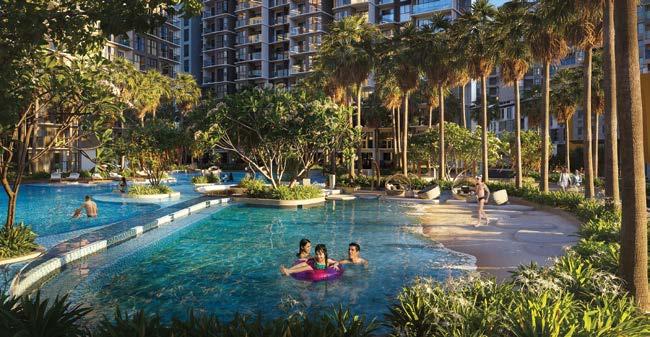

Kids will adore the saltwater pool with a sand park that simulates the feel of a beach, while fitness buffs will appreciate the “below-the-sea” gym and aquatic yoga centre.
With Diamond Centery, Gamuda Land aims to uphold sustainable living values by giving residents abundant
green spaces. The landscaped central park, with its unique pavilion courtyard, is a focal point of the project.
Diamond Centery’s communal amenities are geared toward cosmopolitan living. Indoors, residents can take advantage of a clubhouse, with a function hall, party house, co-working space, library, games room, gymnasium, yoga or dance room, and day care centre. The project also offers retail spaces, a cafeteria, and even a grocery store. It is also home to a lifestyle lounge and beauty salon.
Residents can take a few swings at the nearby Royal Centery golf club or savour delicacies at the Chef’s Choice kitchen.
Developer: Gamuda Land
Product type: Condominium
Architect: Indochine + Neo Classic

Launch date: May 2020
Expected completion date: 2023
Total land area: 2.82ha
Number of units: 746
Unit size: 79-270.5 sqm
Facilities: Swimming pools, saltwater pool, sand park, below-the-sea gym, aquatic yoga centre, central park, clubhouse, retail spaces, lifestyle lounge, beauty salon, sky garden
Monthly maintenance fees: $3,500-4,000
Sales contact details: Tel: +84 90.334.0888
Email: khang.nguyenminh@gamudaland.com.my; trung.nguyentuan@gamudaland.com.my
Address: No. 68, N1 Road, Son Ky Ward, Tan Phu District
138 139 ADVERTISEMENT
FACT BOX Diamond Centery by Gamuda Land HCMC JSC. BEST HIGH END CONDO LANDSCAPE ARCHITECTURAL DESIGN WINNER Diamond Centery by Gamuda Land HCMC JSC. BEST HIGH END CONDO DEVELOPMENT (HCMC) HIGHLY COMMENDED Diamond Centery by Gamuda Land HCMC JSC. BEST CONDO ACRHITECTURAL DESIGN HIGHLY COMMENDED Diamond Centery by Gamuda Land HCMC JSC. BEST HIGH END CONDO INTERIOR DESIGN HIGHLY COMMENDED
Diamond
Lotus Riverside Le Quang Kim Street, Ho Chi Minh City
Diamond Lotus Riverside is a luxury three-tower condominium development in District 8 of Ho Chi Minh City. Developed by Phuc Khang Corporation, one of the most reputable development companies in Vietnam, the project is situated just a few minutes from the central business district; Binh Thanh district; and Districts 2, 5, and 7.
Diamond Lotus Riverside is a a rare project in that it is facing the river on three sides; this proximity to the river ensures a constant circulation of fresh air around the towers. The three blocks that comprise the project are set in a north-south orientation, further optimising natural ventilation.
The balcony facades are covered with soft, verdant vegetation, making the project even airier and greener. A “green icon in the heart of Saigon”,
it is set to become one of the city’s greenest buildings yet, on track to achieve LEED Gold certification.
The project hosts its own unique facilities, including a lap pool, river park, kindergarten, and even a floating restaurant. Boasting a Singaporeanstyle architecture, the three towers connect to each other through the Sky Park – a relaxing green space for residents that is set on the first aerial cable-stayed bridge in Vietnam. The project also features landscaping that takes inspiration from the spectacular terraced fields in Vietnam’s Northern Mountains.
Diamond Lotus Riverside is envisioned as a meeting place of eastern and western cultures. The development is set on land endowed with very good Fengshui, bringing to families and other residents a peaceful, happy life.
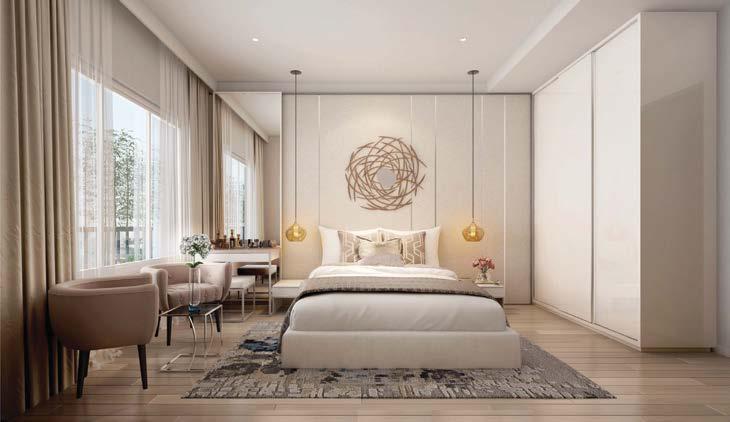


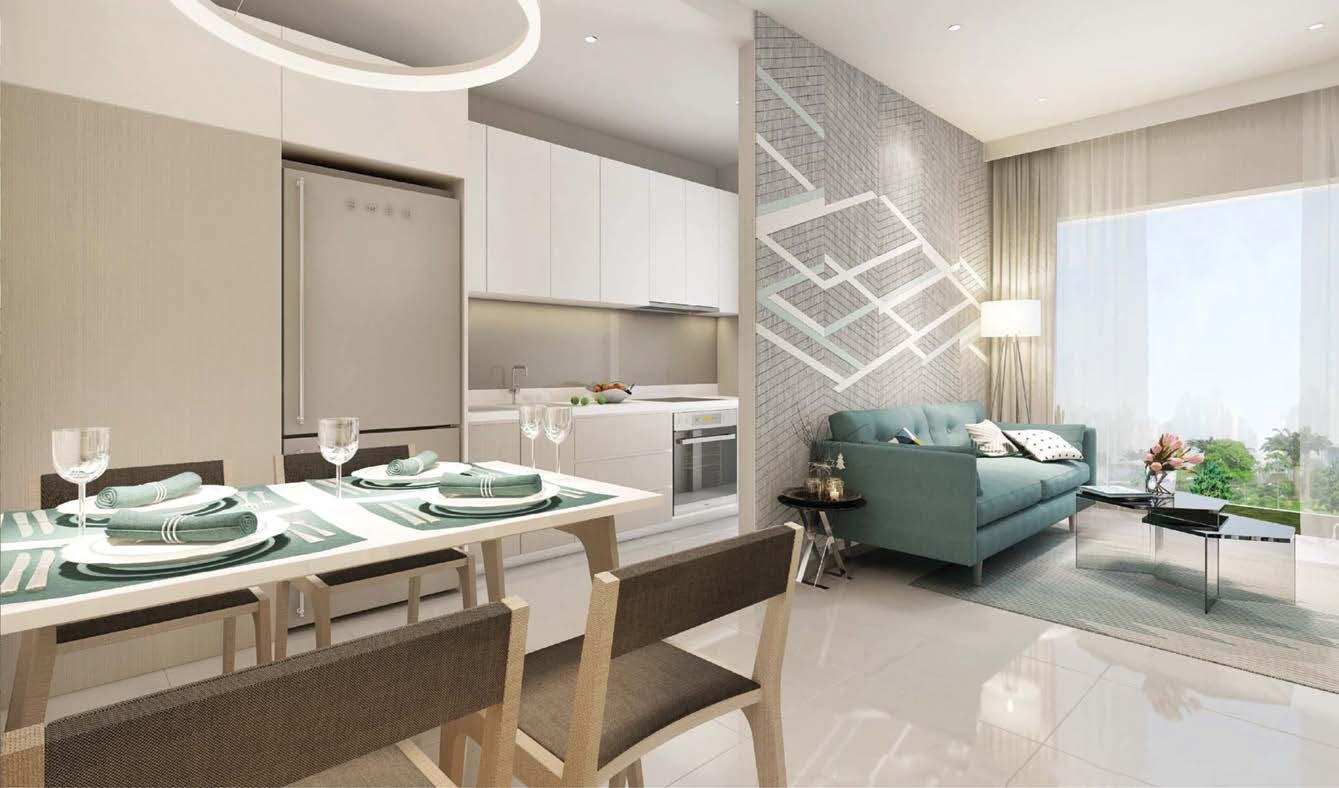
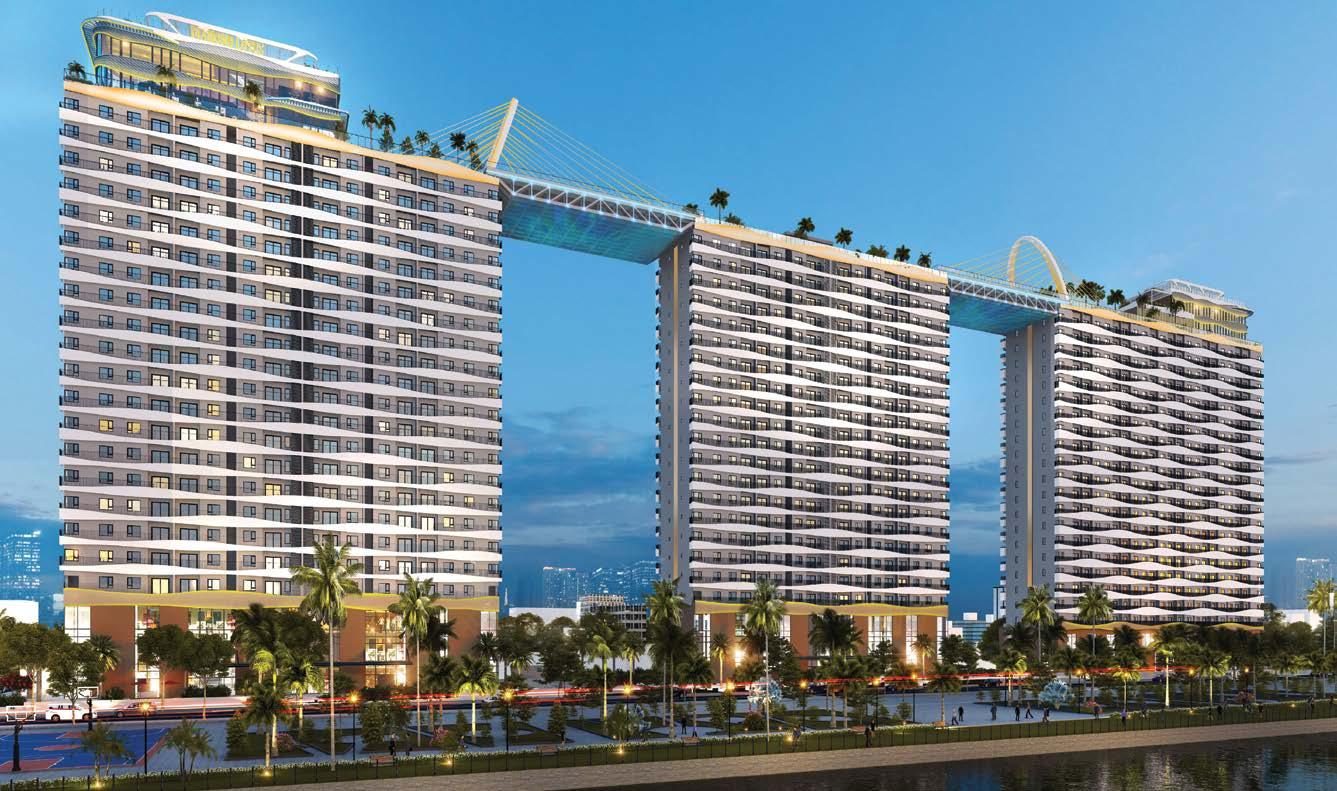
Developer: Phuc Khang Corporation
Product type: Condominium
Architect: Coteccons/N.Q.H
Launch date: September 2016
Completion date: January 2020
Total land area: 67,242.2 sqm
Number of units: 760
Average unit size: 49-73 sqm
Facilities: Sky park, marina, club, floating restaurant, swimming pool, coffee shop, gym, clubhouse, wonderland, kindergarten, supermarket, tropical park
Monthly maintenance fees: USD0.70 per sqm
Price range: VND 52M per sqm
Sales contact details: Tel: +84901797988
Email: tuongnhm@phuckhang.vn
Address: 42 Mac Dinh Chi, Da Kao District, Ho Chi Minh City,Vietnam
140 141 ADVERTISEMENT
Diamond Lotus Riverside by
BEST CONDO LANDSCAPE ARCHITECTURAL DESIGN HIGHLY COMMENDED Diamond Lotus Riverside by Phuc Khang Corporation BEST RESIDENTIAL GREEN DEVELOPMENT HIGHLY COMMENDED
Phuc Khang Corporation
FACT BOX
FOR YEARS, THE VERDANT RICE PADDIES AND JUNGLES OF UBUD HAVE BEEN THE SETTING FOR VILLAS AND RESORT RESIDENCES IN VARYING DEGREES OF LUXURY, WITH MANY BOASTING INTERNATIONAL HOTEL BRAND AFFILIATIONS. HOMES IN THE INLAND BALINESE TOWN COULD FIND MORE OVERSEAS TAKERS AFTER LAST YEAR’S PASSAGE OF THE OMNIBUS LAW, WHICH STANDS TO FURTHER LOOSEN FOREIGN PROPERTY OWNERSHIP CONTROLS IN INDONESIA, AMONG OTHER PROVISIONS

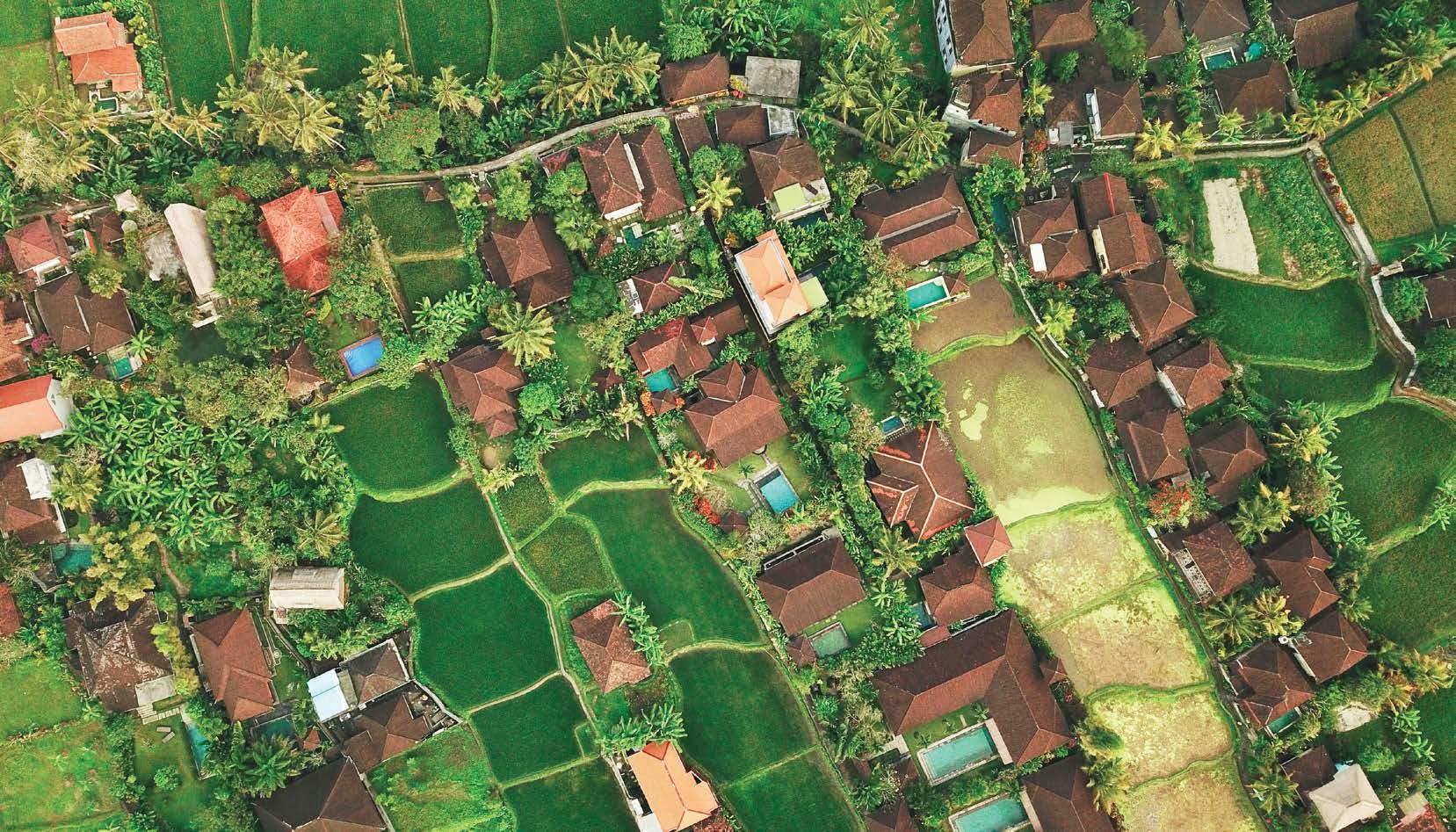
142
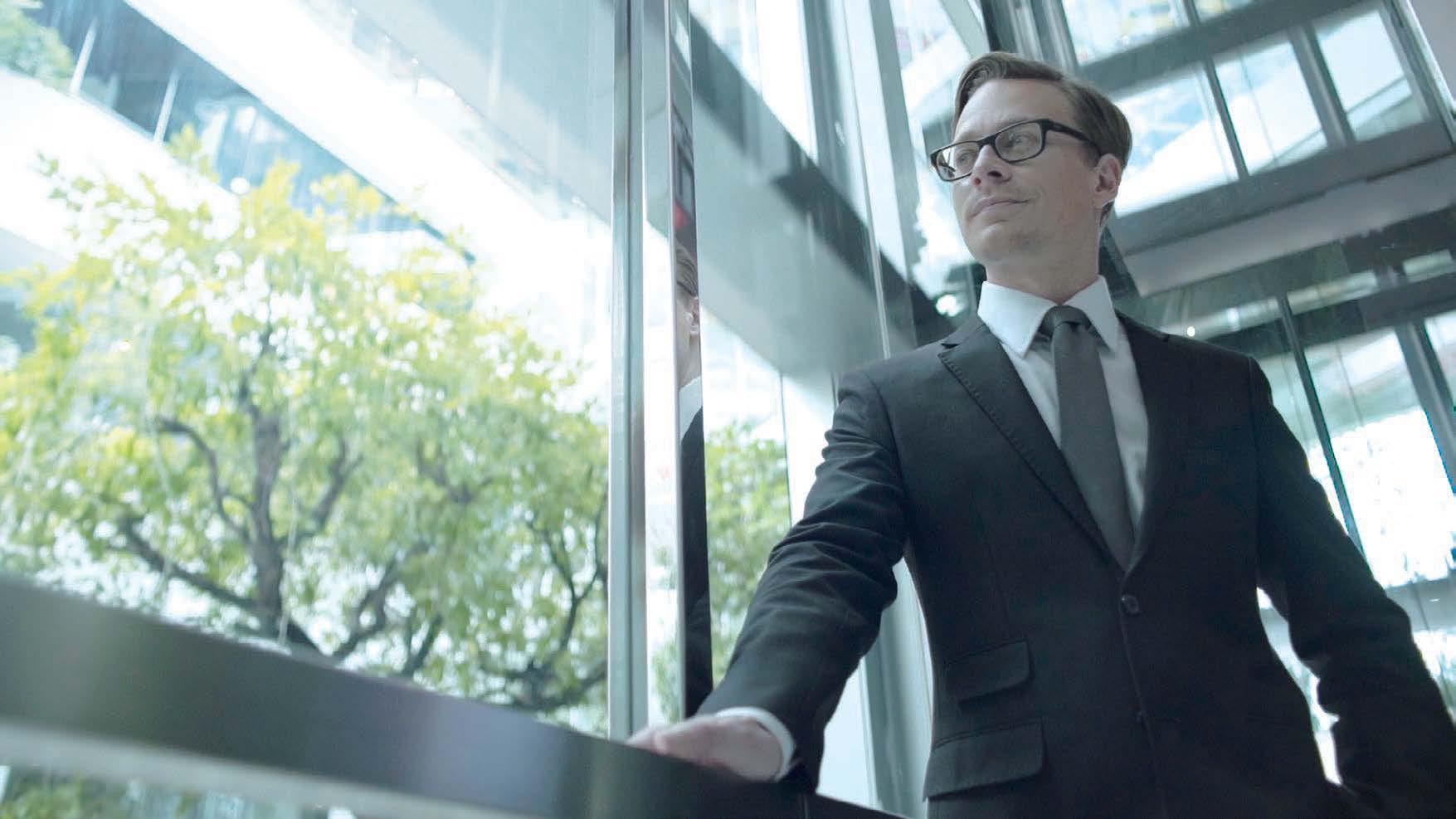
144













































































































 Yorkville - The Ring Chongqing, China
MixC IMAX - Flagship in Shenzhen Bay Shenzhen, China
Timeless City Chengdu, China
Yorkville - The Ring Chongqing, China
MixC IMAX - Flagship in Shenzhen Bay Shenzhen, China
Timeless City Chengdu, China















































 BY AL GERARD DE LA CRUZ
BY AL GERARD DE LA CRUZ





 BY BILL BREDESEN
BY BILL BREDESEN

























 BY AL GERARD DE LA CRUZ
BY AL GERARD DE LA CRUZ



 BY GEORGE STYLLIS
BY GEORGE STYLLIS

































